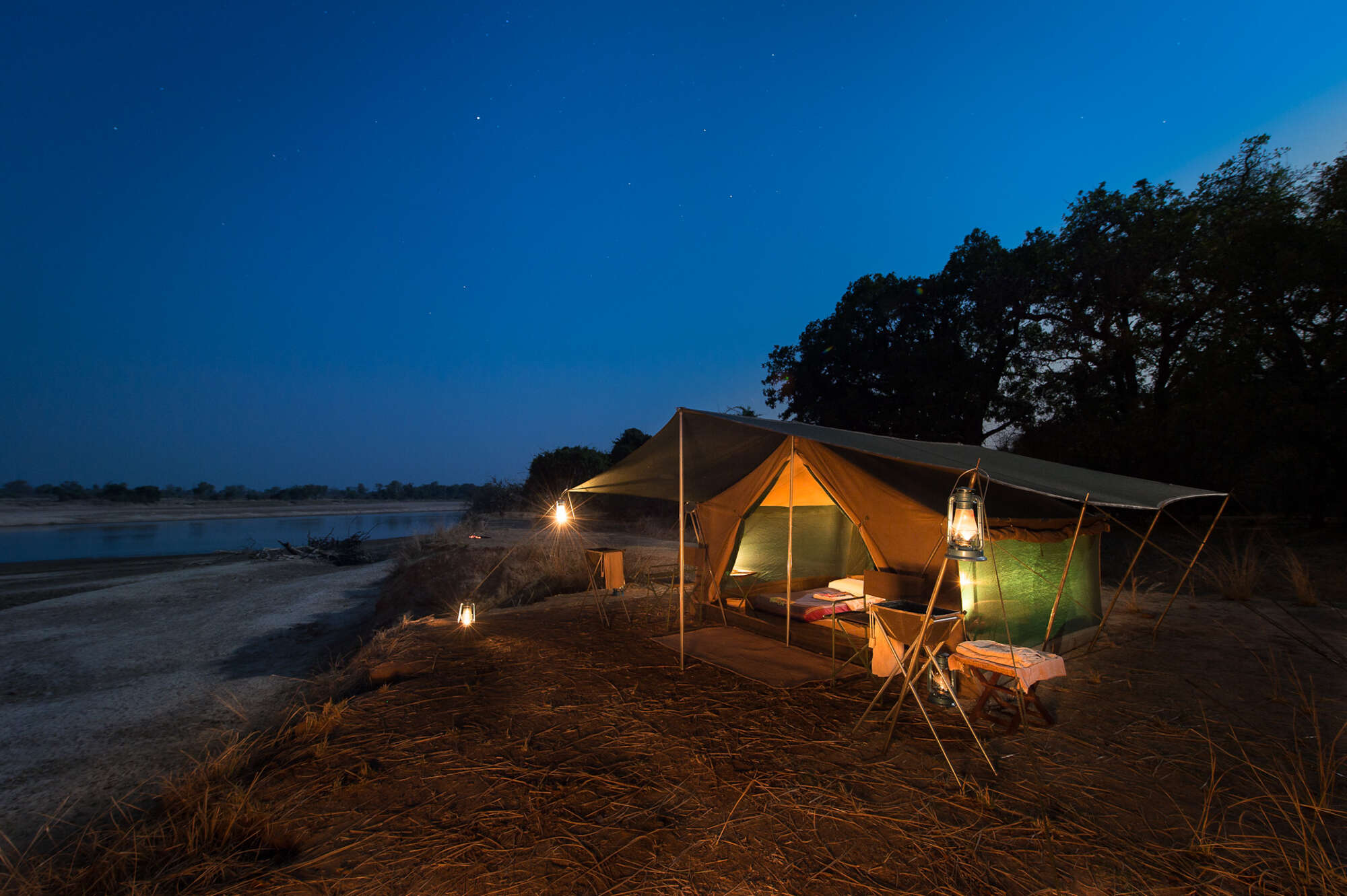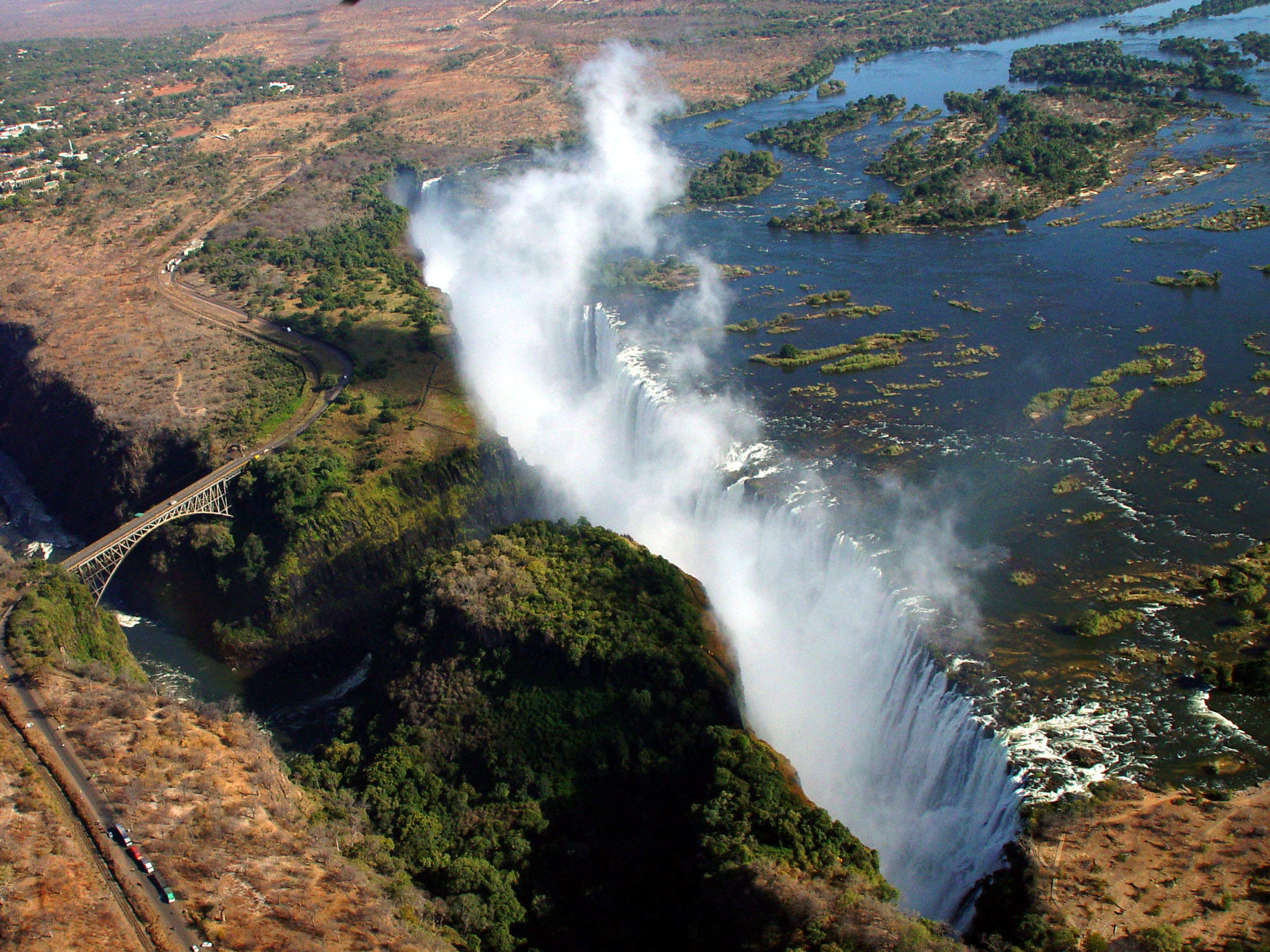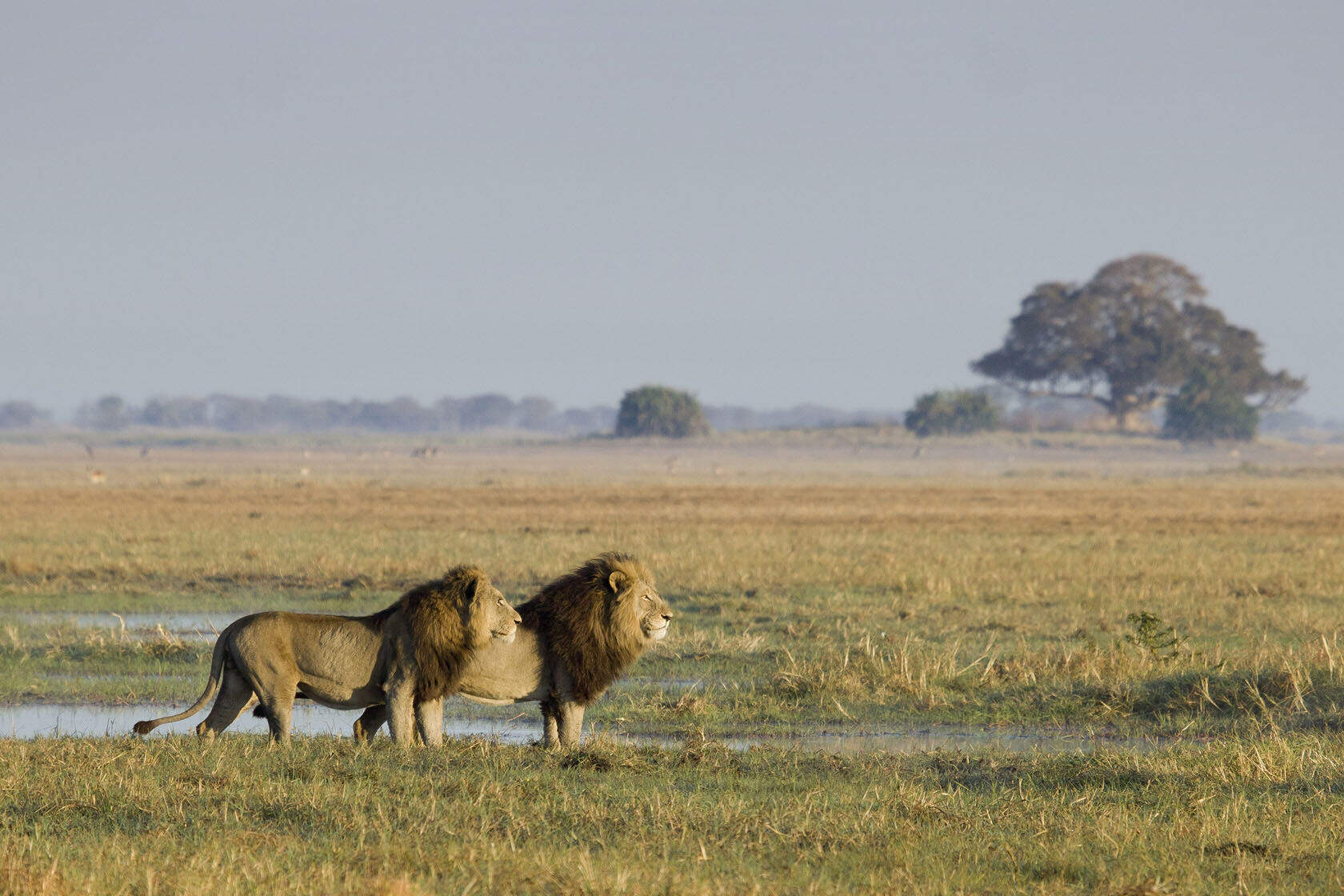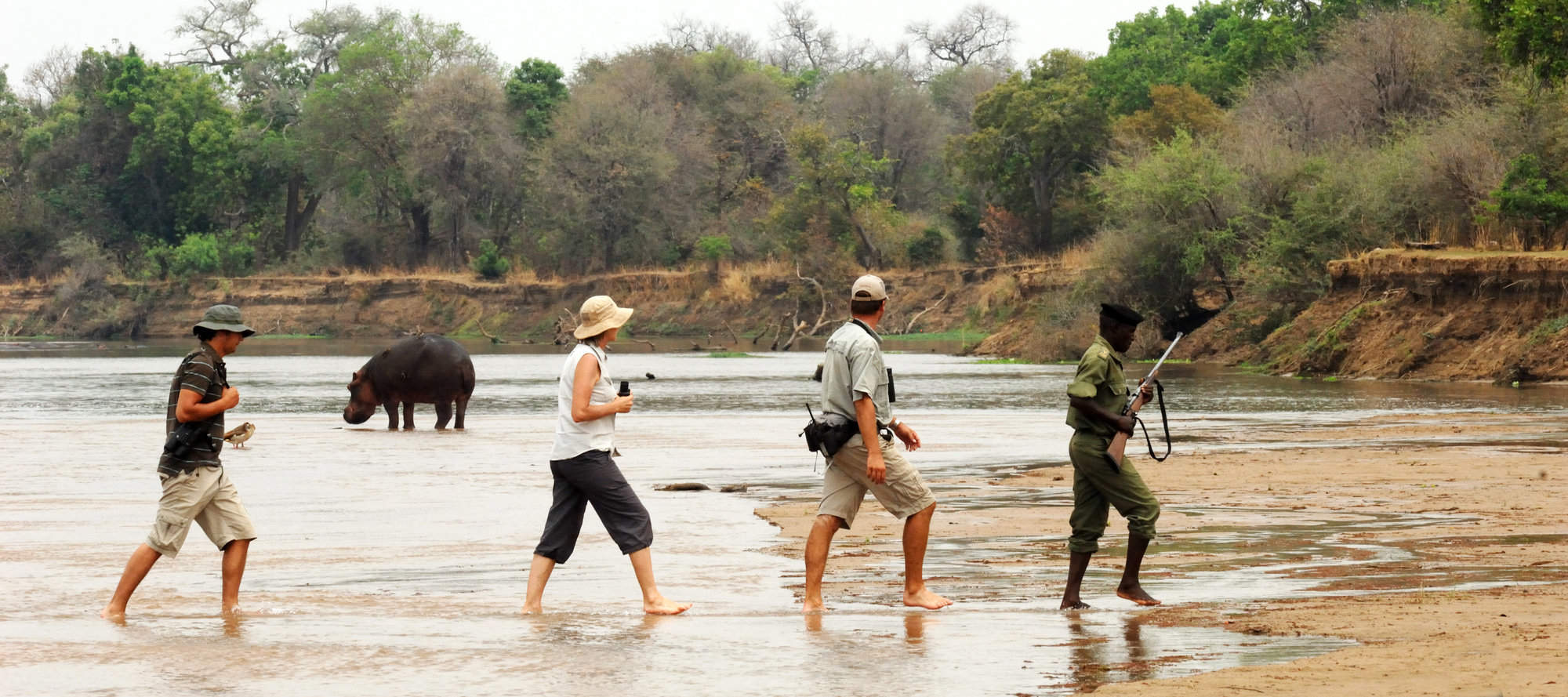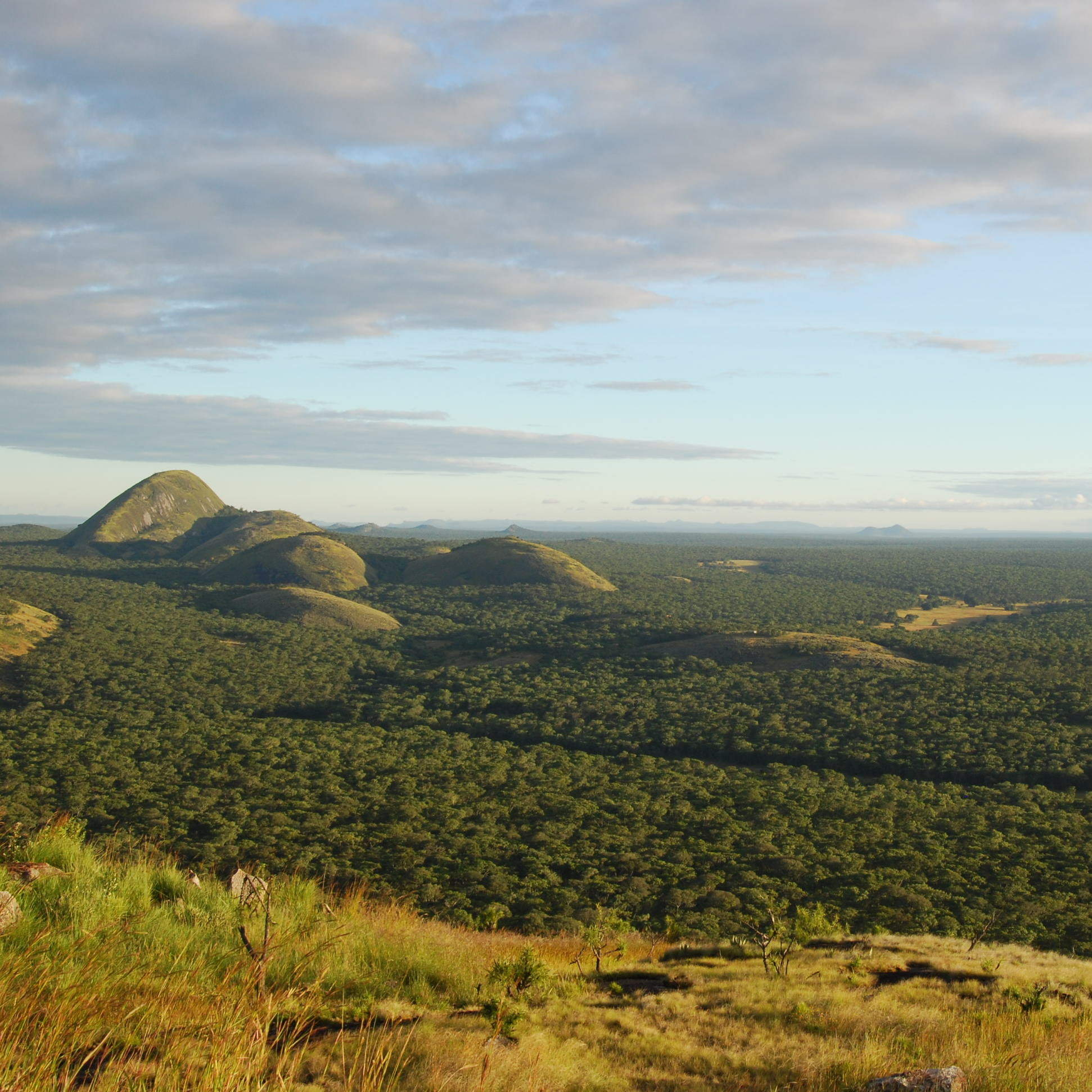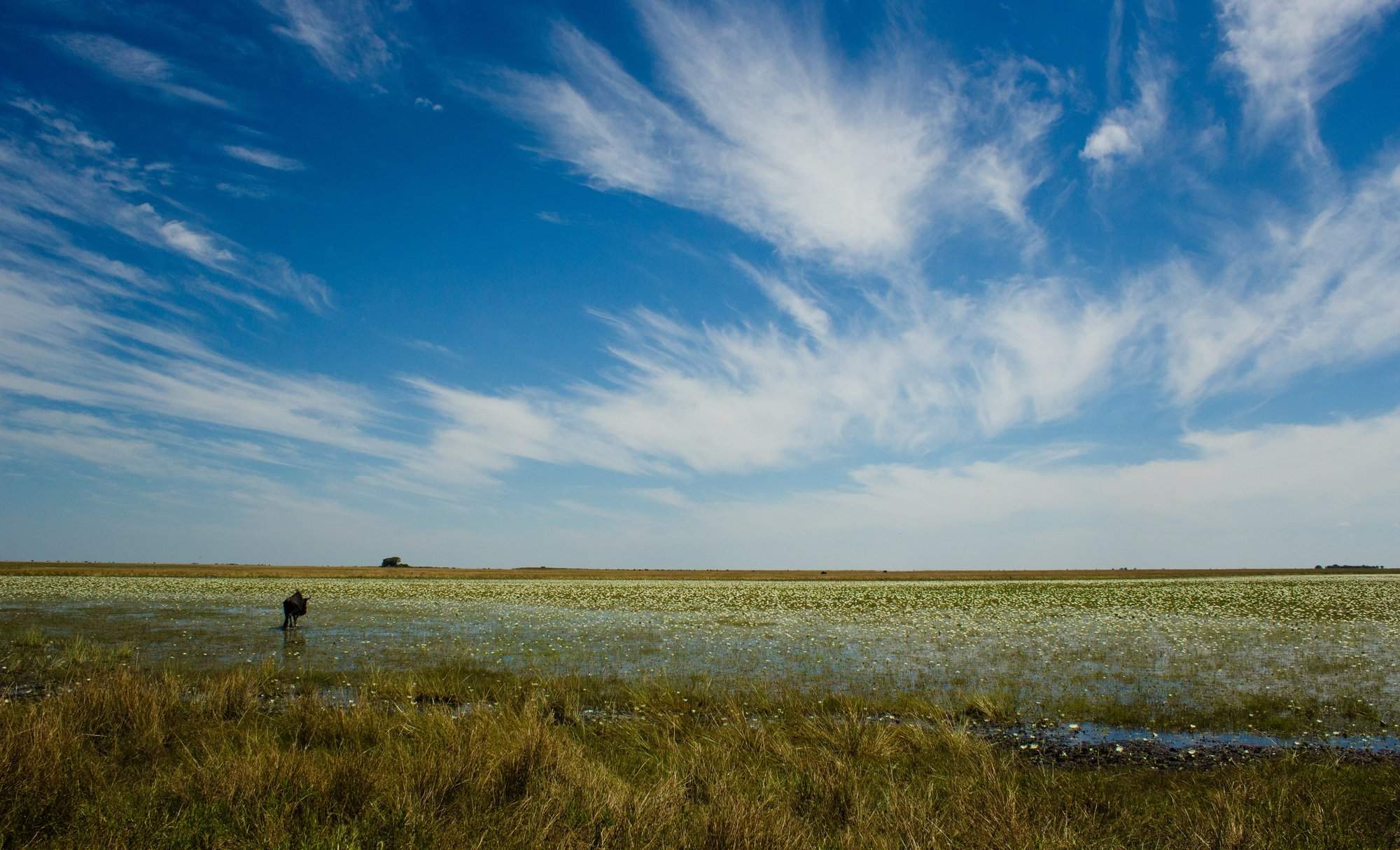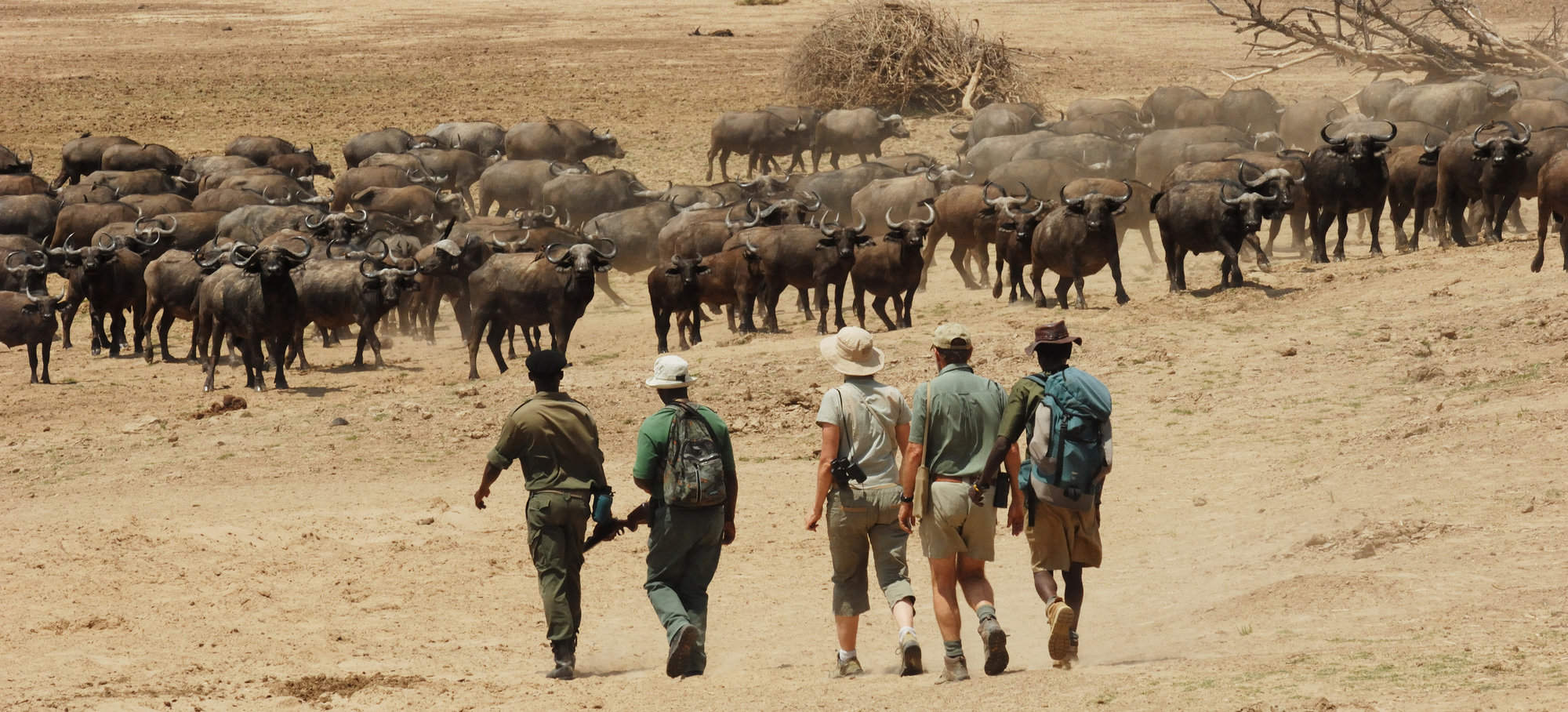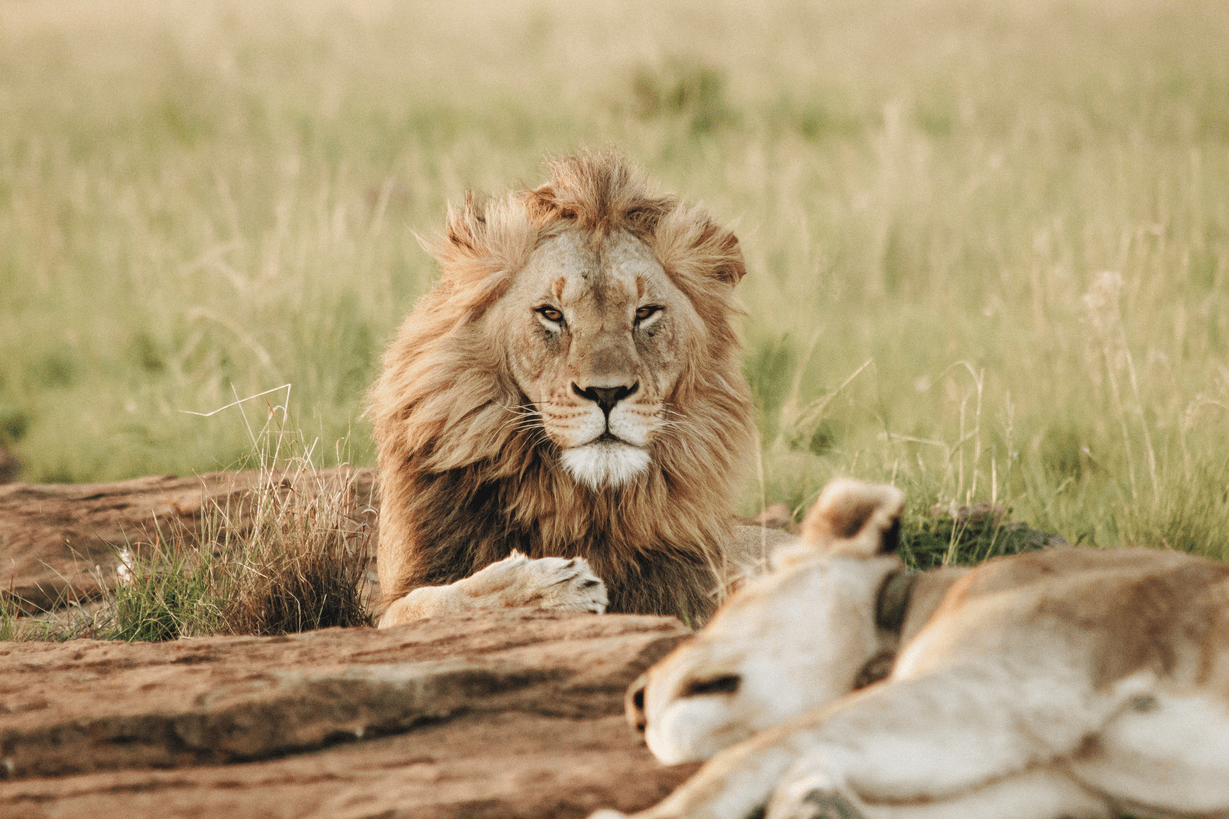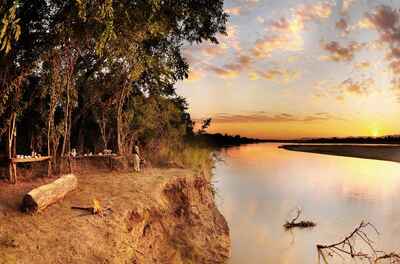
Breakfast as the sunrises over the Luangwa
Harmony in the South Luangwa
We're not the only inquisitive ones ...
A public display of affection ...
The daily newspaper, reading lastnight's spoor
It's a whole new day ...
Zambia, renowned for it's walking safaris
Perfect photographic opportunities ...
Sunset views from Tafika Camp
Nsefu Camp
South Luangwa National Park
South Luangwa National Park
Fanning out on either side of the Luangwa River, fertile plains are dotted with grazing animals – no hint of incipient danger.
With lush grass, shallow lakes, shrubby bush and stands of trees spreading to the escarpment, the setting is almost pastoral. But in a world where every tree can be a hiding place, every bush can morph into a lion, appearances can be deceptive. Despite the apparent calm, these animals are on high alert – with the odds stacked increasingly against them as the dry season progresses.
Equally alert are highly trained guides, their safari-going visitors safely ensconced – by day or by night – within sturdy, open-topped 4WDs, or exploring on foot, accompanied by an armed guard and a pounding heartbeat. In the South Luangwa, where walking safaris began, this is still the ultimate thrill for the adventurous safari goer.
While the park’s original camps are still going strong, others have joined them, from the rustic to the sophisticated, the budget to the truly exclusive, the accessible to the remote.
For many, ease of access is key. Just a short drive from the airport, a plethora of lodges cluster around the main Mfuwe gate: you don’t have to go far in search of wildlife. But the further away you go, the more intimate your safari experience – whether on a self-drive safari, with a mobile expedition, or in one of the more isolated camps.
Some camps are geared entirely to walking. Others specialise in photography, with purpose-built hides and specially trained guides. Still others offer chandeliered splendour, or focus on families, or even camping.
But all have wildlife at their heart, from the diversity of tropical birds – at their peak during the “emerald” or rainy season – to the magnificent array of animals that find food and shelter in this exceptional park. Whatever your budget, they are the constant of the South Luangwa.
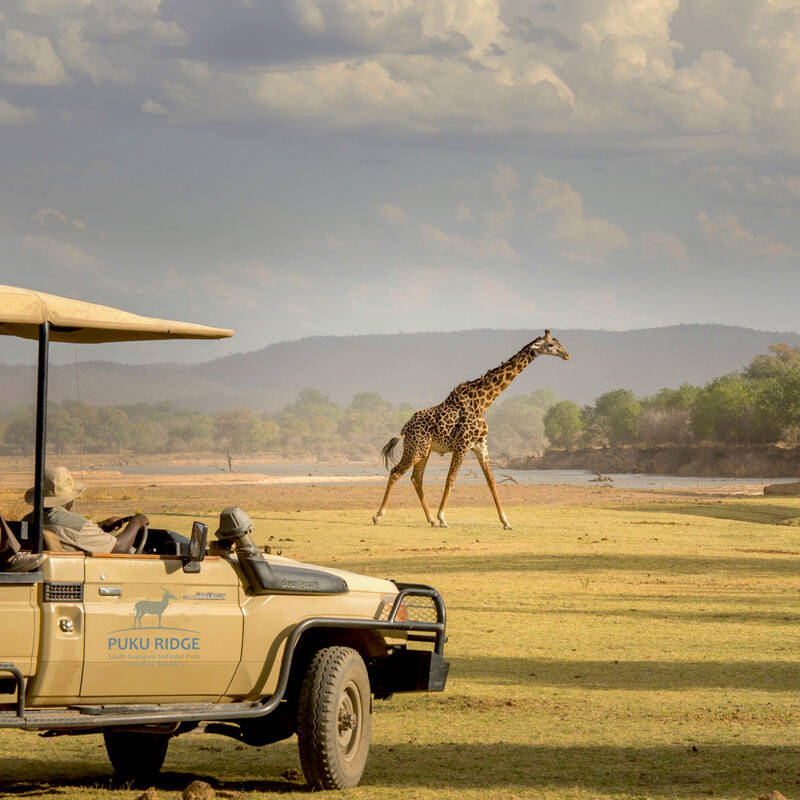
Safaris visiting South Luangwa
Zambia’s most popular park for safari holidays is the South Luangwa - and this is reflected in the large number of safaris that we feature. A few of these trips also incorporate Zambia’s Lower Zambezi National Park, or the Livingstone & Victoria Falls, but many of them focus entirely on the Luangwa Valley.
Often we suggest visiting sister-camps that are run by the same operator, which helps to make the trips the best value possible, as well as offering greater continuity throughout the trip.
The best South Luangwa safari is the one that works for you. Our top suggestions range from a week in a series of small, remote lodges, or in highly individual owner-run camps, to one where you will walk between specialist bushcamps.
There’s also the option of a full mobile walking safari – the ultimate adrenalin-inducing trip!
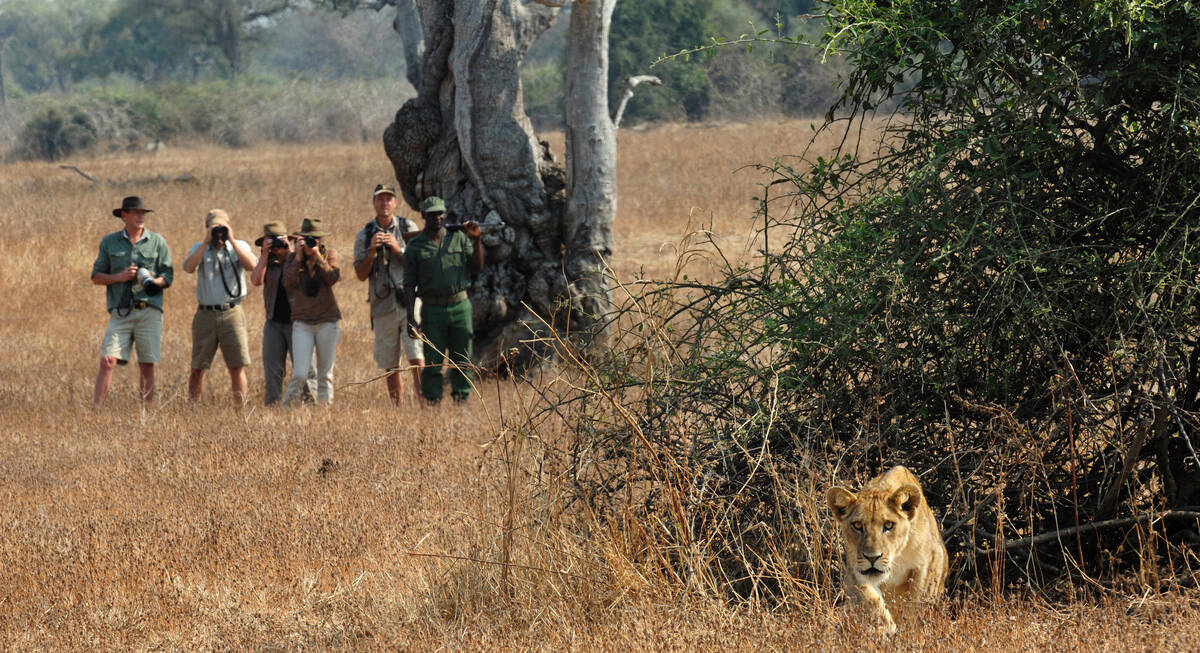
Perekani Walking Trail
10 days • 5 locations
LUSAKA AIRPORT TO LUSAKA AIRPORT
Five smart but rustic bushcamps are the comfortable staging posts for this walking safari in South Luangwa. The route offers outstanding seclusion and rich wildlife with top-quality guiding throughout.
US$9,590 - US$12,210 per person
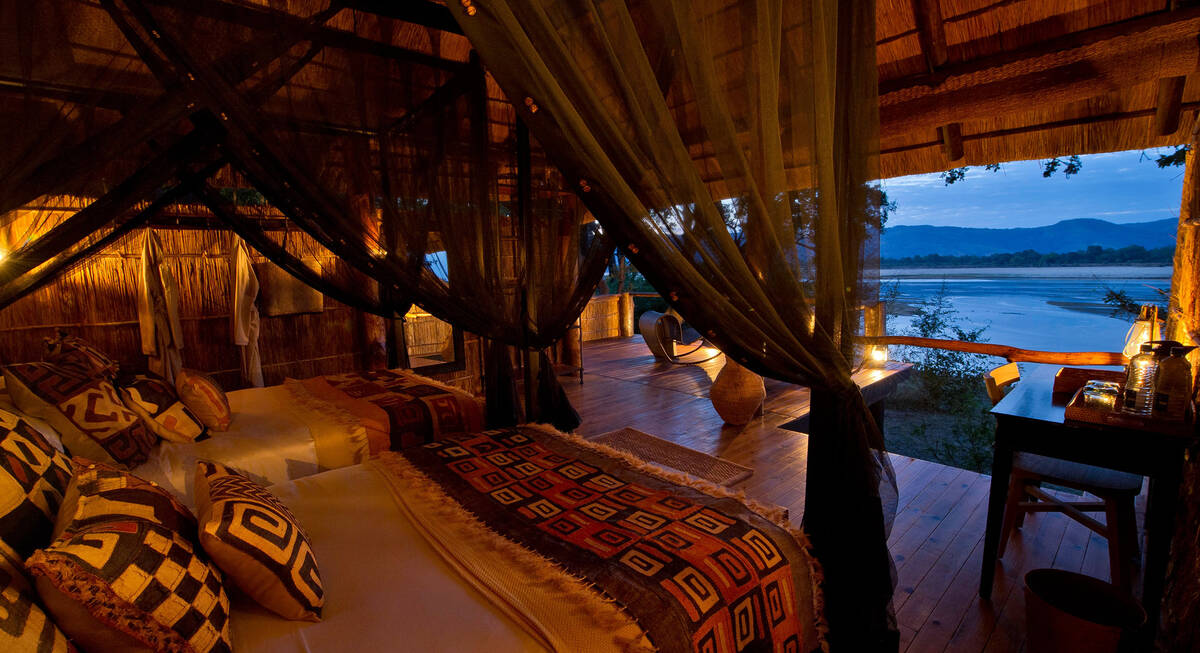
Civet Safari
9 days • 4 locations
LUSAKA AIRPORT TO LUSAKA AIRPORT
Combining three intimate bushcamps in the quieter south of the South Luangwa, this safari will appeal to those looking for an interesting mix of walking and vehicle safari.
US$8,490 - US$9,970 per person
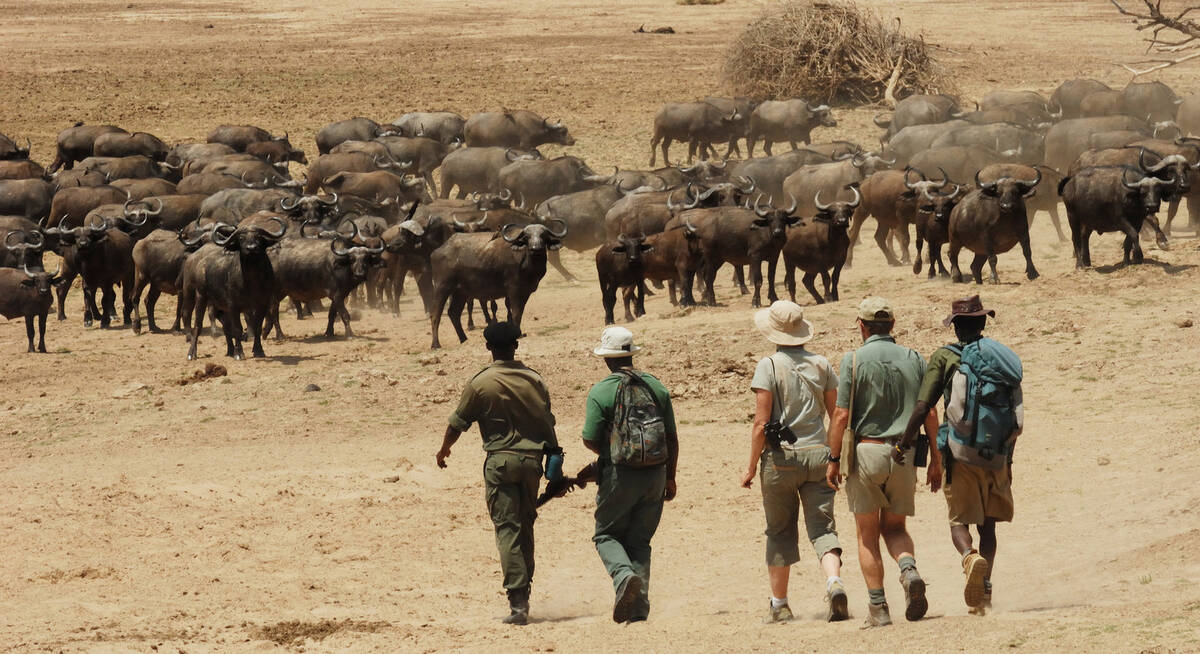
Scrub Hare Safari
7 days • 3 locations
LUSAKA AIRPORT TO LUSAKA AIRPORT
Camps run by welcoming owners with a passion for their environment are rare, and Tafika is one of the best. Combine this with walking safaris at equally excellent bushcamps for the best of the South Luangwa.
US$6,290 - US$7,630 per person
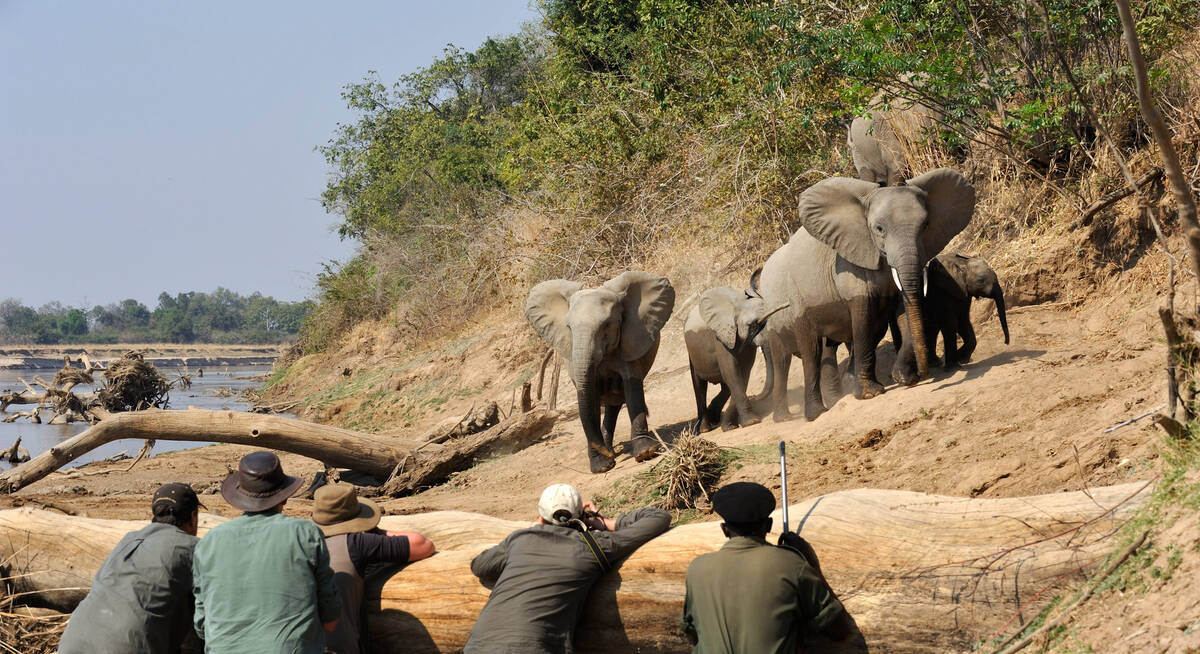
Boehm's Zebra Safari
7 days • 2 locations
LUSAKA AIRPORT TO LUSAKA AIRPORT
This safari combines two high-quality owner-run camps in a very productive region of the South Luangwa. The guiding is excellent and with its hides this safari is perfect for serious photographers.
US$7,490 - US$9,410 per person
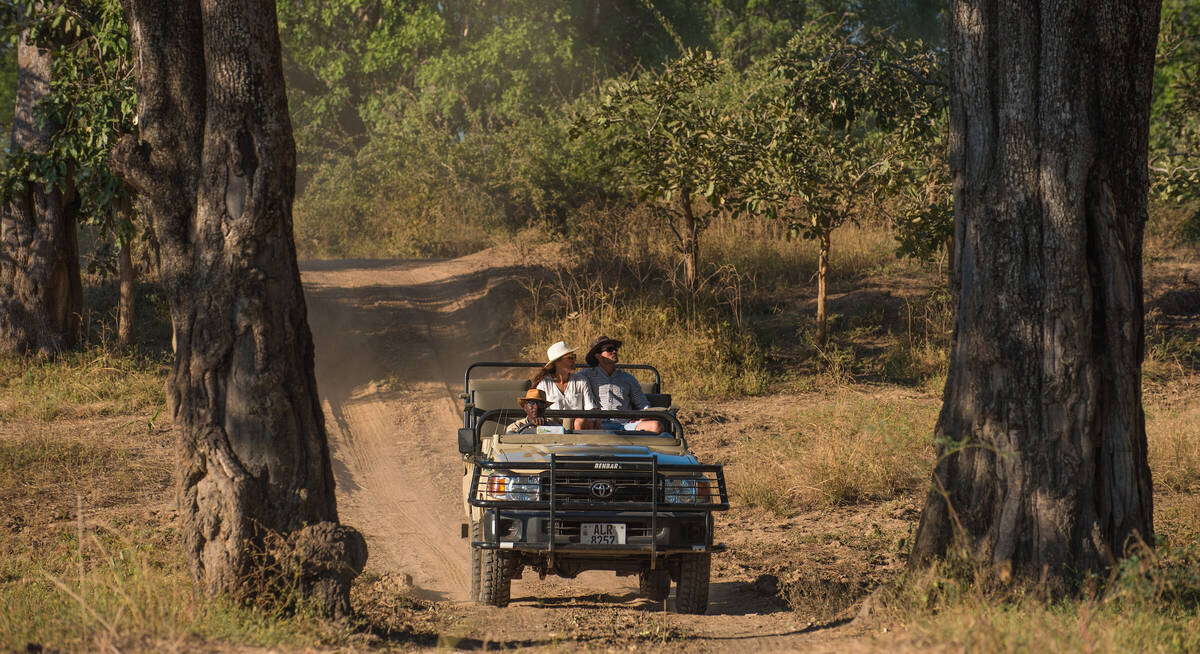
Hippo Safari
10 days • 4 locations
LUSAKA AIRPORT TO LIVINGSTONE AIRPORT
Combining excellent game with aspects of remoter safari in South Luangwa, as well as the cultural delights of Livingstone, this trip also makes use of long-stay discounts, making it an excellent-value and well-rounded adventure.
US$7,360 - US$8,780 per person
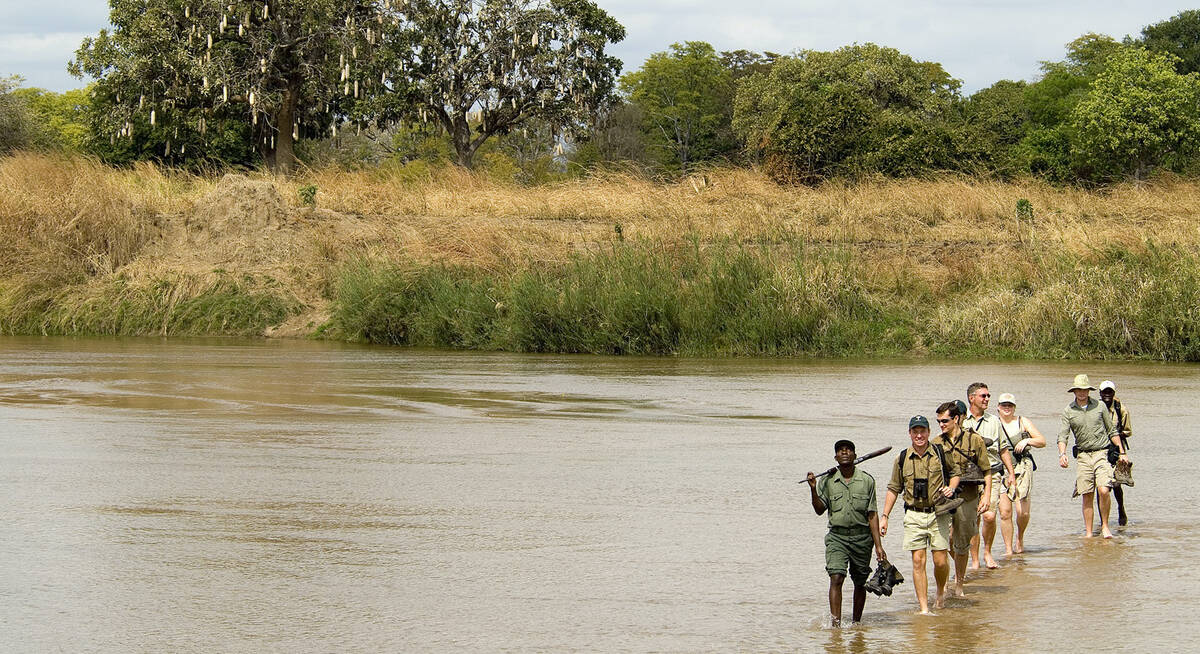
Robin Pope Walking Safari
7 days • 3 locations
LUSAKA AIRPORT TO LUSAKA AIRPORT
The definitive, original mobile walking safari; explore the remote north of the South Luangwa on foot while staying in a simple mobile camp that moves with the group.
US$7,370 - US$8,500 per person
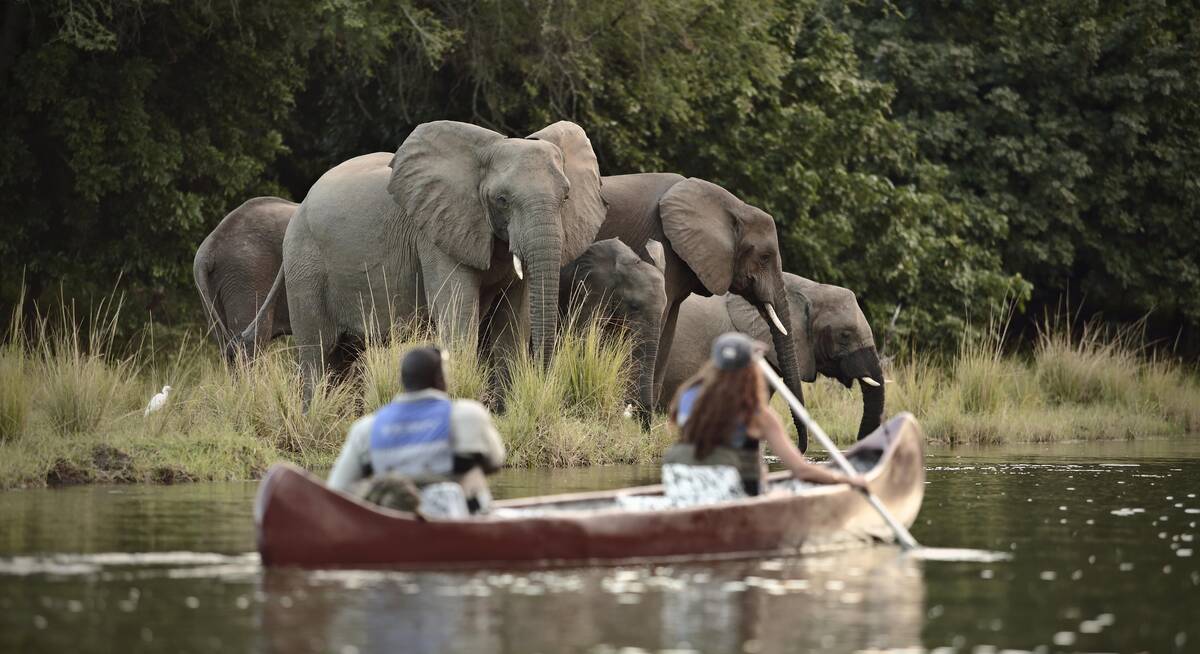
Duiker Safari
10 days • 3 locations
LUSAKA AIRPORT TO LUSAKA AIRPORT
Three luxurious bushcamps in stunning riverside locations, split between the South Luangwa and Lower Zambezi national parks, offer a wide variety of expert-guided safari activities in stunning game-rich environments.
US$10,960 - US$14,470 per person
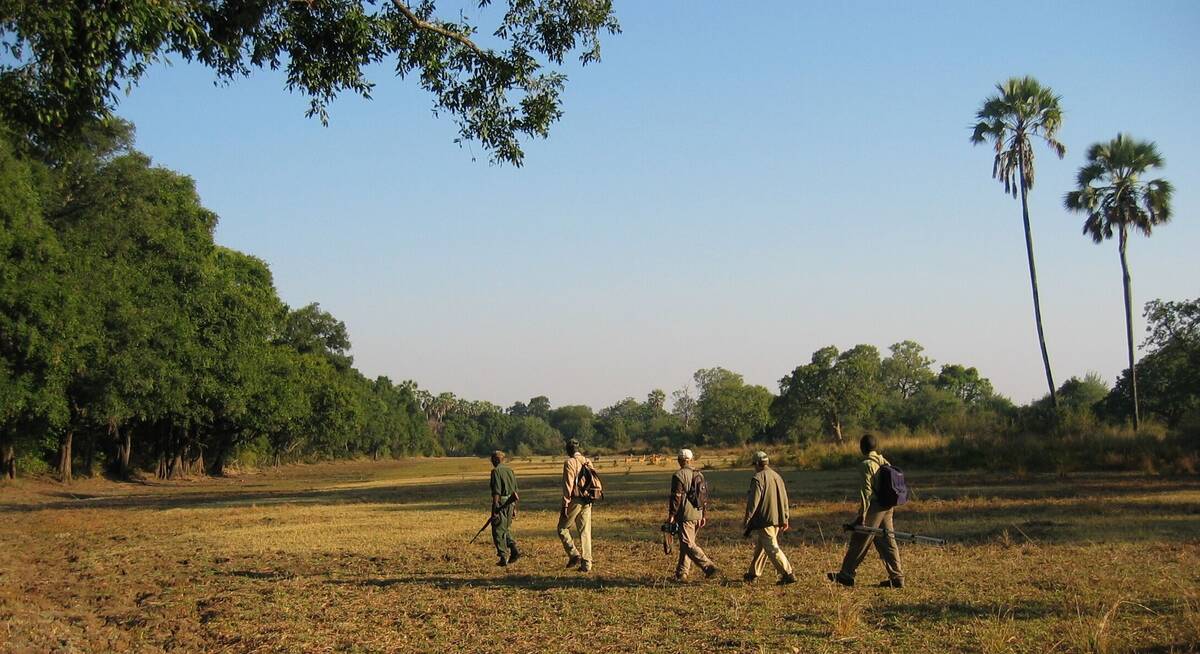
Nile Monitor Safari
6 days • 2 locations
LUSAKA AIRPORT TO LUSAKA AIRPORT
Great-value South Luangwa safari to two sister camps: a classic safari camp for 4WD safaris by day and night and its simpler sibling: a remote, seasonal bushcamp for expert-guided walking safaris.
US$4,800 - US$4,800 per person
Our travellers' most recent reviews of safaris in South Luangwa National Park
Every year, we help numerous travellers to fulfil their dream of a safari in South Luangwa National Park, or further afield. Many of them come back to us with their feedback, something that we appreciate in many ways.
Their comments help to enhance our knowledge and understanding of each place they visit – and this in turn helps future travellers to plan their trips.
In addition, this feedback is shared with lodges and other safari operators in the South Luangwa, who appreciate it as genuine insight and opinion.
All 948 reviews from our travellers’ safaris in the South Luangwa National Park are reproduced in full and are unedited; click below to read them.
Arrived 31 Mar 2025, 4 nights
"My Mar 2025 trip"
Overall rating: Excellent
Arrived 13 Mar 2025, 12 nights
"Meet up in Africa safari "
Overall rating: Excellent
Arrived 24 Feb 2025, 10 nights
"My Feb 2025 trip"
Overall rating: Excellent
Arrived 31 Oct 2024, 11 nights
"My Oct 2024 trip"
Overall rating: Excellent
Arrived 29 Oct 2024, 15 nights
"My Oct 2024 trip"
Overall rating: Excellent
Arrived 20 Oct 2024, 8 nights
"My Oct 2024 trip"
Overall rating: Excellent
Arrived 15 Oct 2024, 14 nights
"My Oct 2024 trip"
Overall rating: Excellent
Arrived 10 Oct 2024, 5 nights
"My Oct 2024 trip"
Overall rating: Excellent
Arrived 9 Oct 2024, 13 nights
"My Oct 2024 trip"
Overall rating: Excellent
Arrived 21 Sep 2024, 11 nights
"Sep 2024 trip to South and North Luangwa"
Overall rating: Excellent
Where to stay in South Luangwa
South Luangwa boasts several world-class safari camps, which all offer exciting safari walks and drives with first-class guides. Some also offer excellent mobile and fly-camp options.
Almost all South Luangwa accommodation lies in natural bush along the Luangwa River or one of its tributaries, with game regularly roaming through camp. Most of the camps recommended by Expert Africa lie away from the main Mfuwe gate, spaced a considerable distance from each other, where it is unusual to see vehicles from other camps during your game drive.
In style, the South Luangwa camps differ widely, from sophisticated safari lodges to the simplest of bush camps. Many, such as Tafika Camp, Kaingo and Kafunta, with their tiny satellite walking camps, are still owner run; others, such as Nkwali and Kapani, are operated by companies that retain the strong personal ethic of their founders.
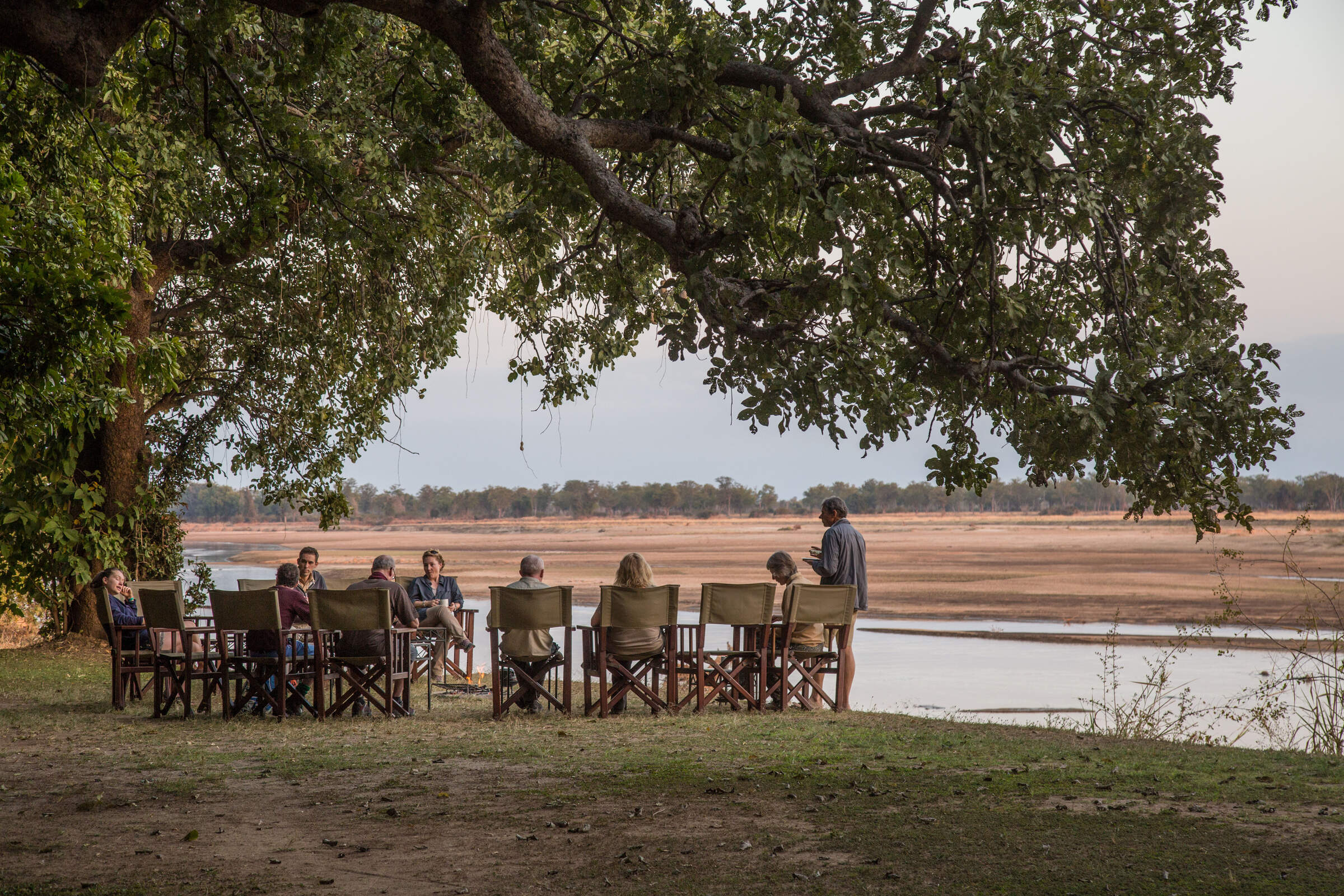
Tafika
One of the best camps in Zambia, Tafika is naturally built, combining excellent service and food with top guiding skills for a superb wildlife experience.
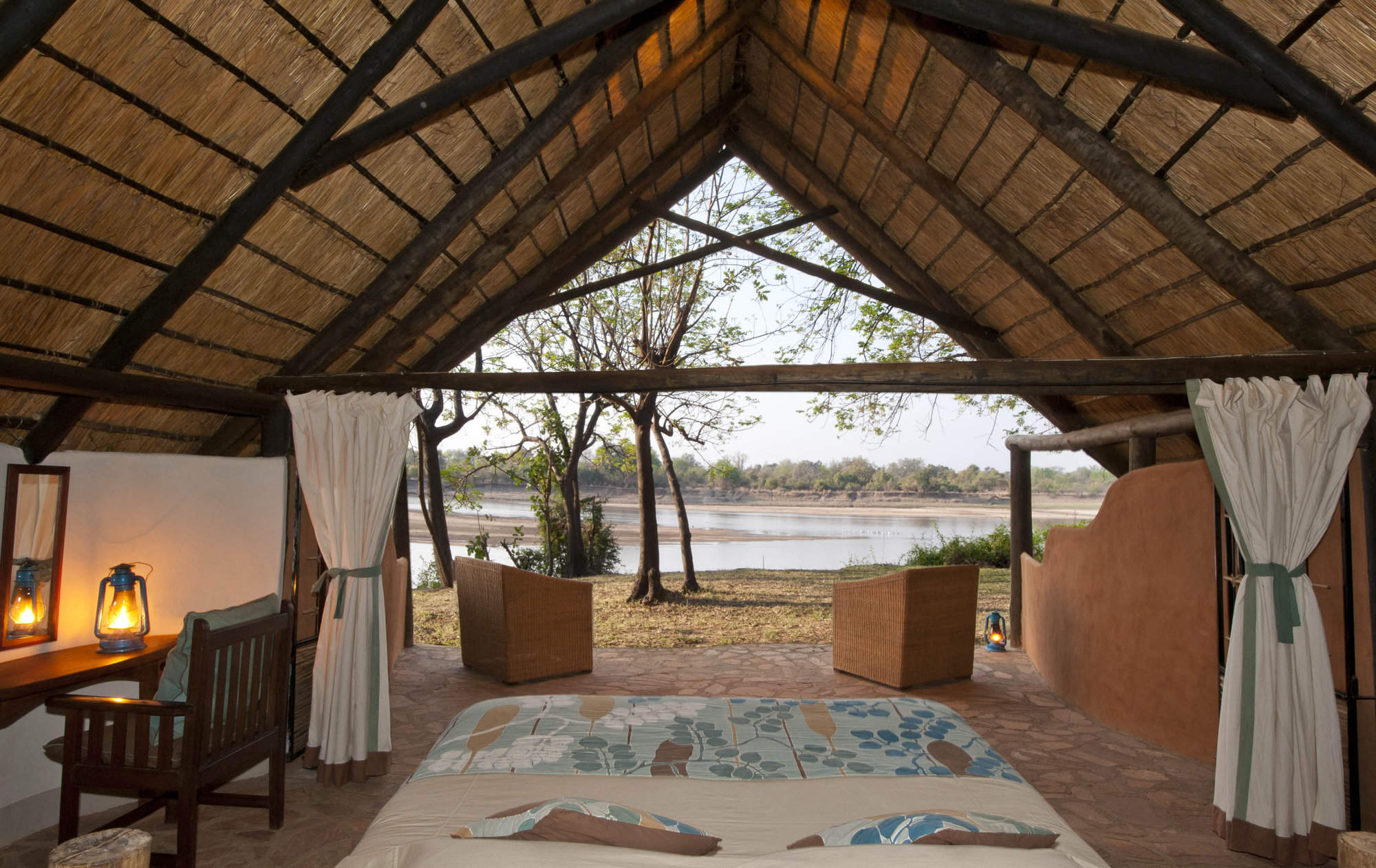
Nkwali
On the banks of the Luangwa River, with its own access to the national park, the intimate Nkwali is open year round.
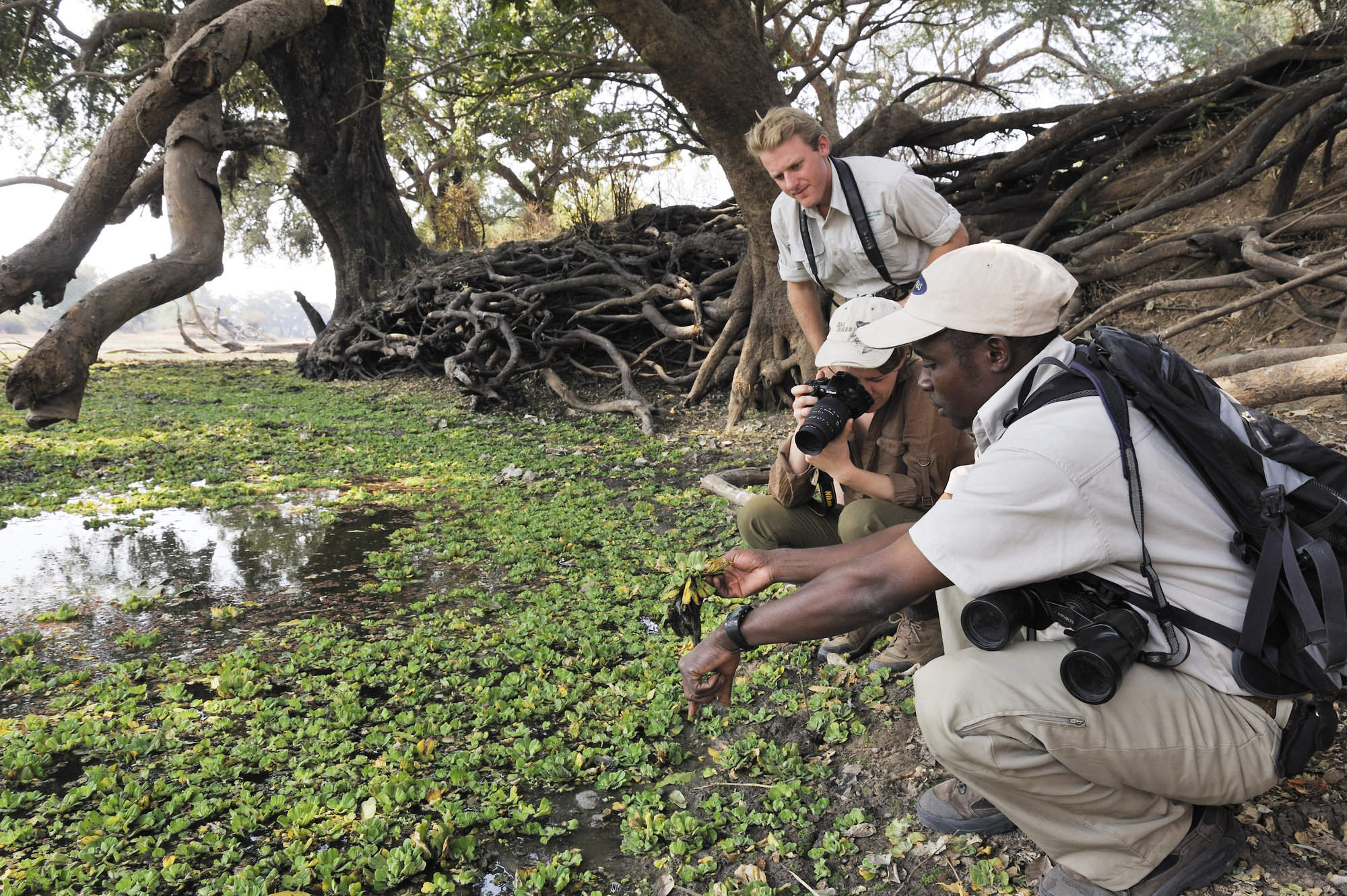
Kaingo Camp
Small and owner-run, the riverside Kaingo occupies a a quiet but excellent game area, with a series of wildlife hides and a focus on photography.
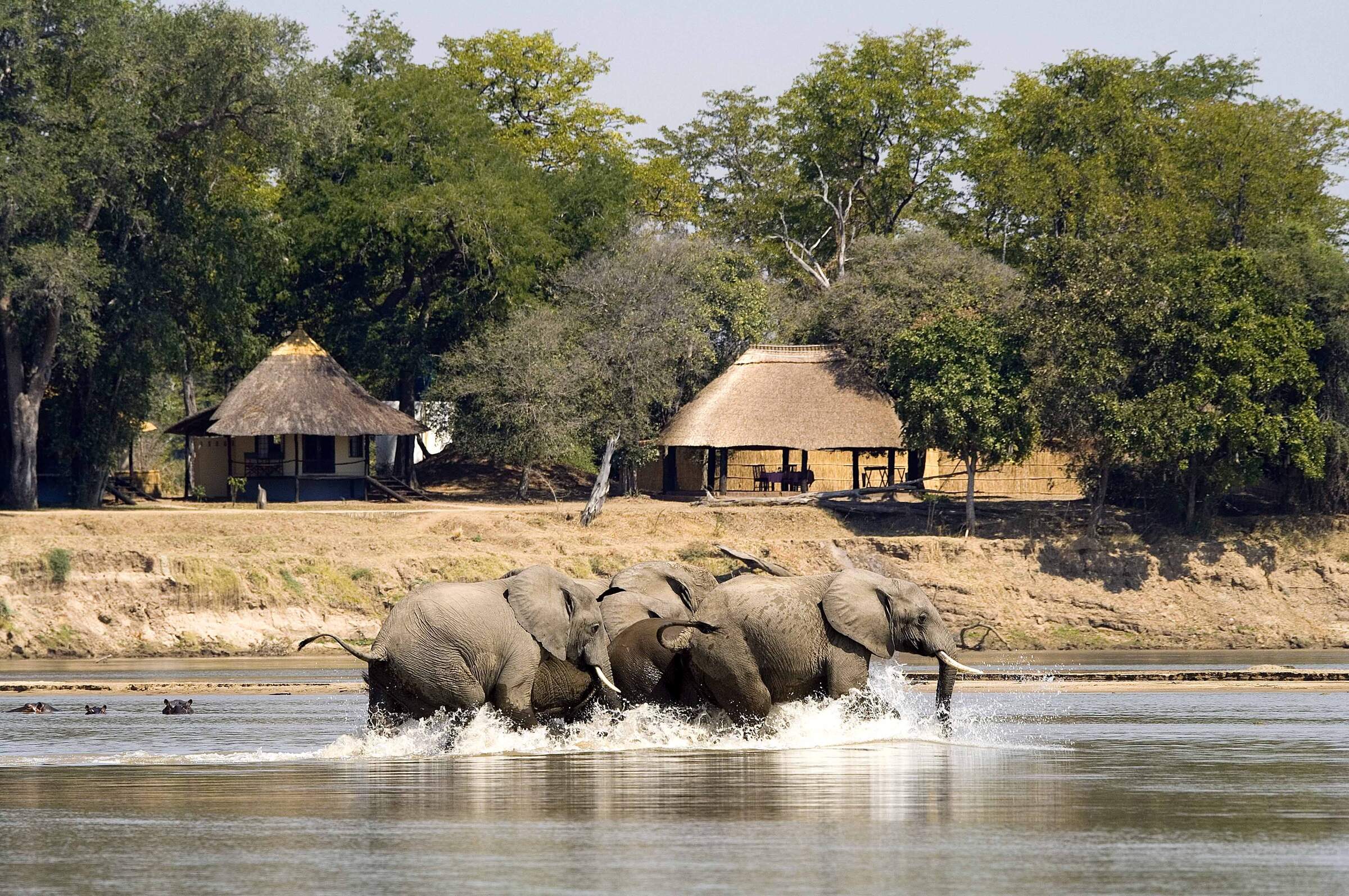
Nsefu
One of the Luangwa's oldest camps, Nsefu is a great safari camp in a remote, beautiful and game-rich location with top-rate guiding.
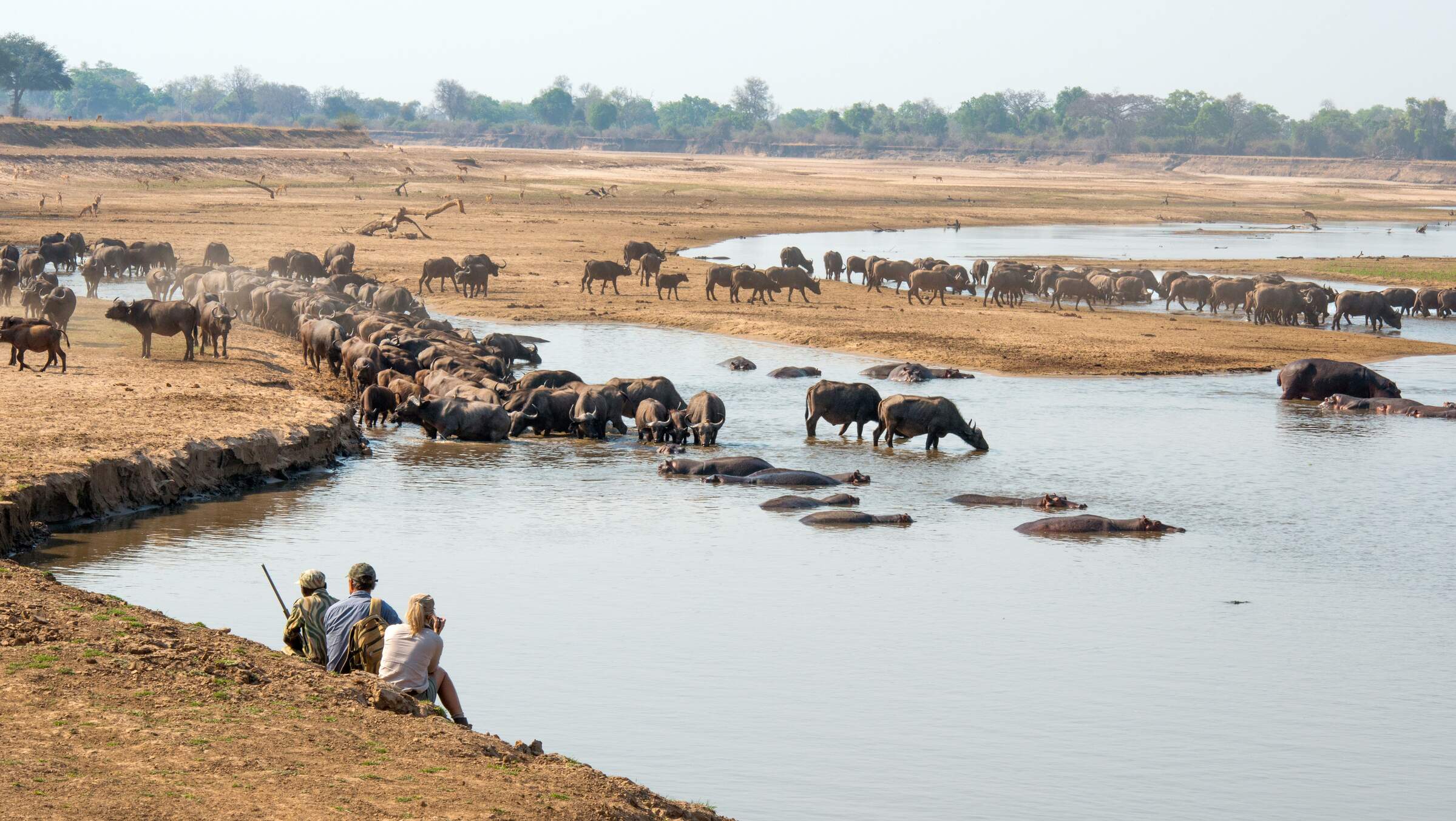
Mwamba Bushcamp
Small, remote and owner-run, Mwamba offers first-class walking, 4WD safari drives and superb hides, with excellent guides and a real bush feel.
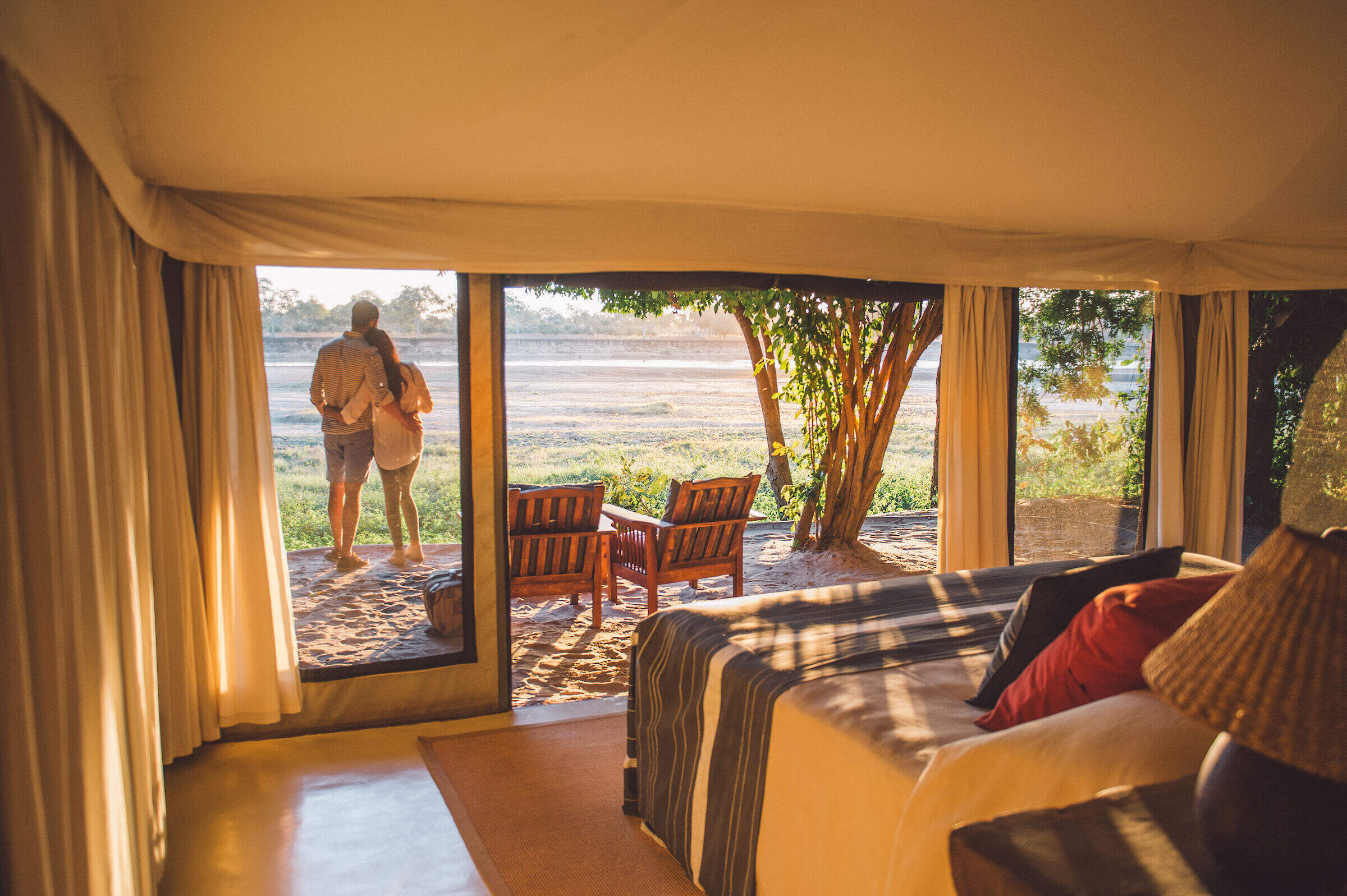
Tena Tena
One of the Luangwa's best camps, in a beautiful, remote bush location, Tena Tena is very small, exceedingly well-run and has top-rate guiding.
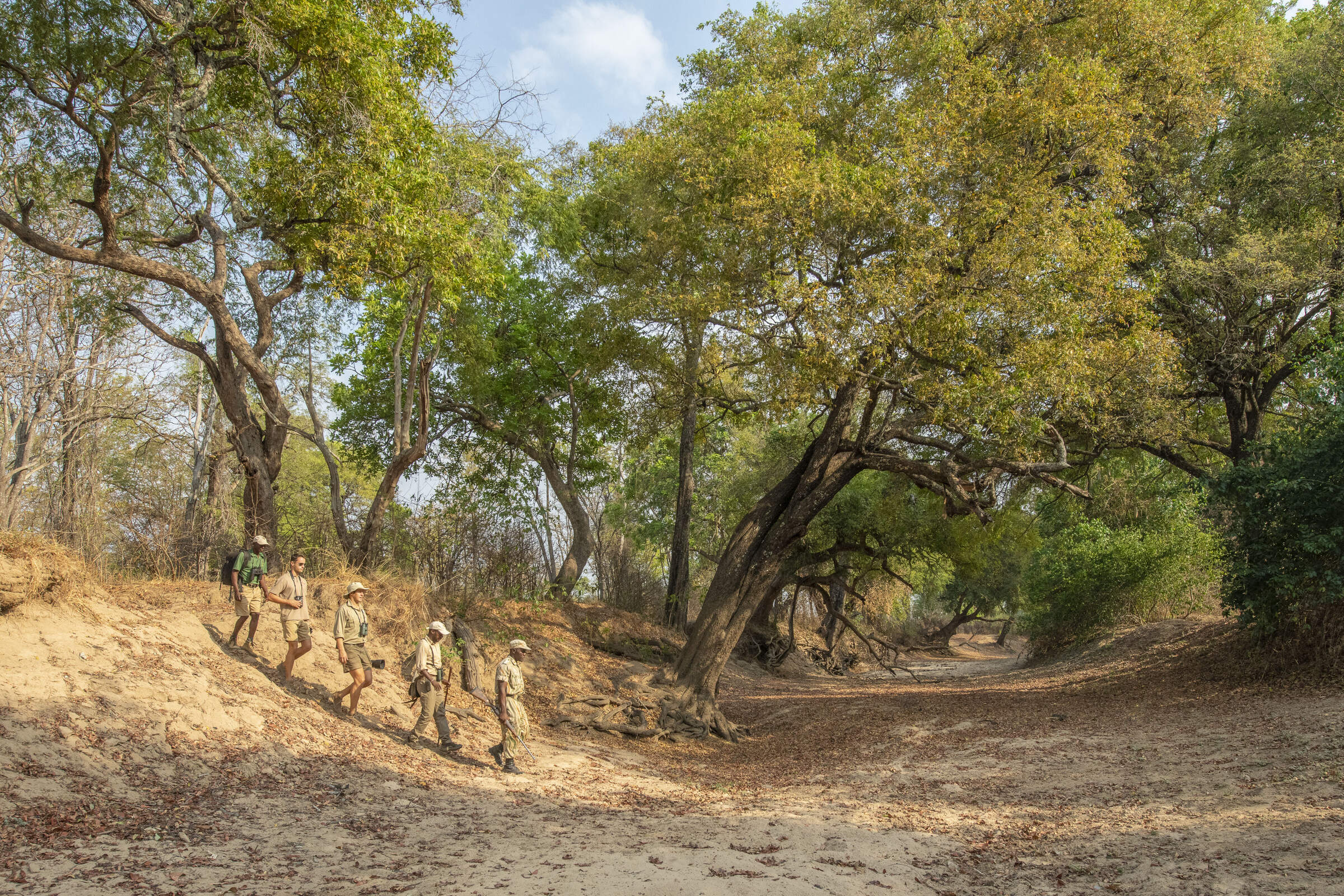
Chikoko Tree Camp
Chikoko Tree Camp is an excellent small, rustic bushcamp that concentrates on walking safaris, and is run by a top-quality operation.
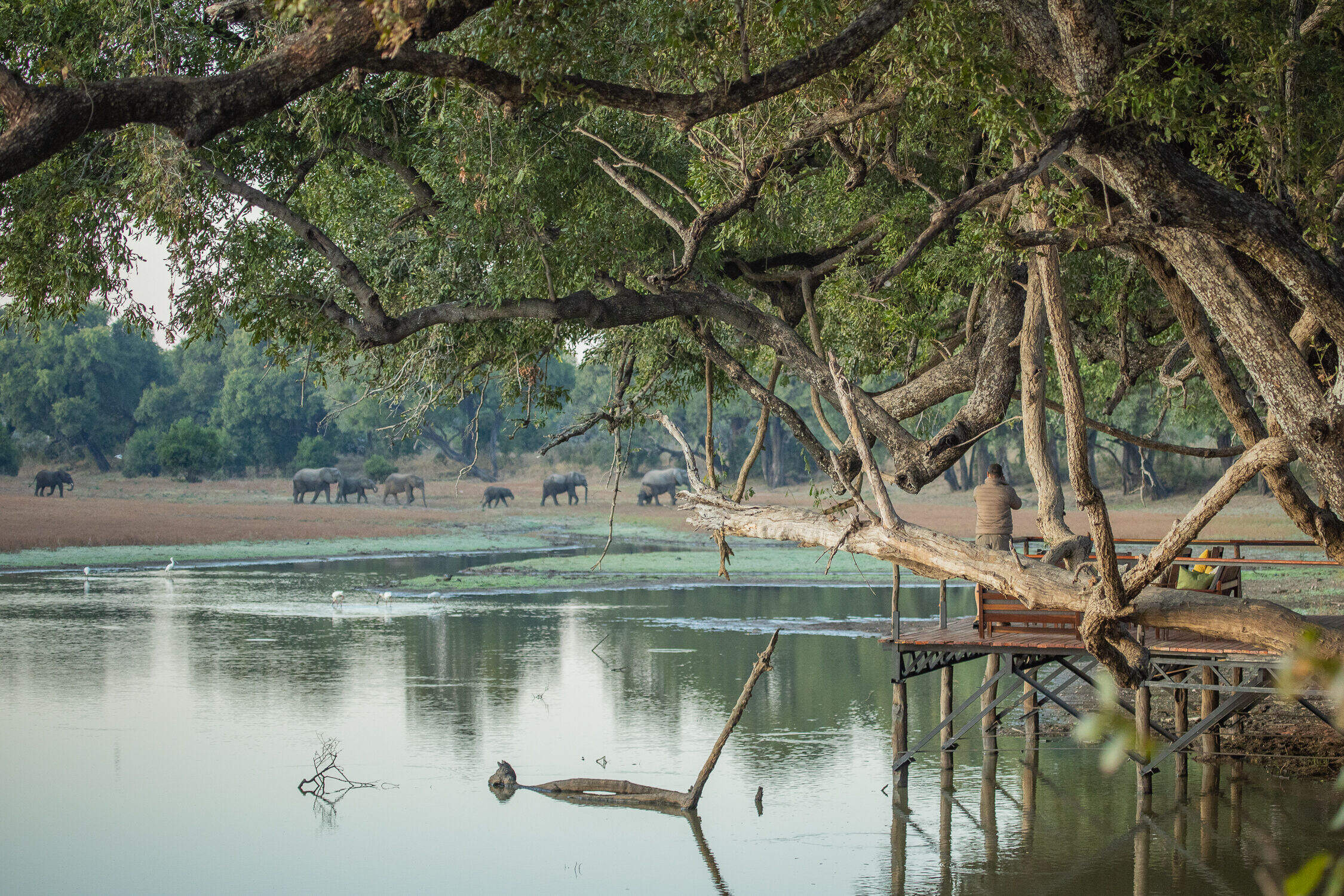
Big Lagoon Camp
Big Lagoon Camp is a great little rustic bushcamp built to high standards that focuses on excellent walking safaris, with the emphasis on top wildlife guides.
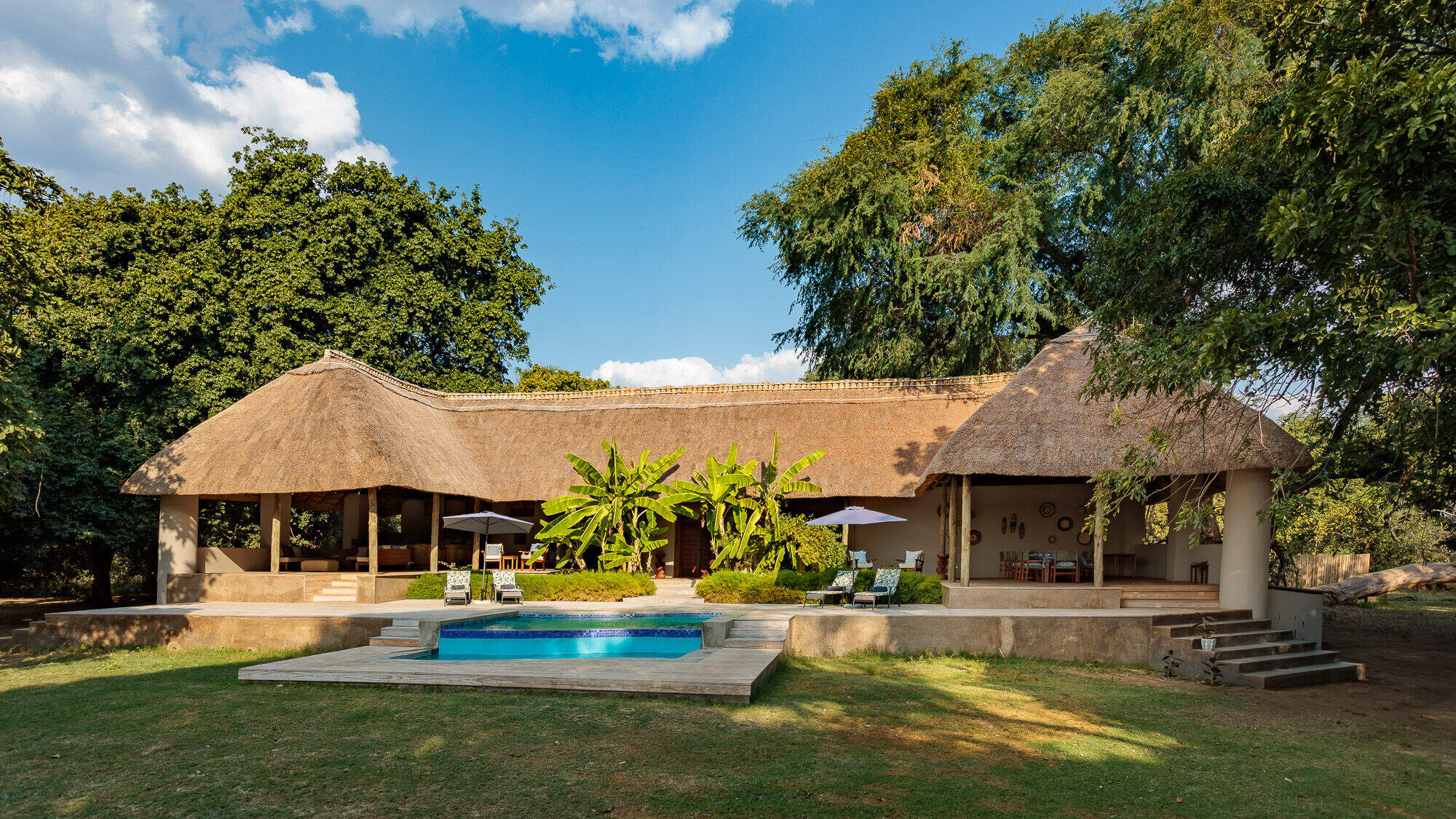
Luangwa River Camp
Luangwa River Lodge is a small and consciously stylish lodge in the Mfuwe area, overlooking the Luangwa River and the South Luangwa National Park beyond – an area renowned for great game.
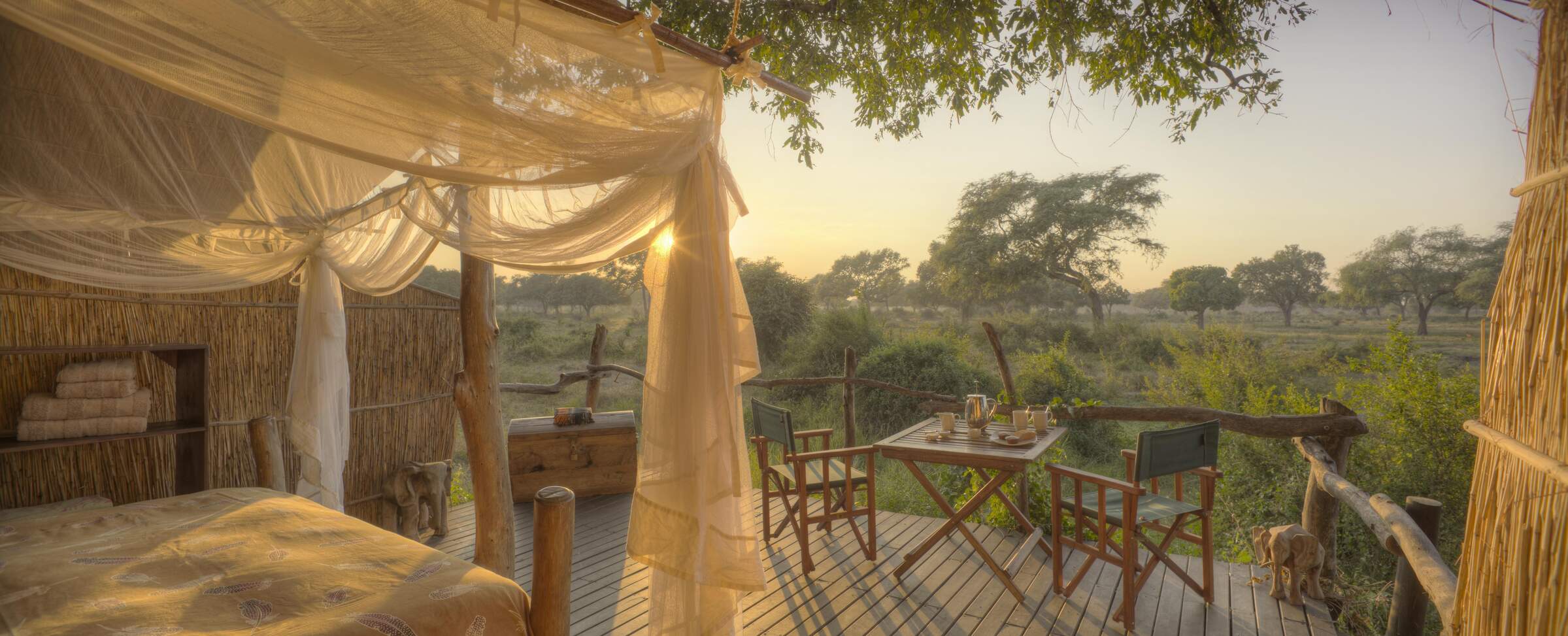
Flatdogs Camp
A relatively big safari camp, Flatdogs offers value for money with great guiding and good food in a comfortable, relaxed setting.
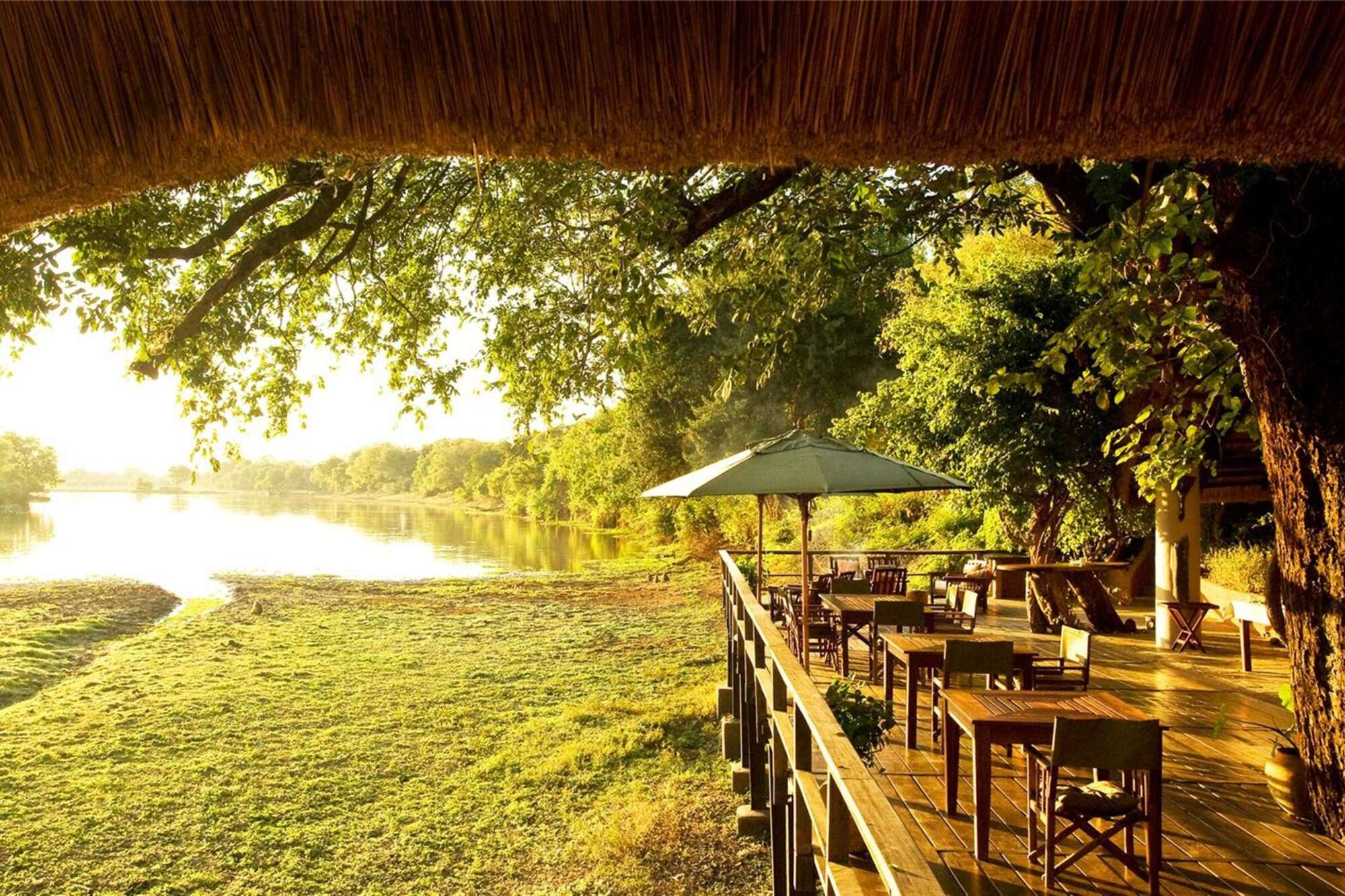
Kapani Lodge
Kapani Lodge is now the main office base for Norman Carr Safaris, one of the Luangwa's oldest safari operations.
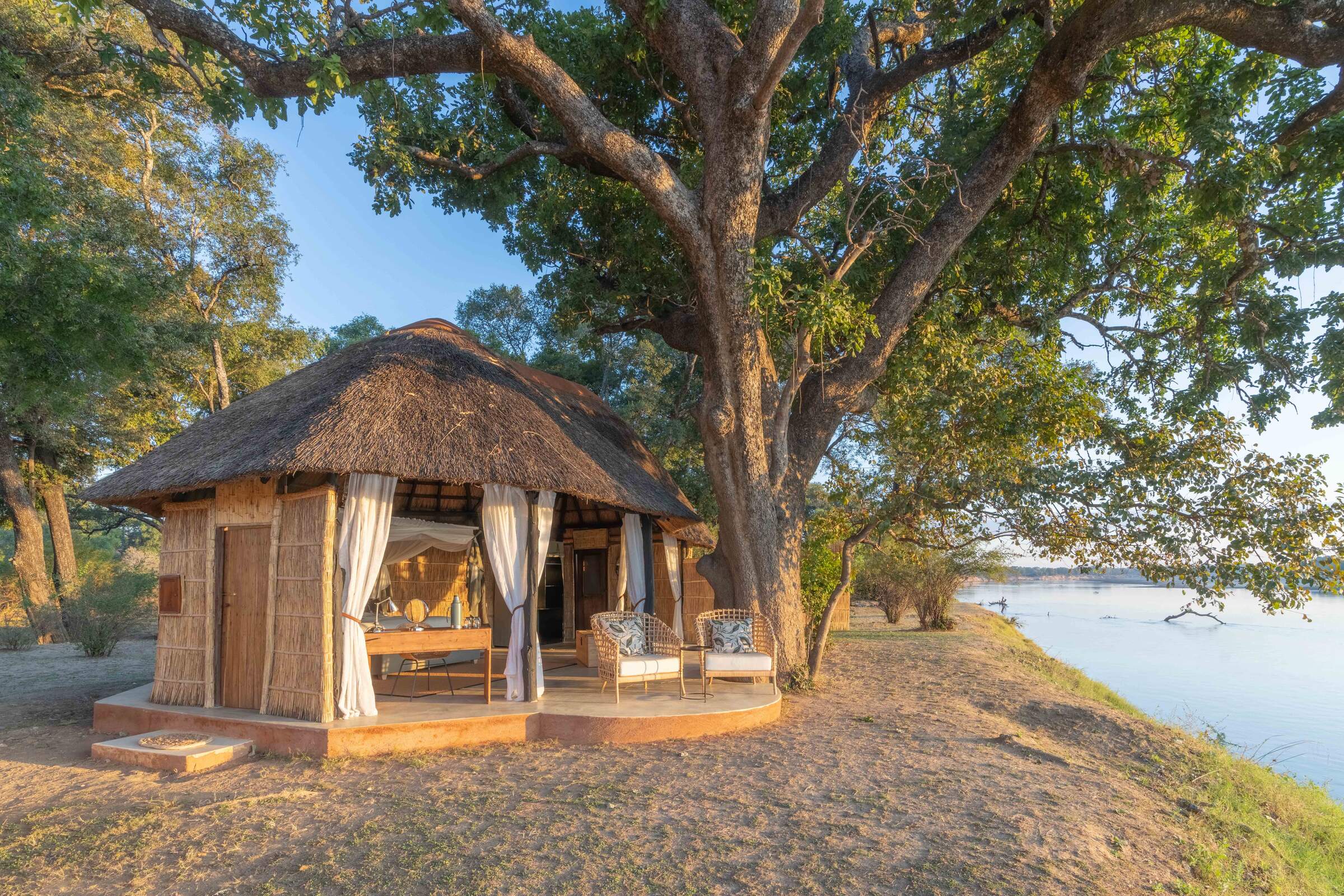
Mchenja Bushcamp
Set in a shady ebony grove on the banks of the Luangwa, Mchenja is a smart tented bushcamp. It combines well with Kakuli and Nsolo – its sister camps with a focus on walking safaris.
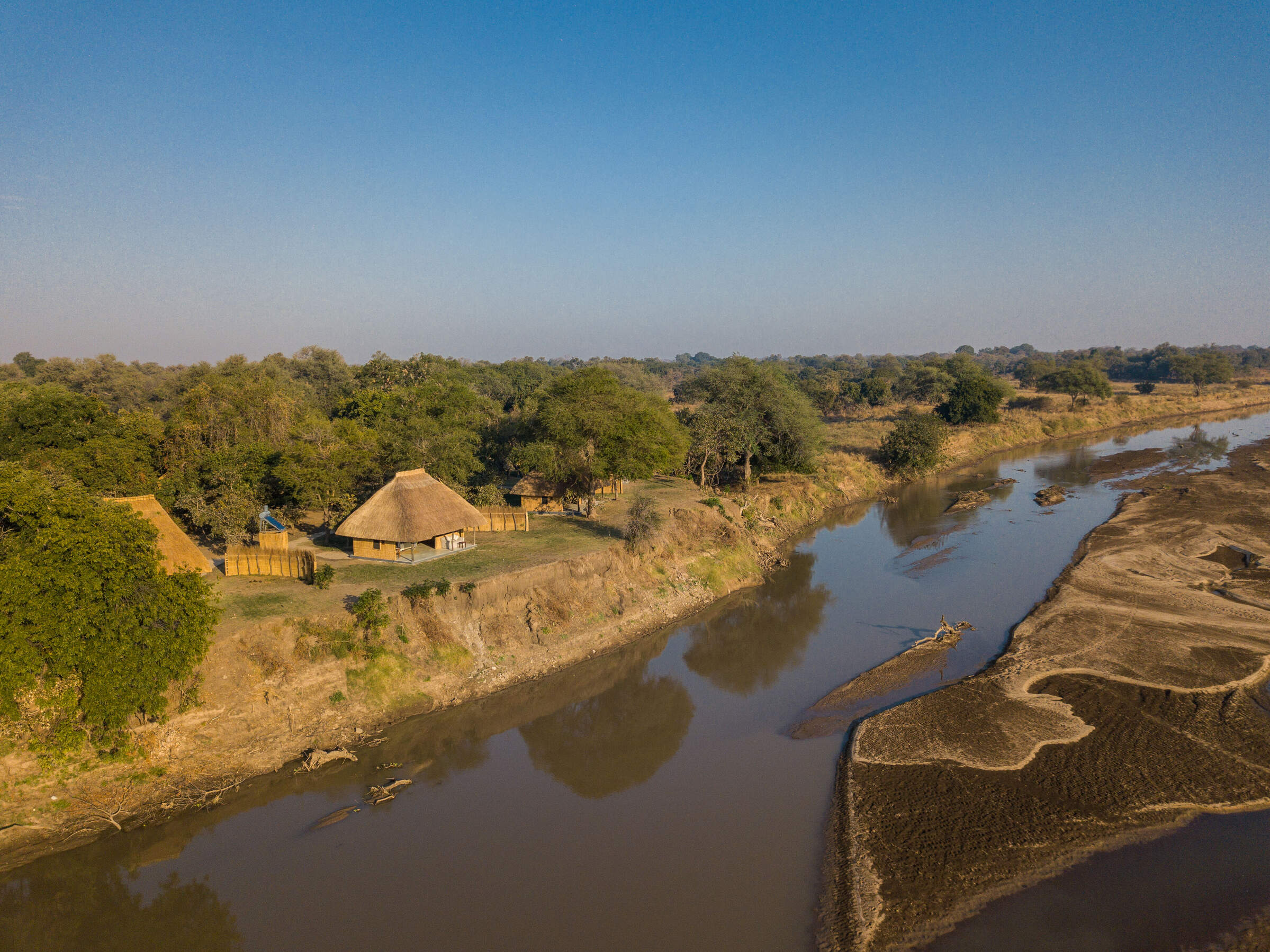
Kakuli Bushcamp
Beside the Luangwa River, Kakuli is a comfortable tented bushcamp offering 4WD safaris and walking safaris – the best of which are camp-to-camp walks linking Kakuli with its nearby sister camps.
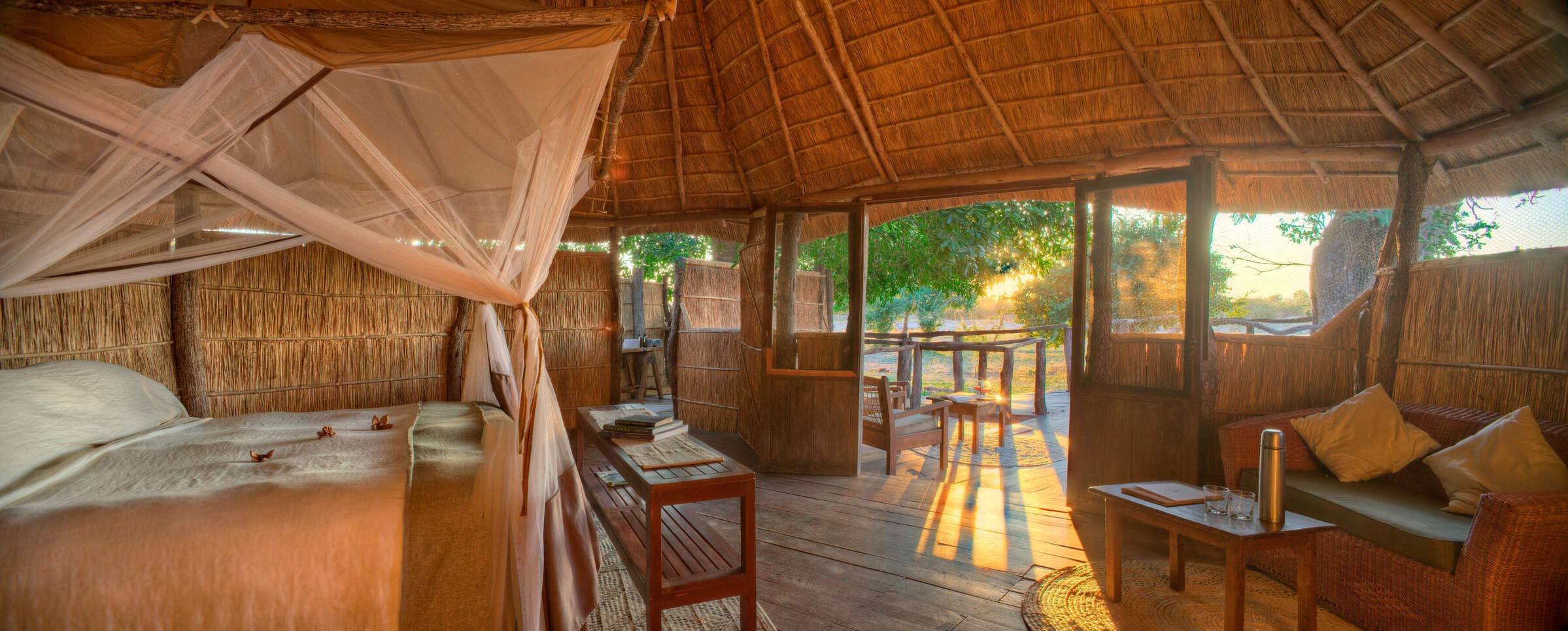
Nsolo Bushcamp
Nsolo is a small, comfortable bushcamp overlooking one or two pools in the usually dry Luwi riverbed. It concentrates on walking safaris in an interesting and diverse area, led by a knowledgeable guide.
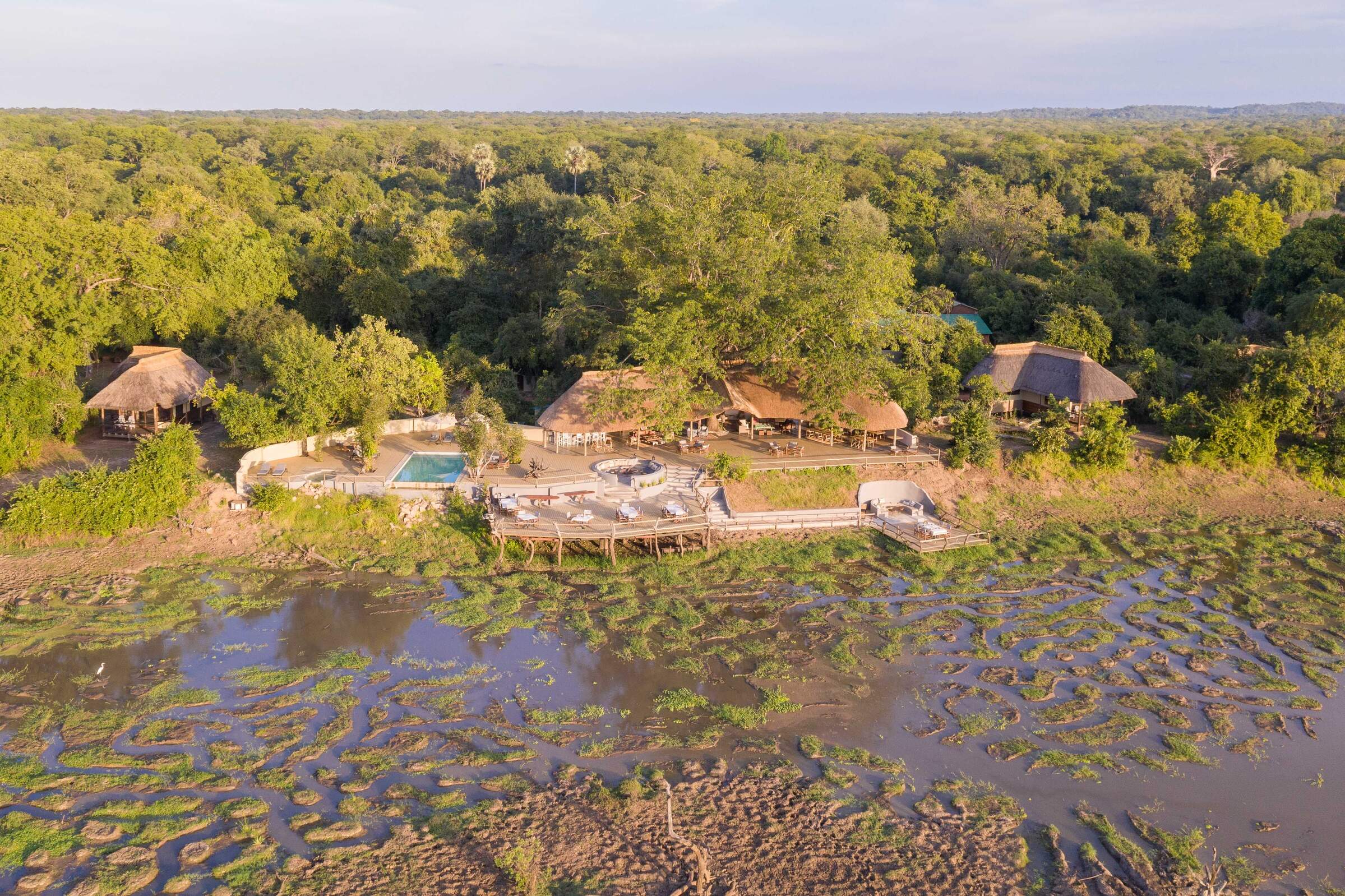
Kafunta River Lodge
Kafunta is a laid-back, friendly and good-value lodge on the outskirts of South Luangwa National Park.
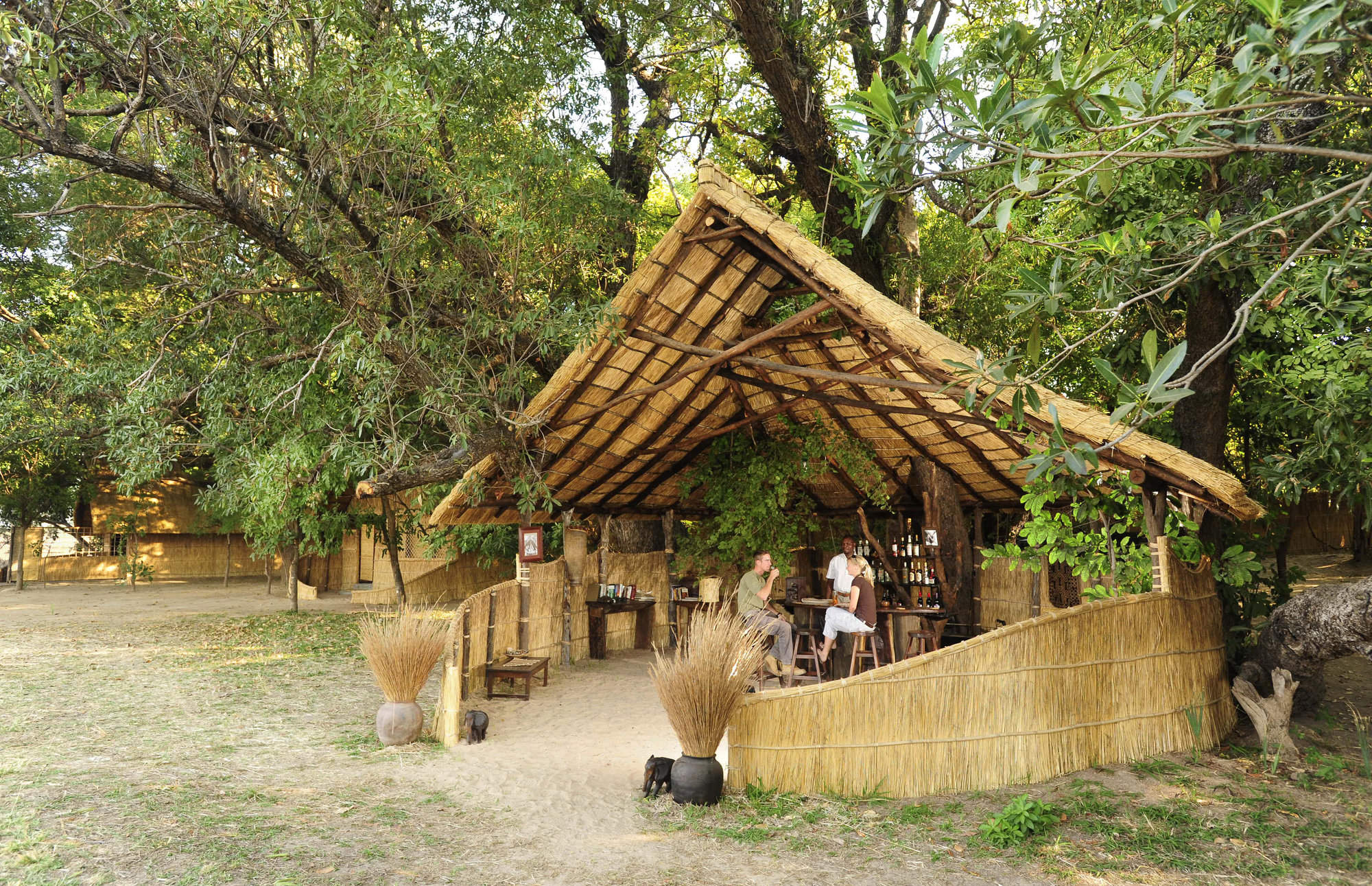
Luwi Bushcamp
In a remote part of the South Luangwa National Park, Luwi is a rustic bushcamp whose emphasis is on walking safaris with great guiding and a chance of seeing some rarely seen and elusive antelope.
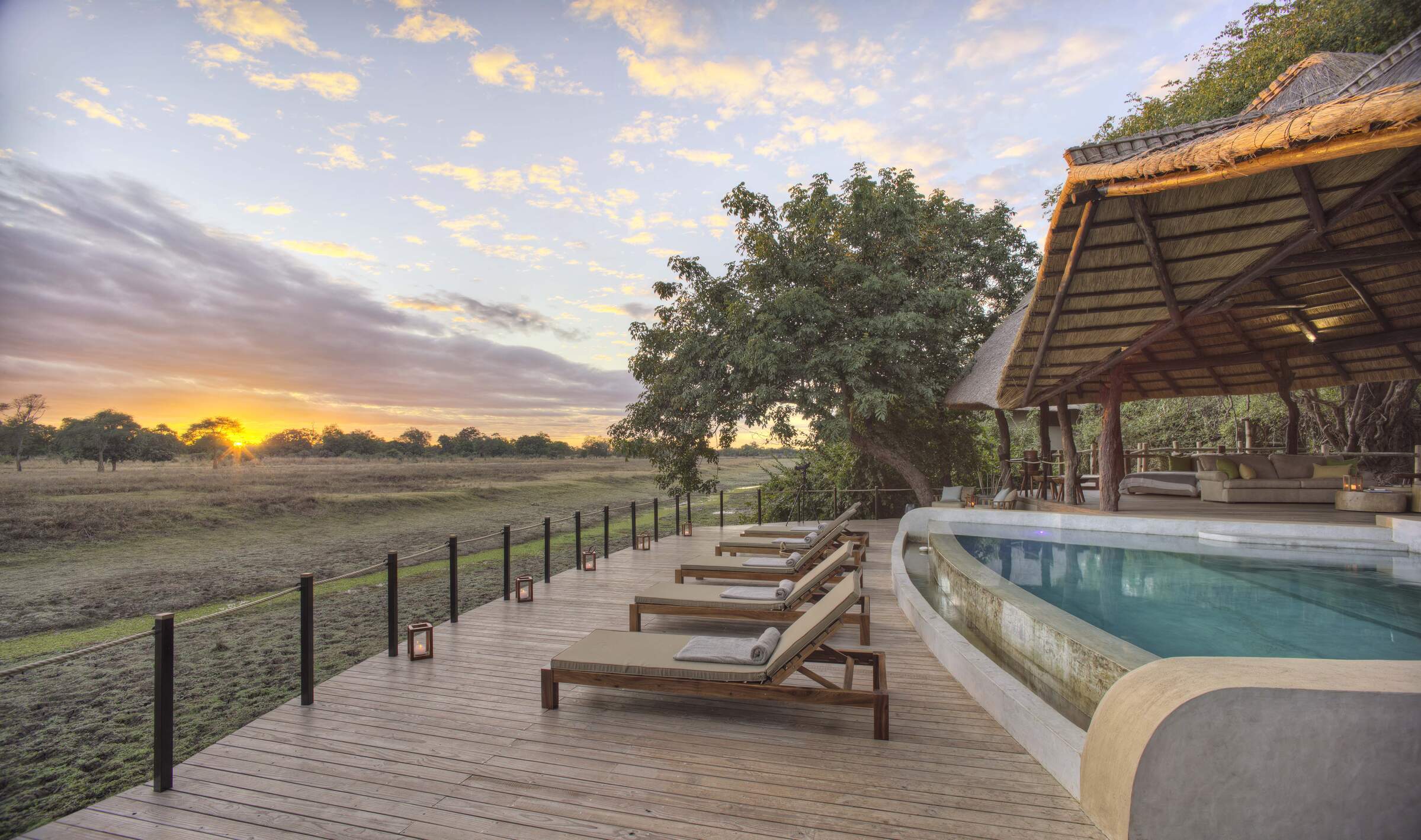
Lion Camp
Lion Camp is an established and comfortable camp with a swimming pool, located near to the game-rich Lion Plain in the northern part of South Luangwa National Park.
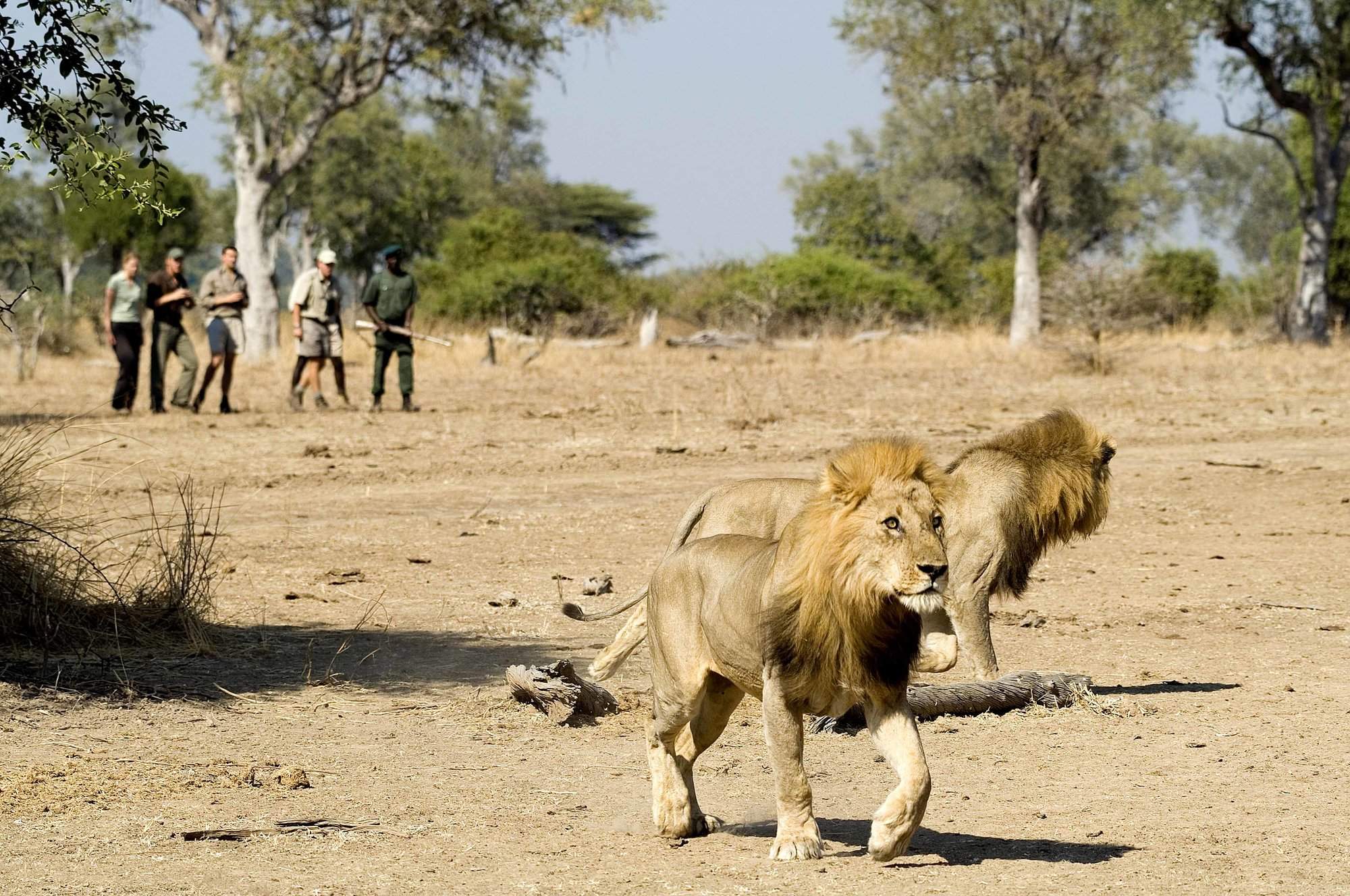
Robin Pope mobile
RPS mobile safari camps are at the heart of their set-itinerary walking safaris in South Luangwa National Park, which start and finish at a permanent camp.
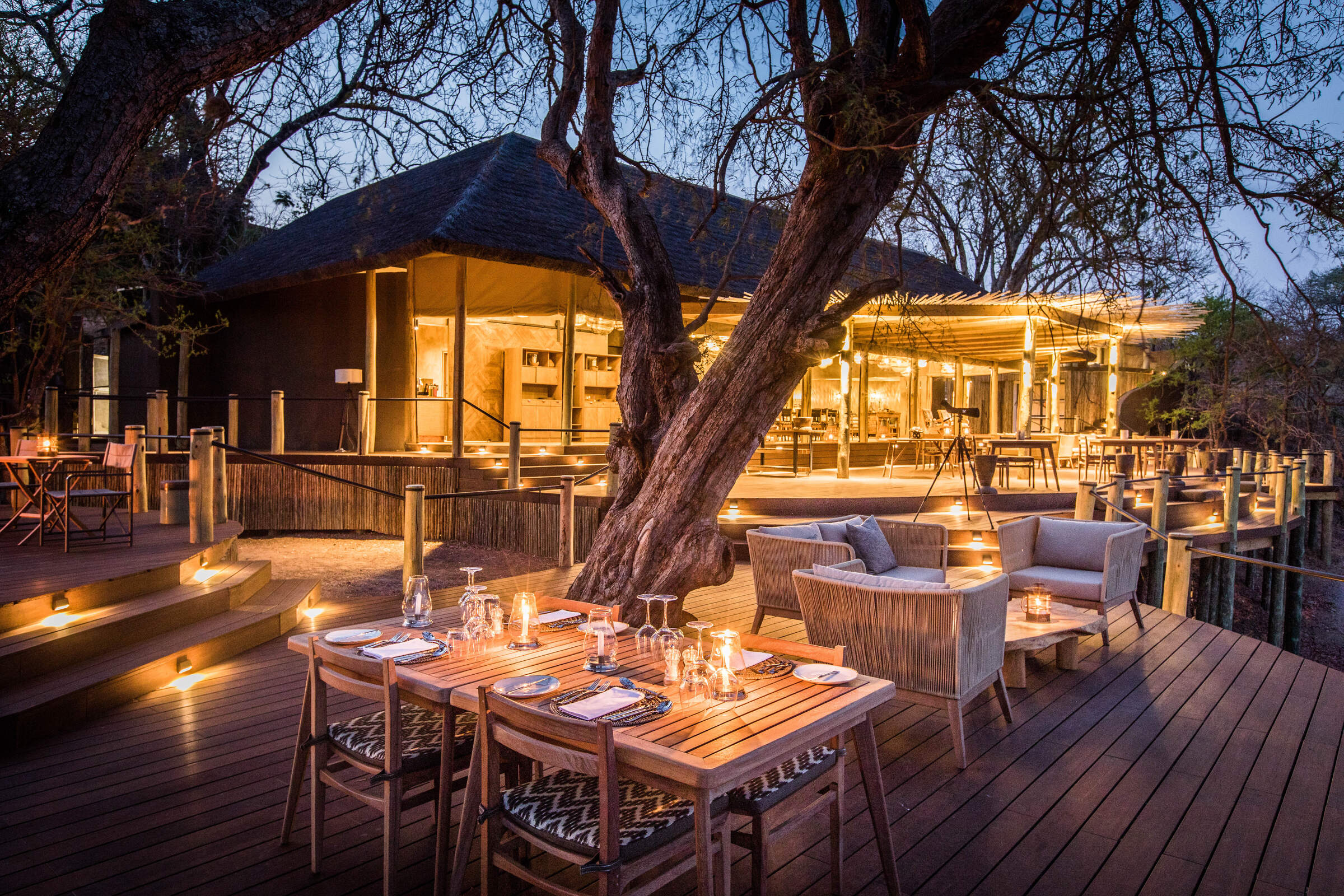
Puku Ridge
Puku Ridge is a luxurious designer camp set in a stunning location, high on a hill overlooking a floodplain within South Luangwa. Explore from here on 4WD safaris and walks.
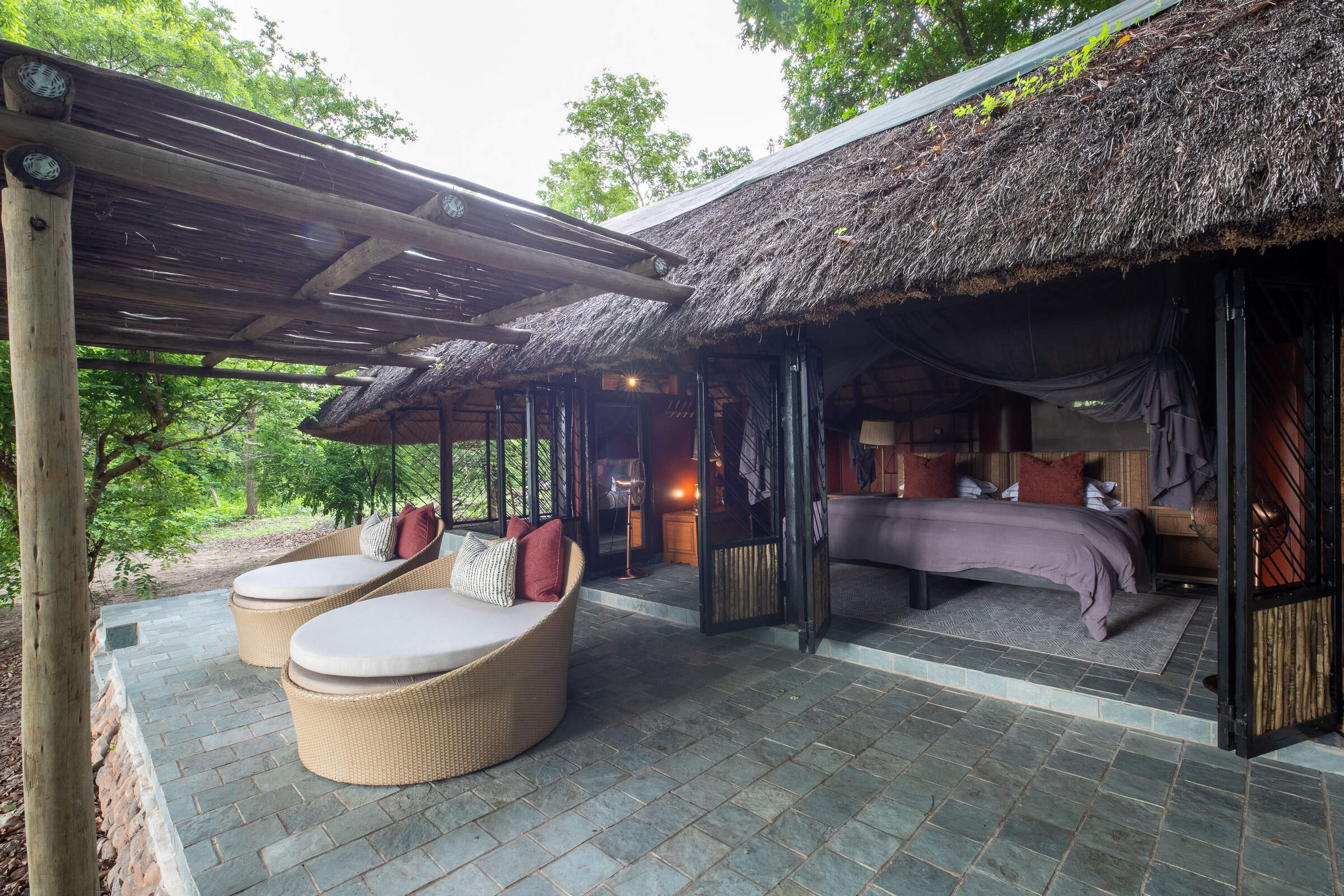
Kapamba Bushcamp
In the remote far south of South Luangwa National Park, Kapamba is a small and very comfortable bushcamp offering good walks and game drives.
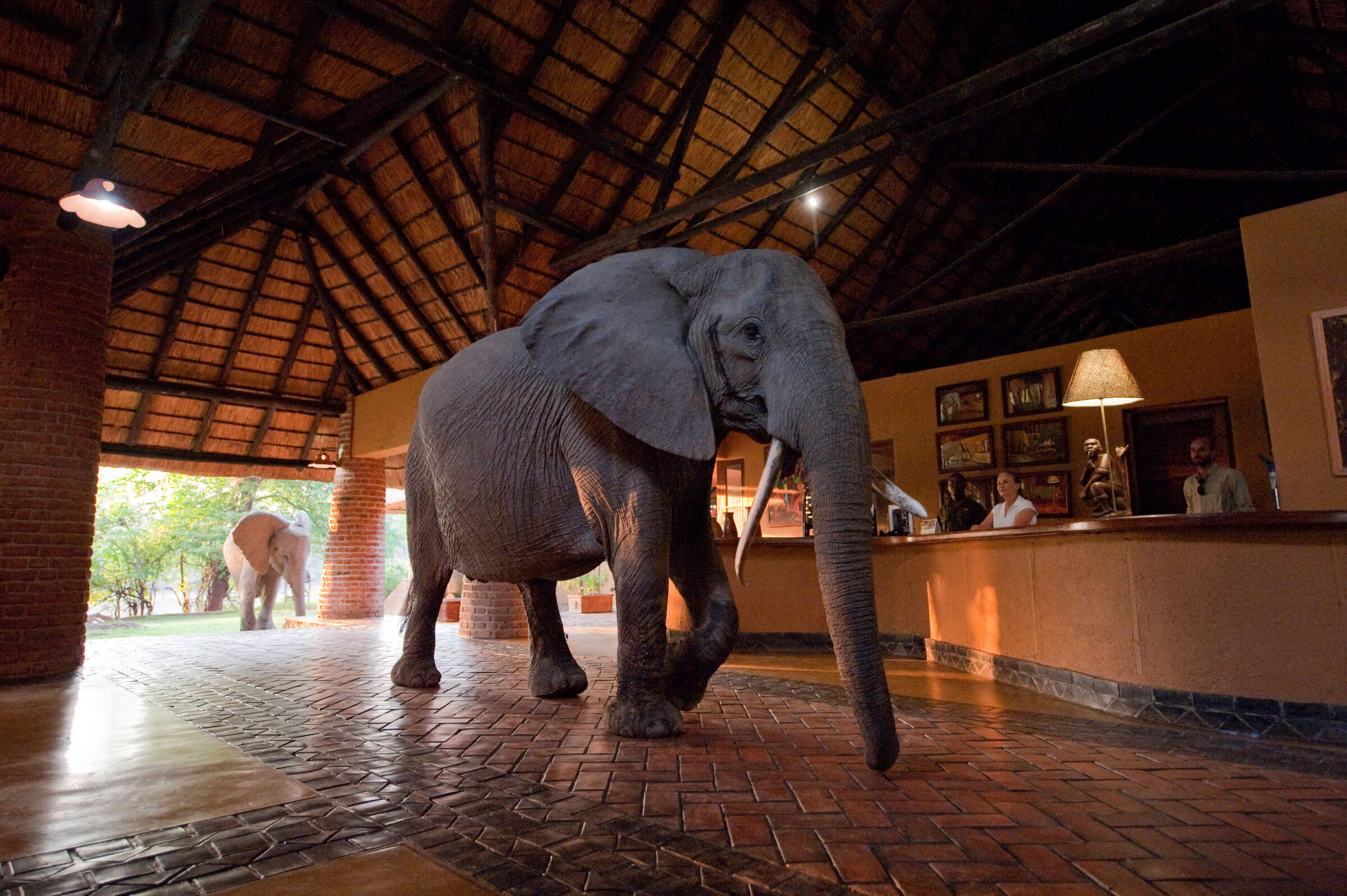
Mfuwe Lodge
In a game-rich area close to the South Luangwa’s main Mfuwe Gate, Mfuwe Lodge is relatively large by park standards, but it’s stylish, modern and family friendly.
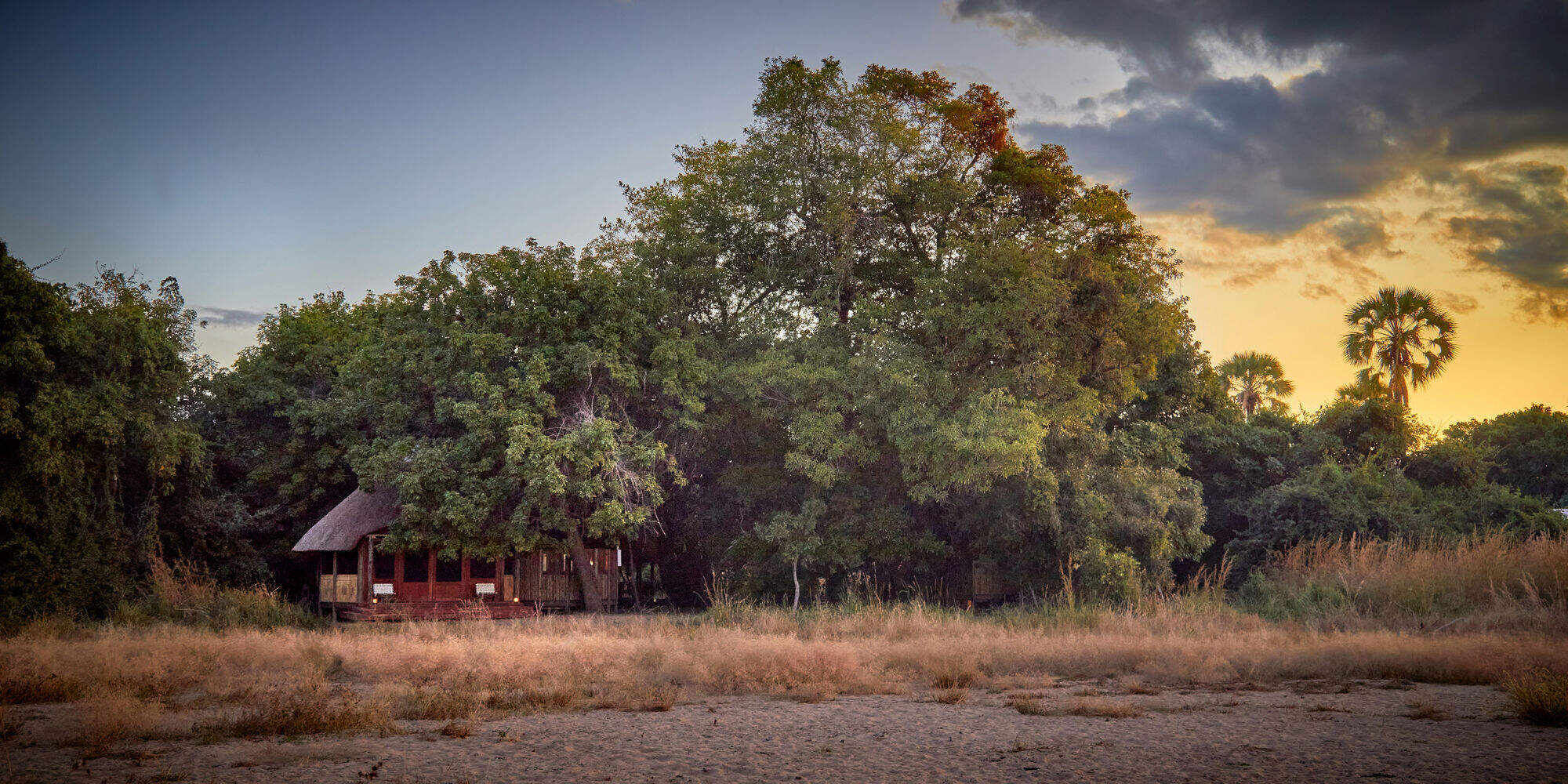
Kuyenda Bushcamp
Kuyenda Bushcamp is a classic bushcamp with particularly delightful hosts and offers top-class walking safaris in South Luangwa National Park.
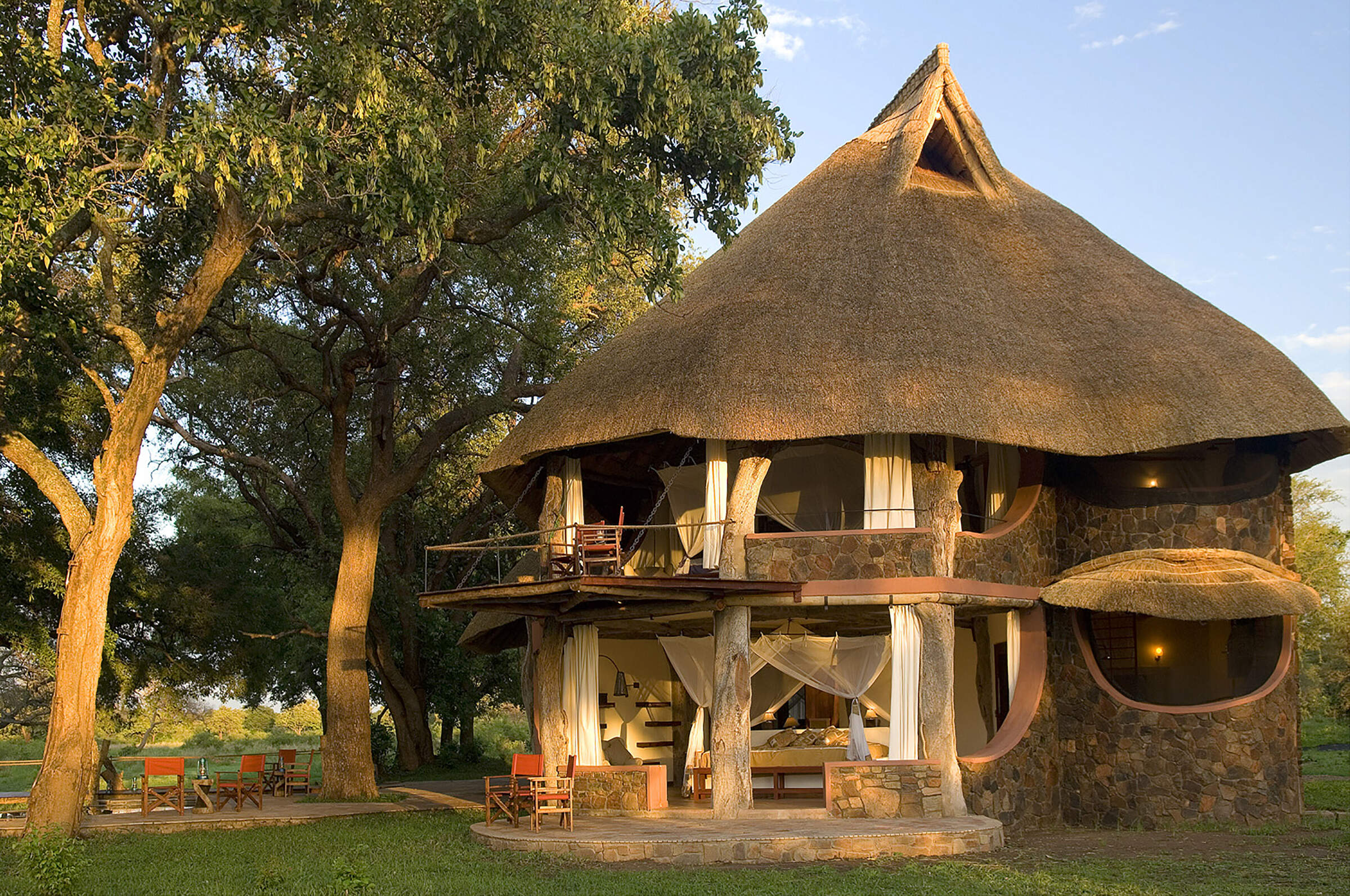
Luangwa Safari House
Luangwa Safari House is a vast and very smart four-bedroom house specifically designed for families and small groups, and offering an exclusive and flexible safari experience.
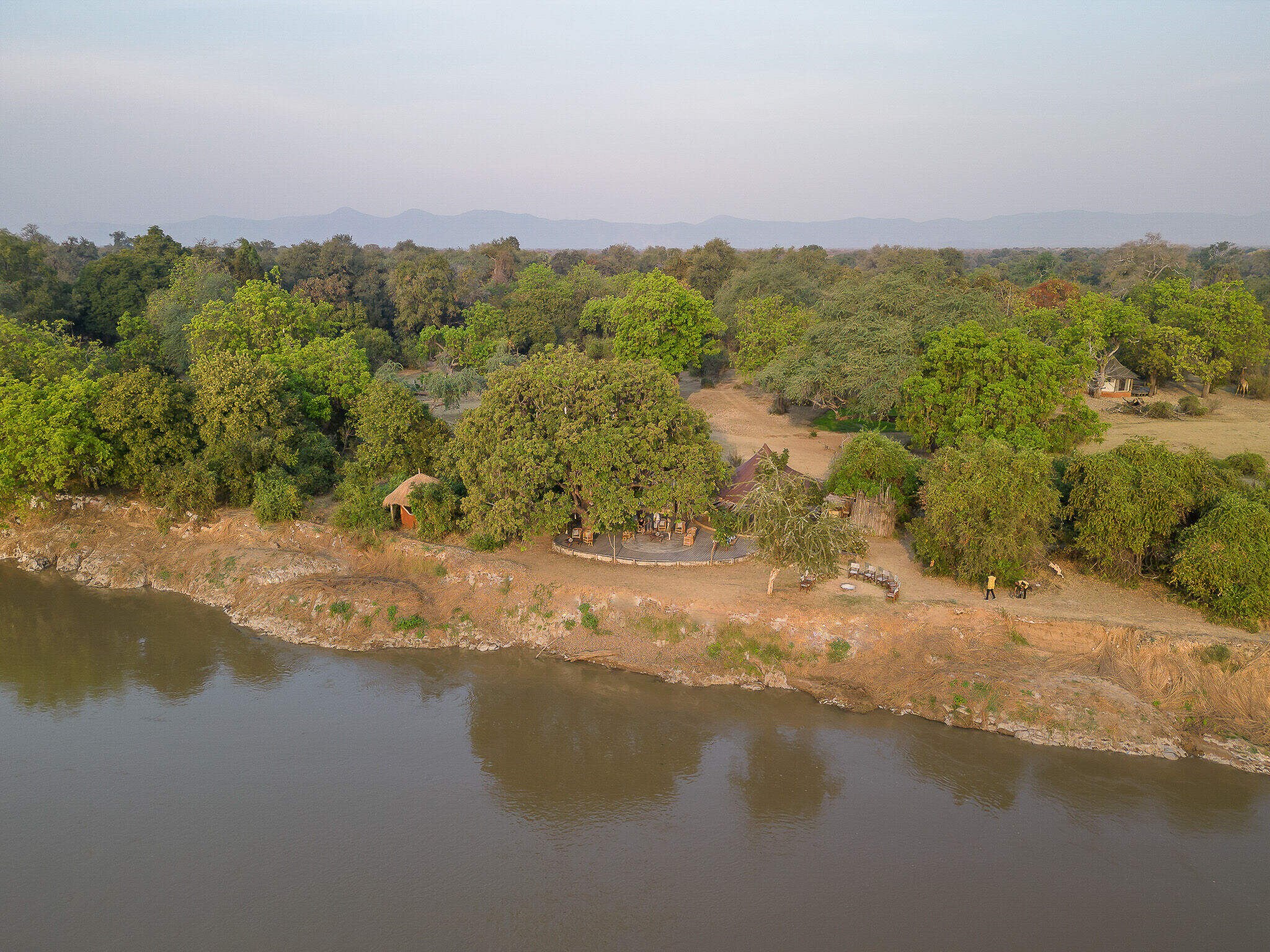
Three Rivers Camp
In the remote far south of South Luangwa National Park, Three Rivers Lodge sits at the confluence of three of the valleys rivers.
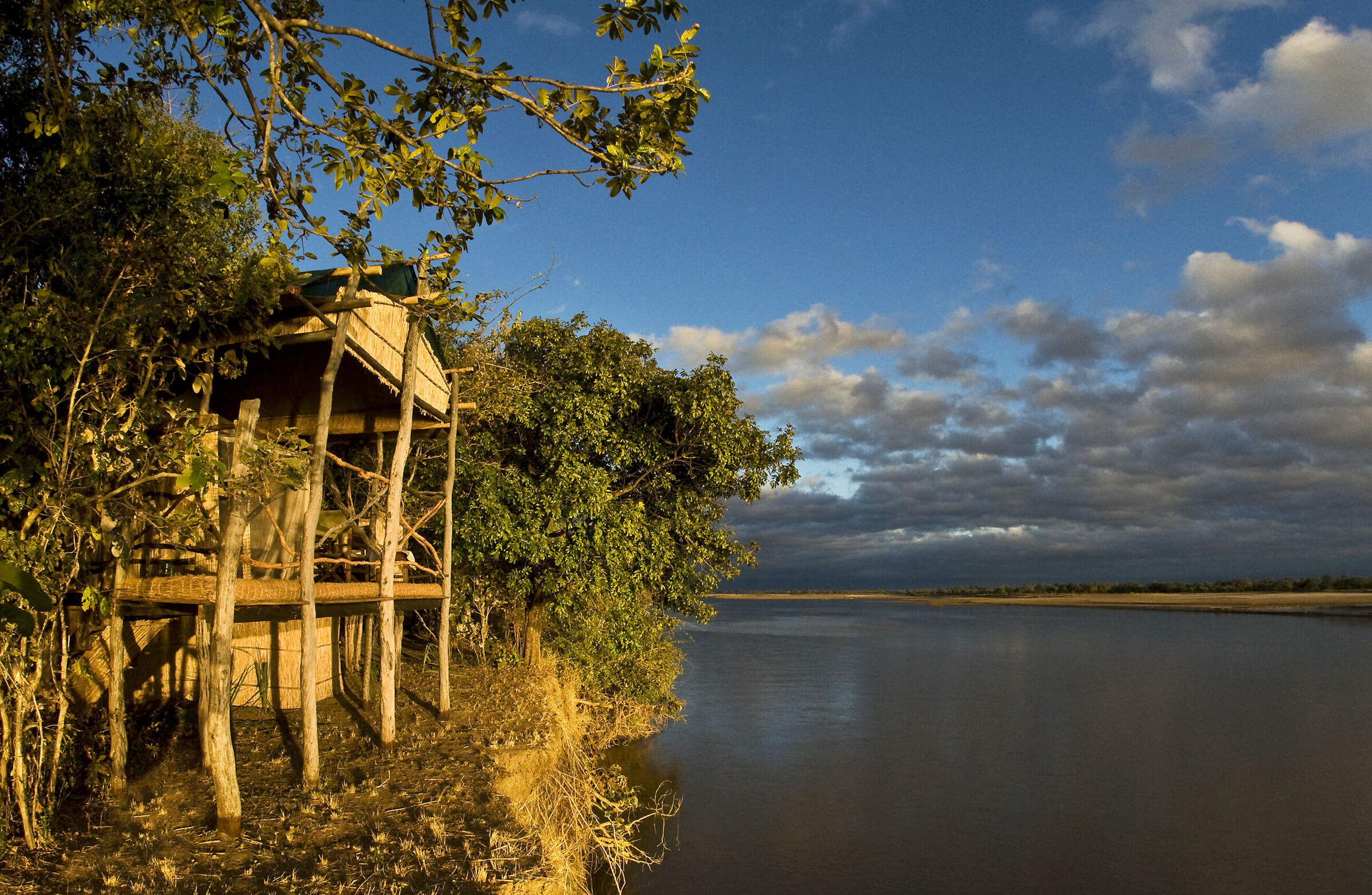
Island Bush Camp
Island Bushcamp is a good-value, rustic, walking-only camp, in arguably one of the most remote parts of the South Luangwa, well away from all other camps.
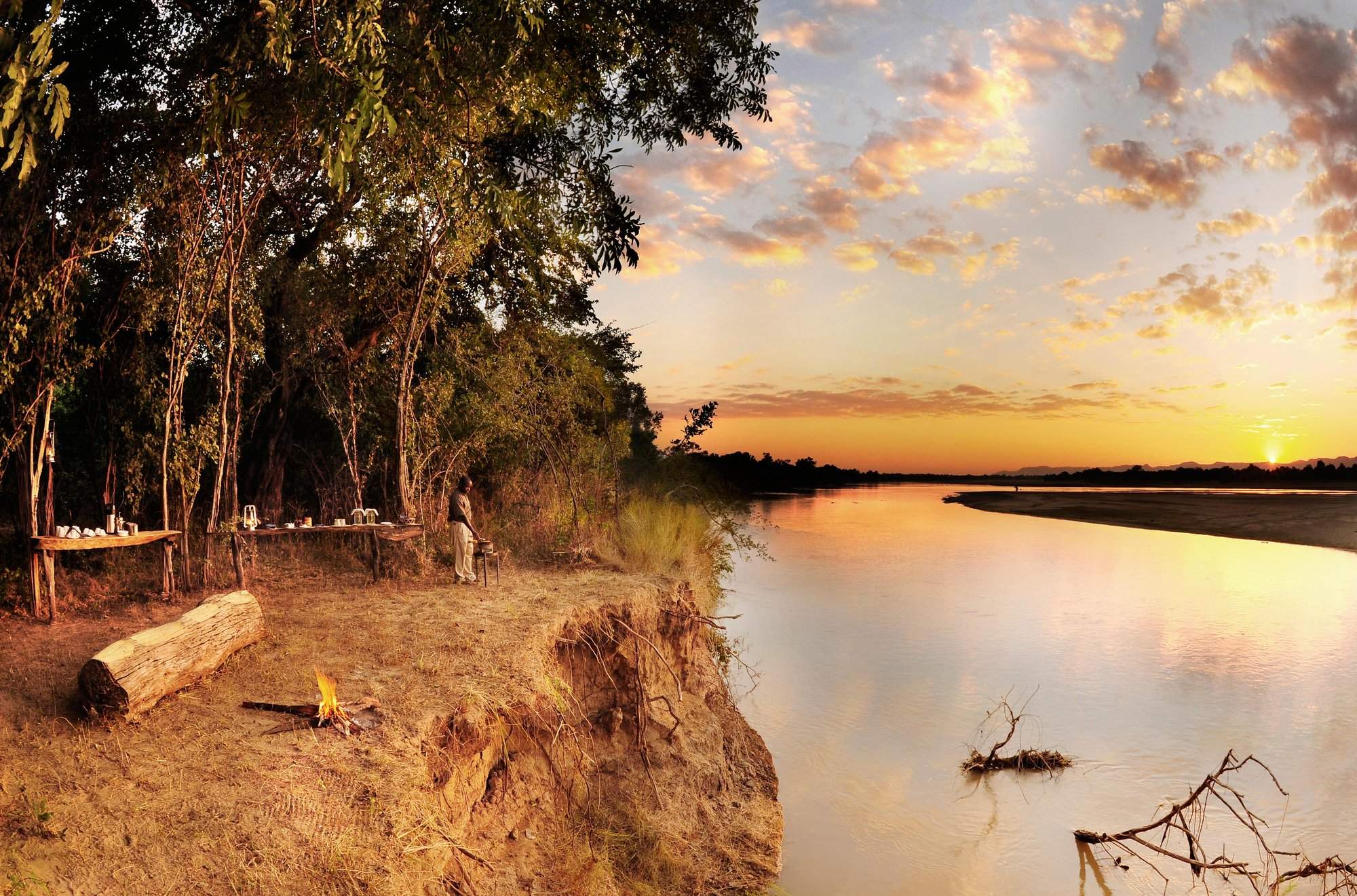
Bilimungwe Bushcamp
A smart bushcamp with four very spacious chalets, Bilimungwe offers interesting walking safaris in pretty riverine woodland, as well as day and night safari drives.
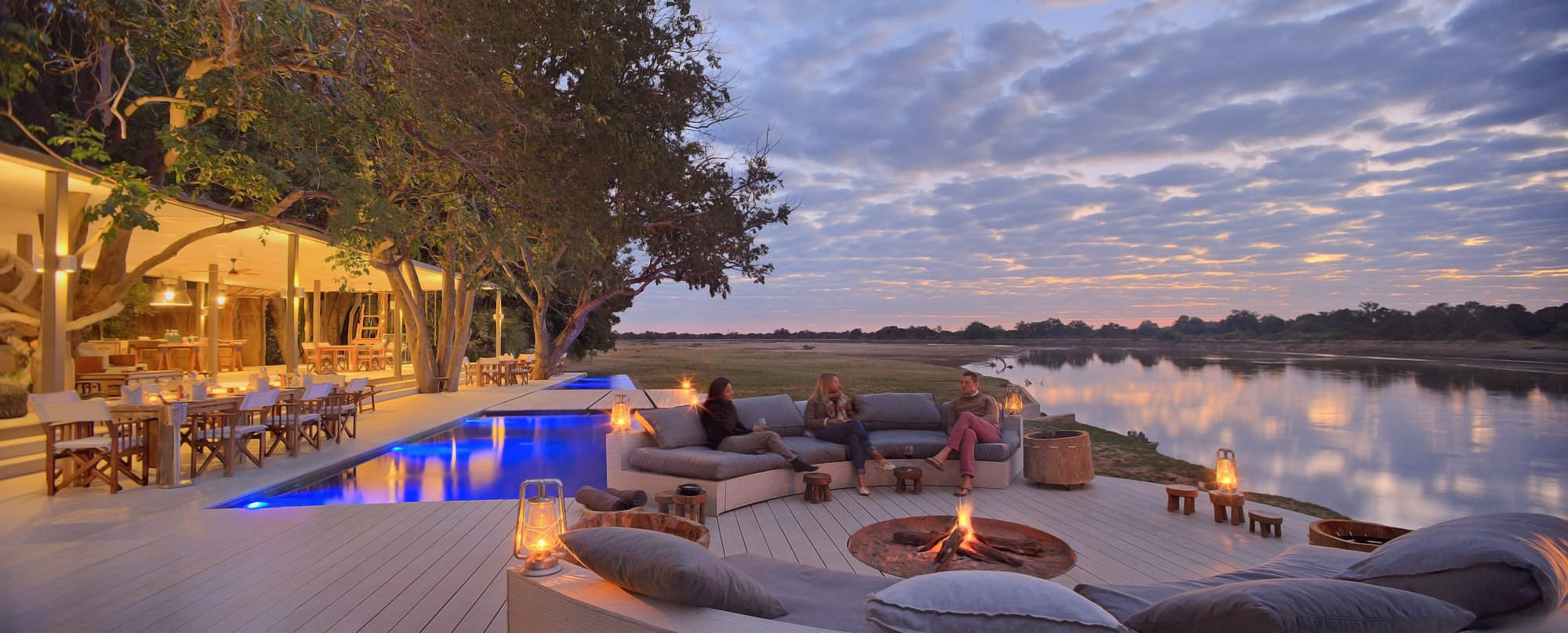
Chinzombo
Opened in early June 2013, Chinzombo offers luxurious and stylish accommodation with very high levels of service and excellent guiding.
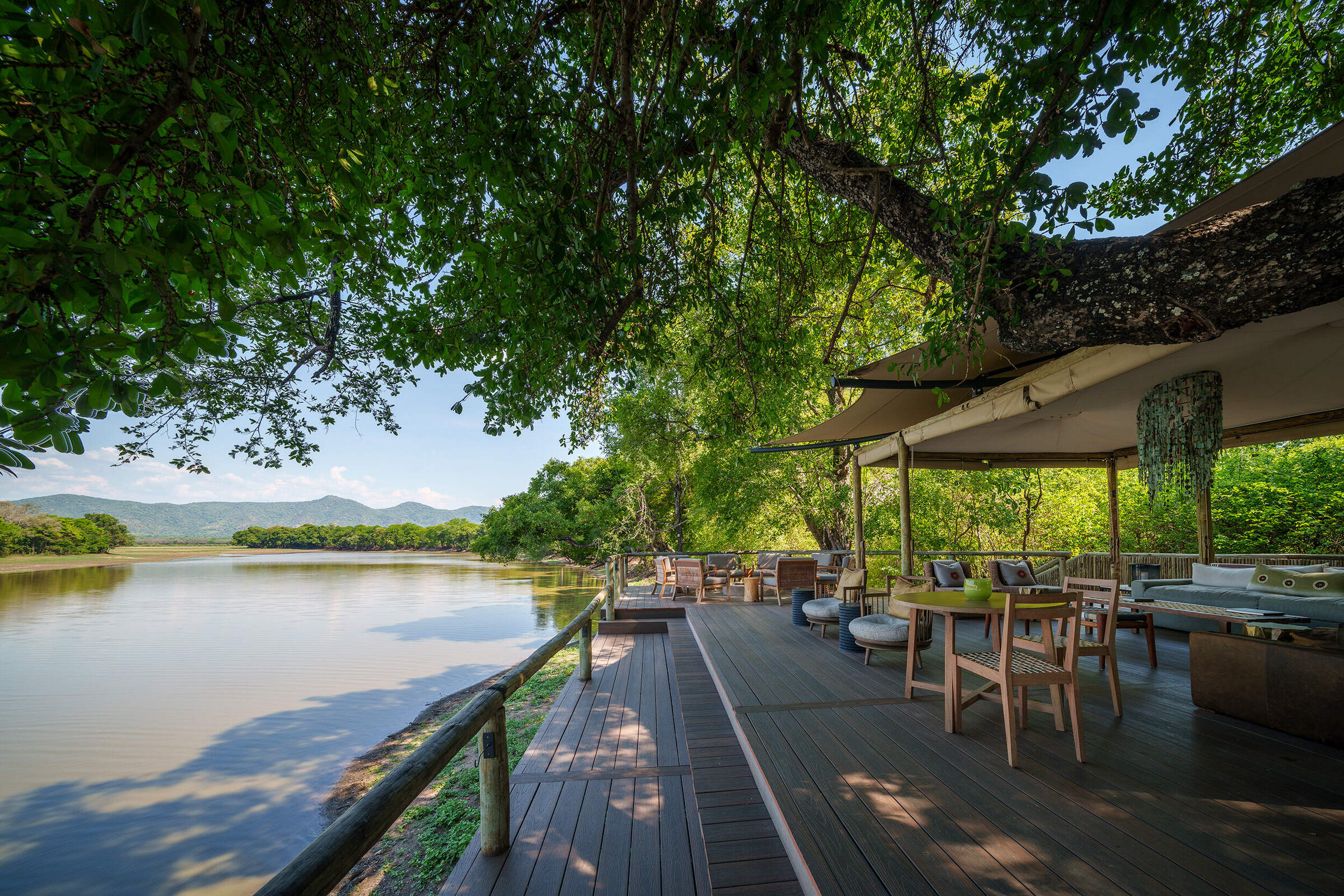
Chindeni
Chindeni Bushcamp is a very modern and minimalist camp, which is a far cry from your traditional bushcamp and unlike most of the other camps in South Luangwa.
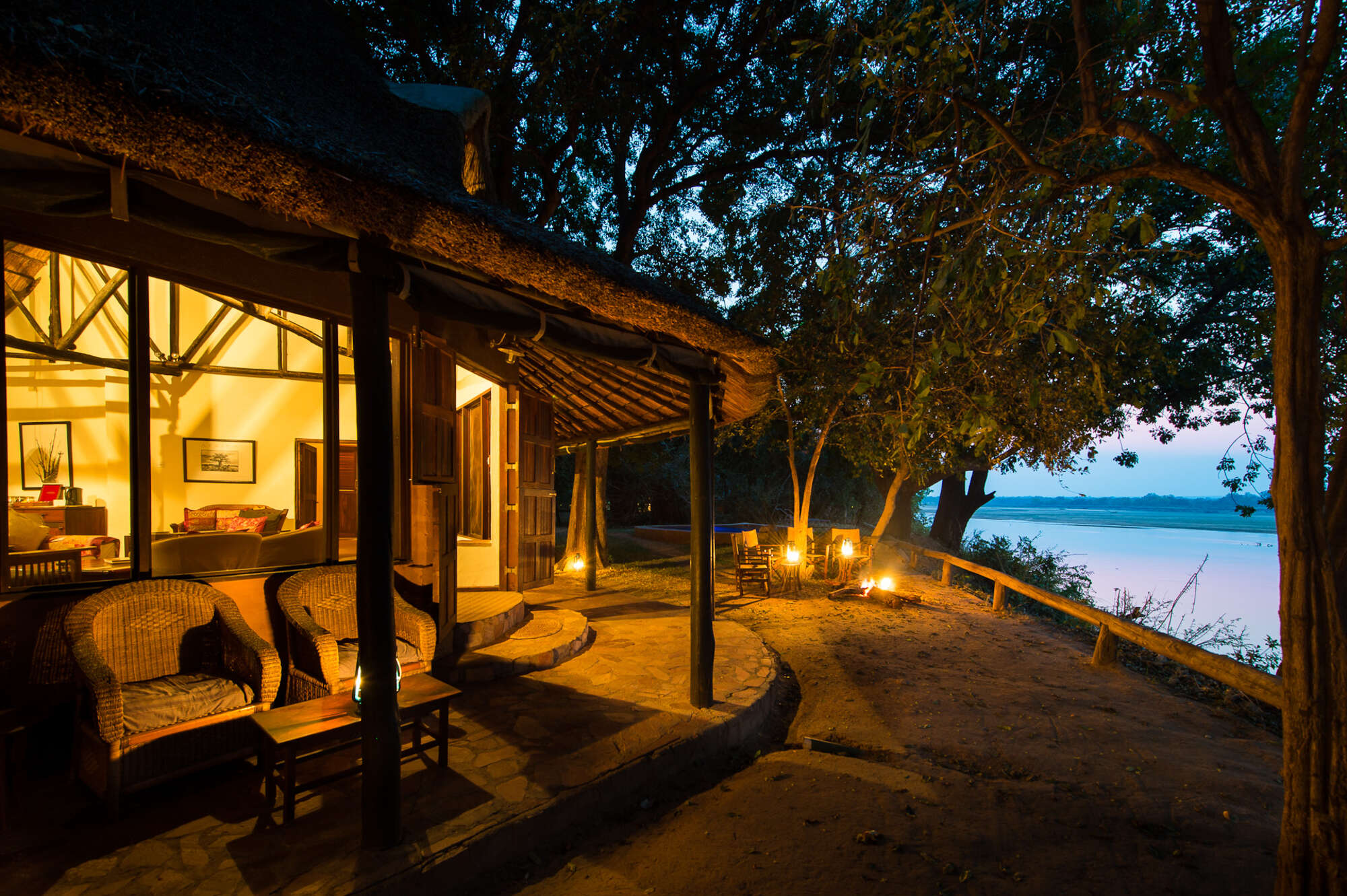
Robin's House
With your own expert guide, private vehicle, chef and valet, the two-bedroom Robin's House offers an exclusive, flexible safari experience – and is open year round.
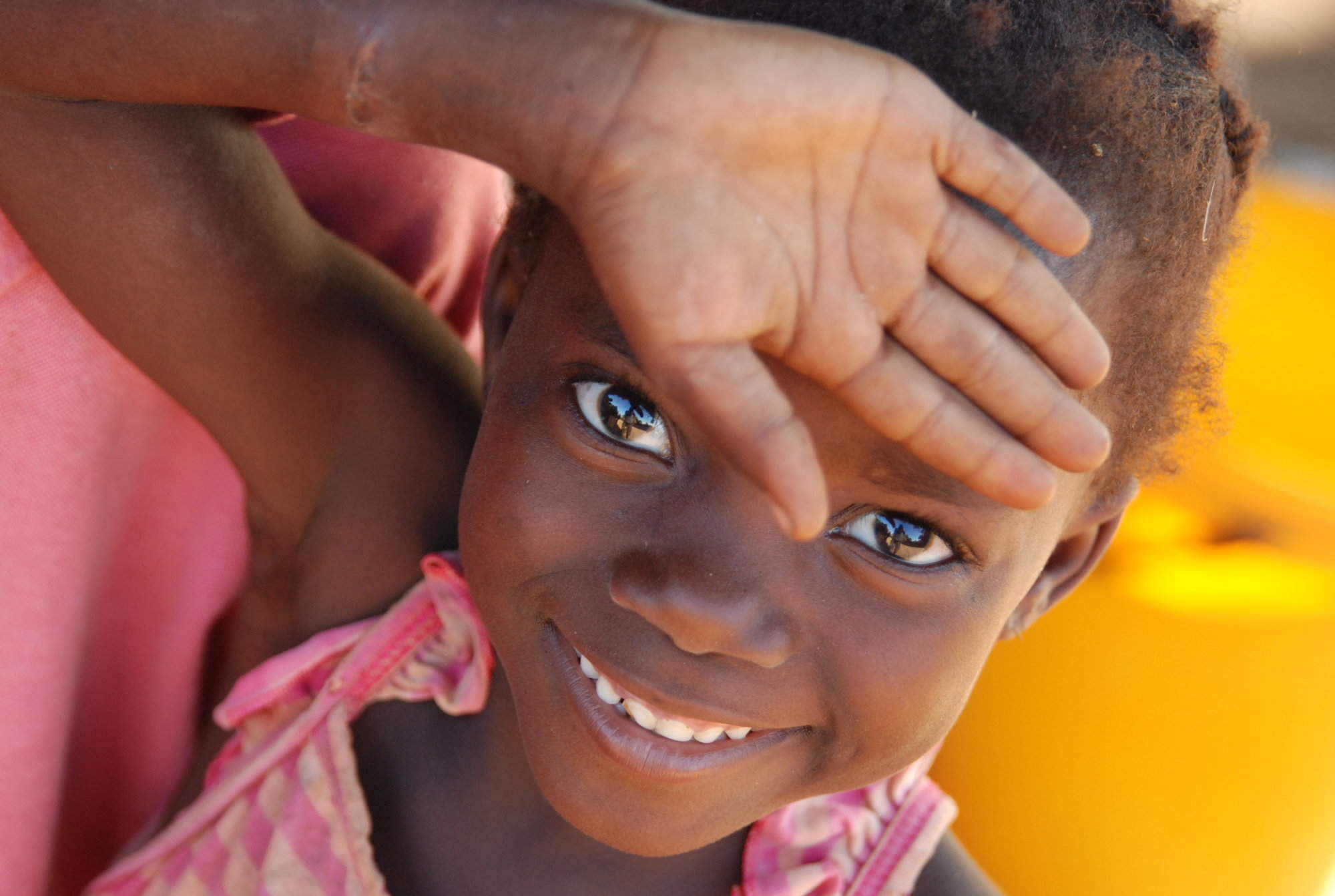
Kawaza Village
Kawaza Village – beside the South Luangwa National Park, offers guests the rare opportunity to appreciate local village life. Visit for a few hours or stay overnight.
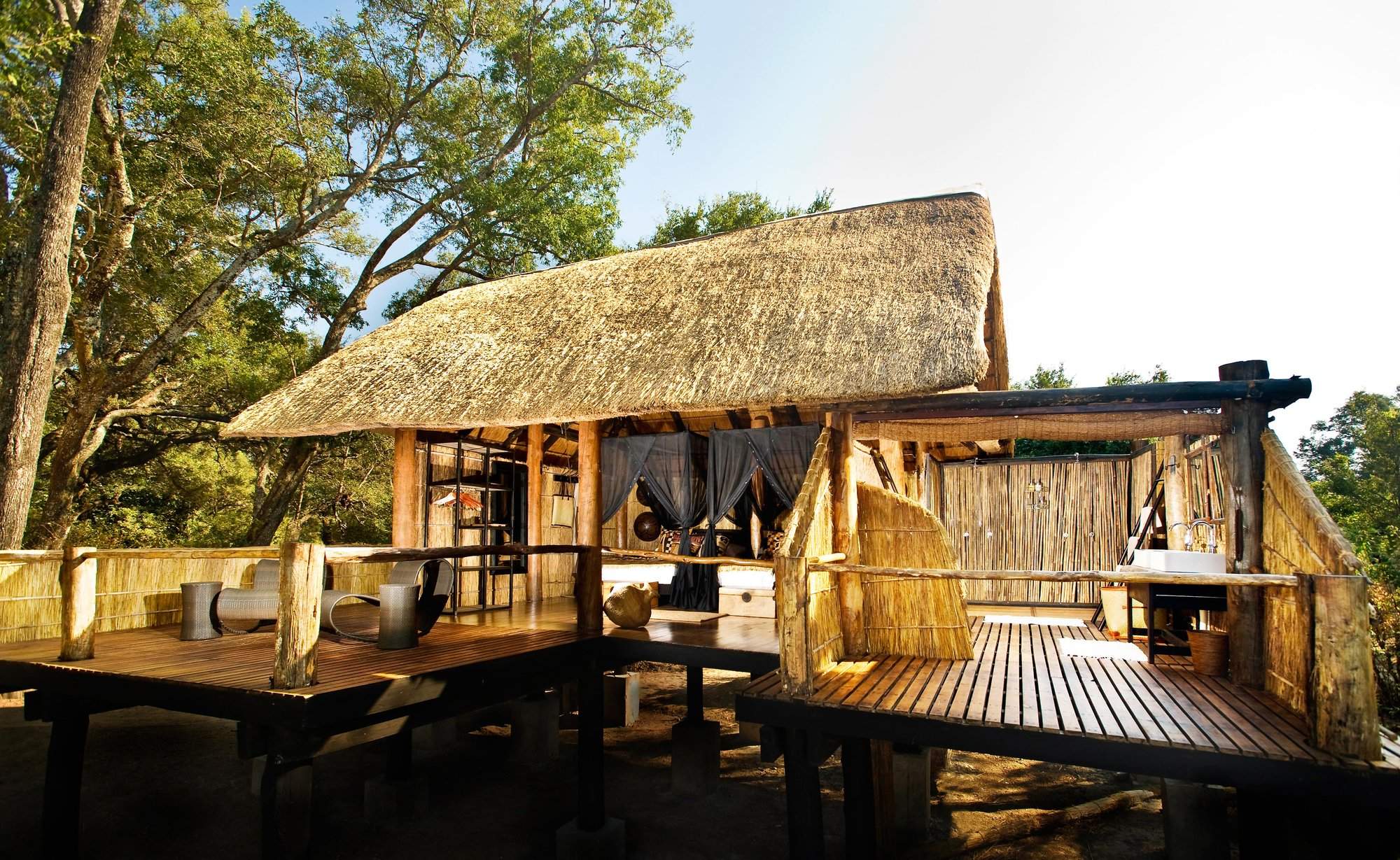
Chamilandu Bushcamp
A comfortable little bushcamp, Chamilandu has a picturesque setting by the Luangwa River, in an area with a range of habitats to explore on foot and by 4WD.
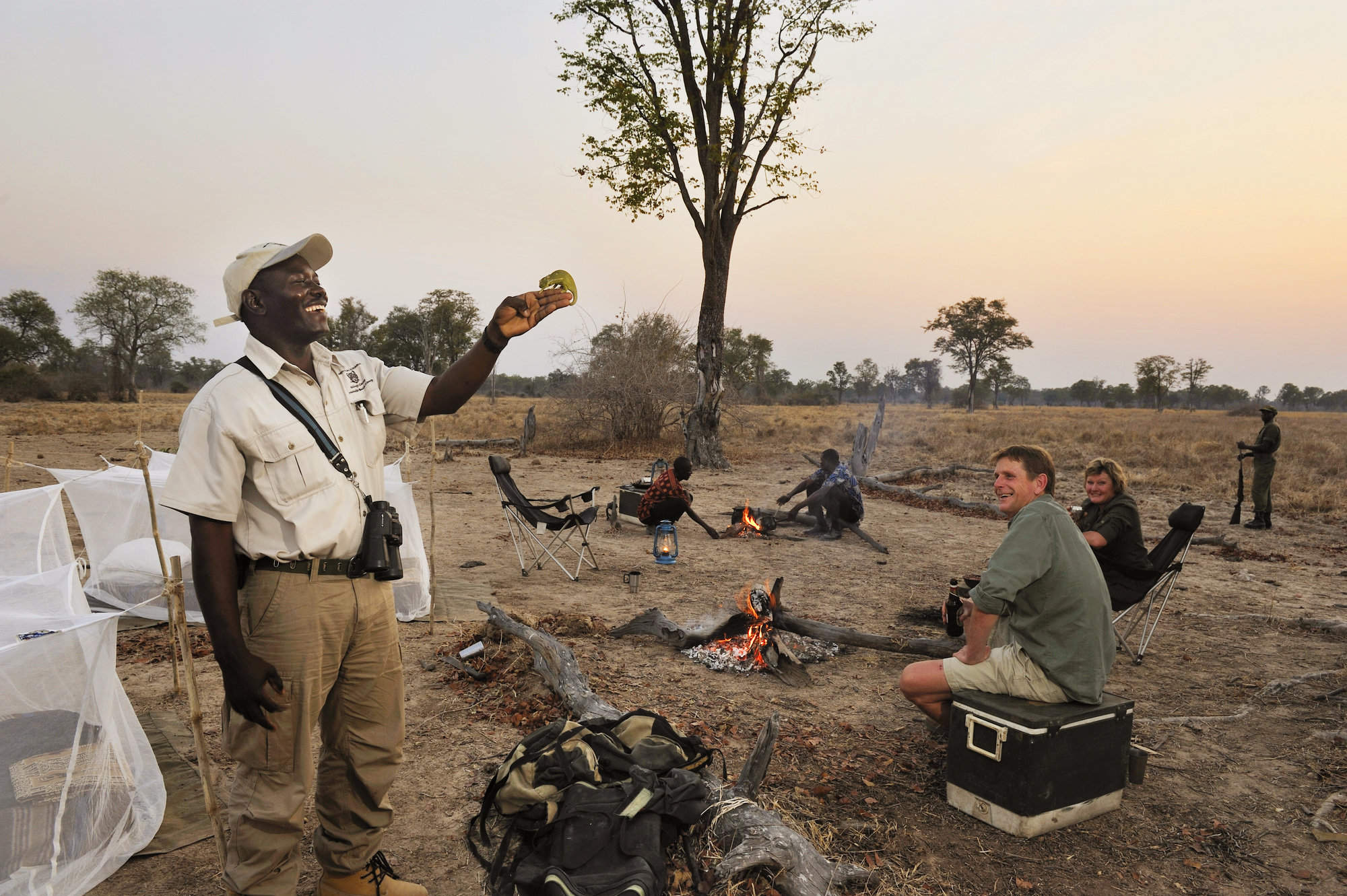
Mwamba Camp-out
The Mwamba-Camp Out allows you to have an incredibly adventurous night in the bush, sleeping under mosquito nets with activities led by some of the best guides in Zambia.
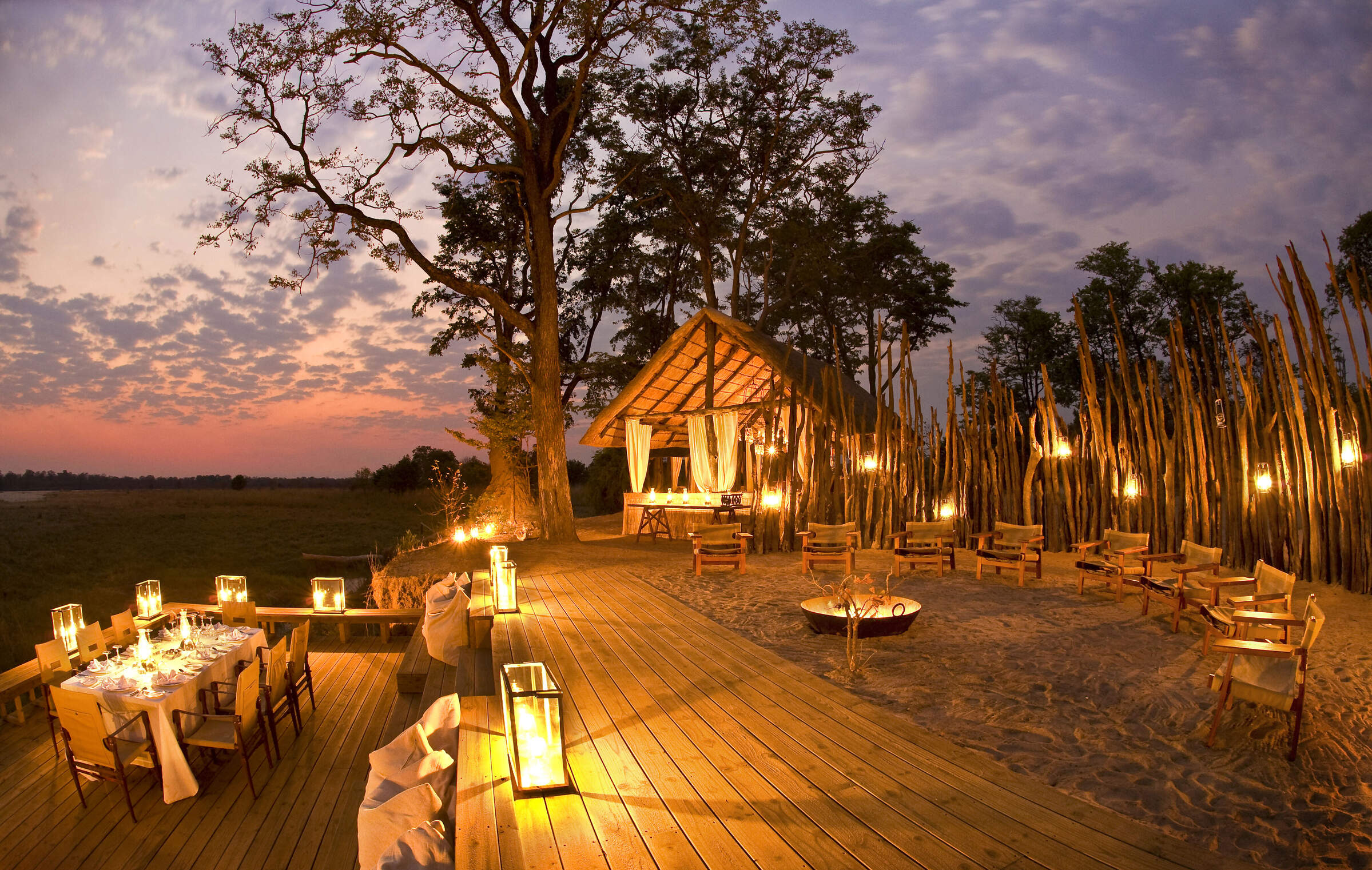
Zungulila
Zungulila is a small, comfortable tented bushcamp with an emphasis on walking safaris, in the remote southern section of the South Luangwa.
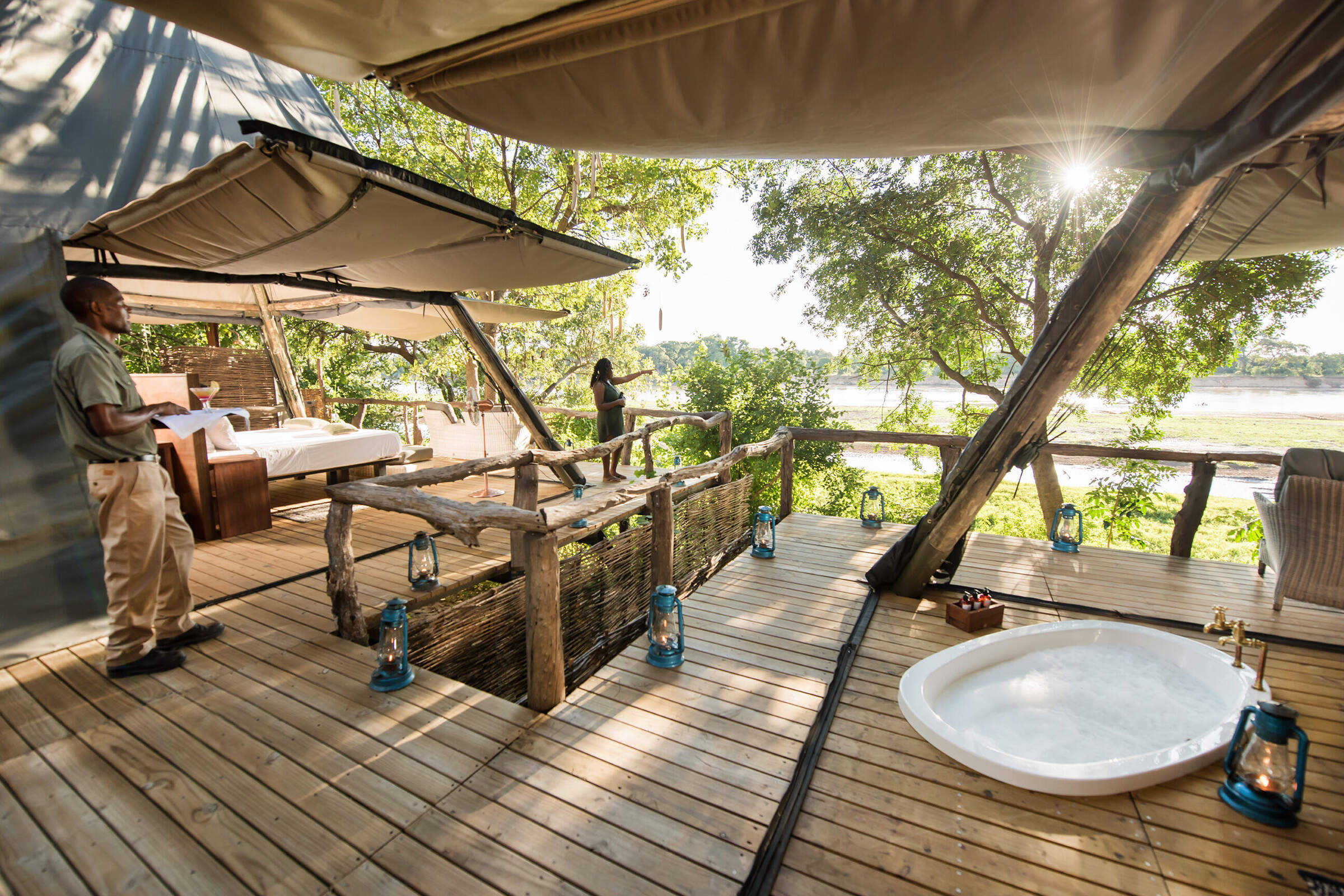
Shawa Luangwa
Opened in June 2021, Shawa Luangwa Camp is a small, intimate and rustic camp, with a good location in a remote section of the South Luangwa National Park.
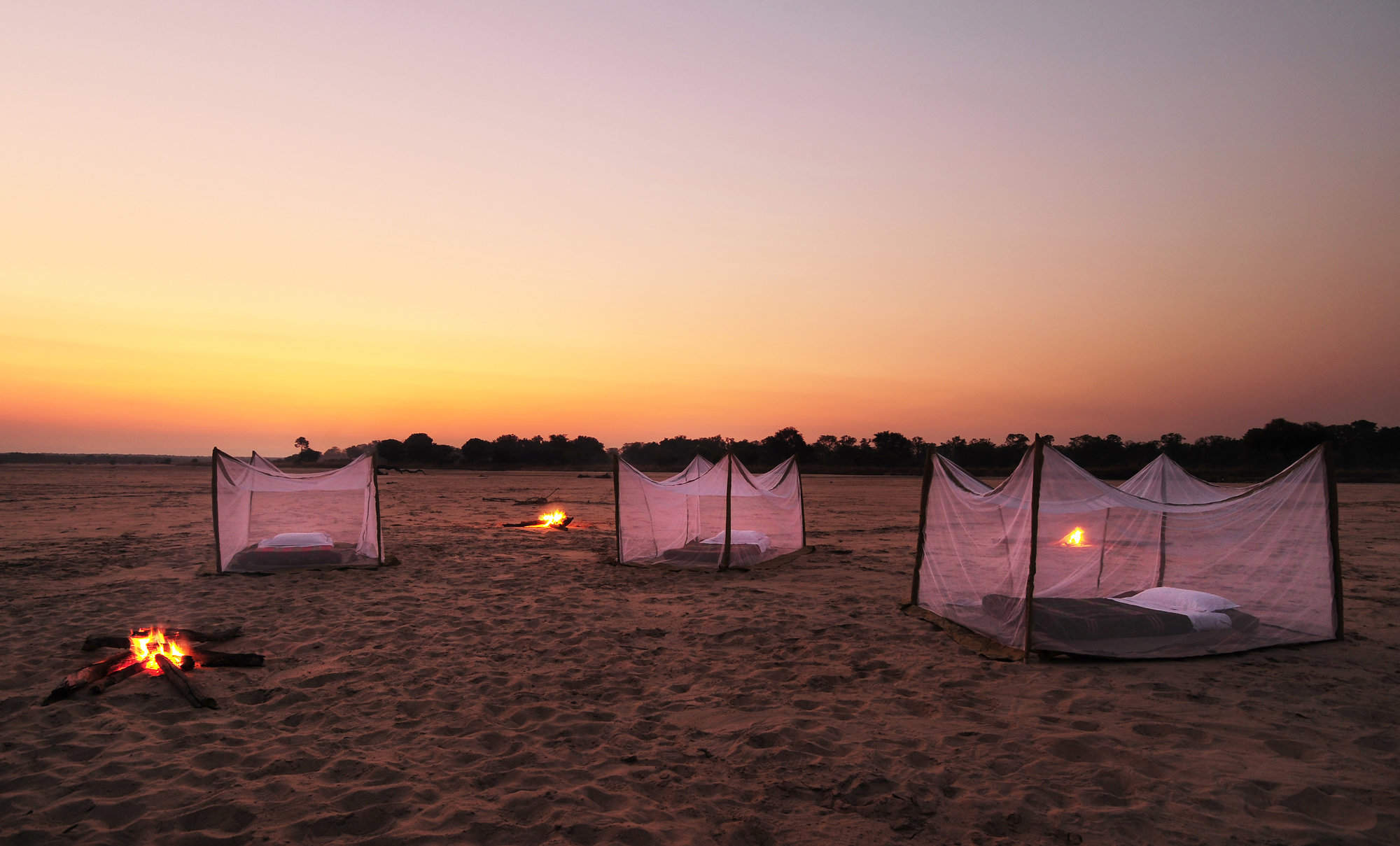
Luwi Riverbed Sleepout
For an adventurous night in South Luangwa National Park, come and sleep out in the bush, around a campfire, with an experienced guide and game scout.
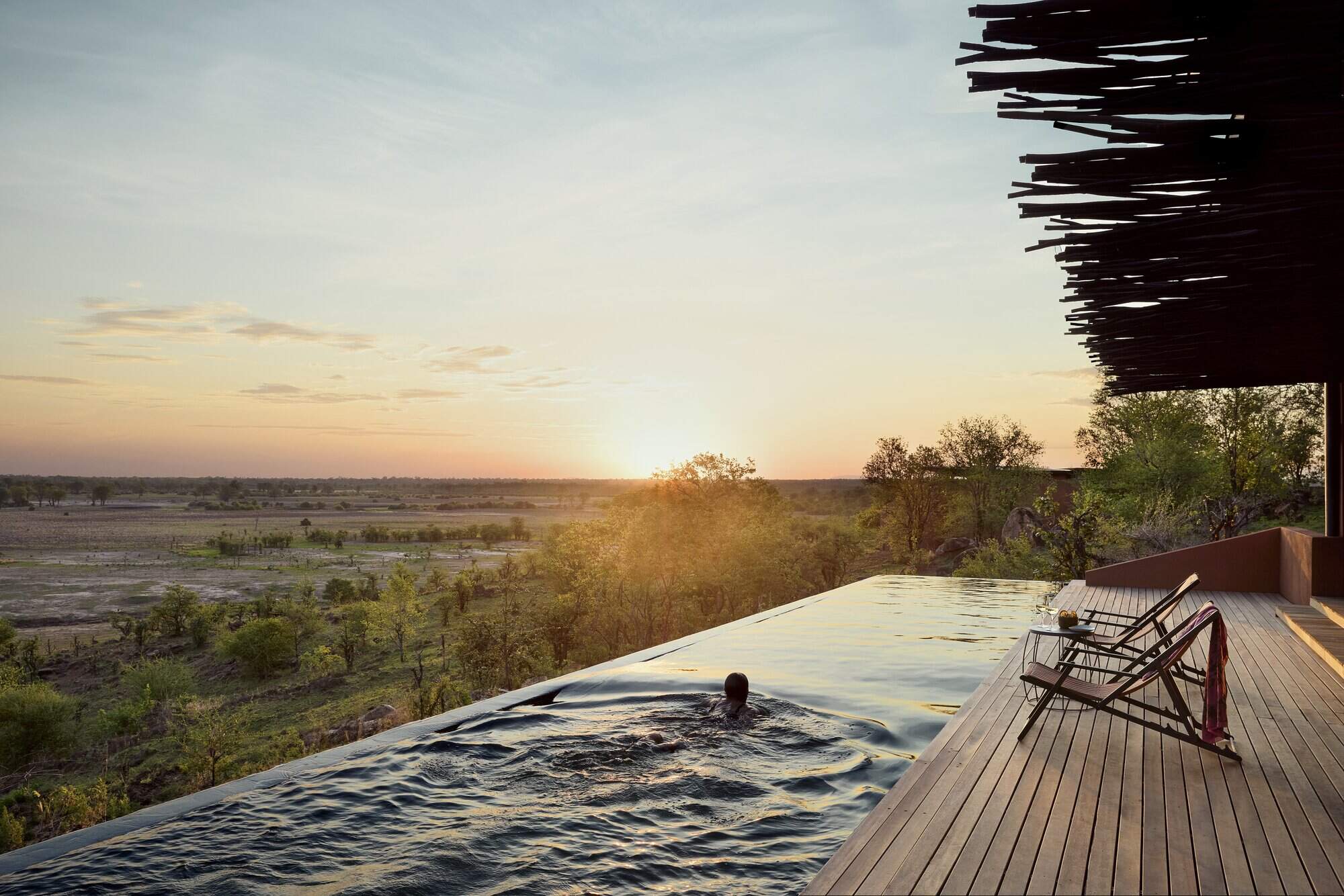
Chichele Lodge
Currently in the final stages of an extensive rebuild, Chichele Presidential Lodge stands high within the park, with superb views, and is due to reopen in early 2025.
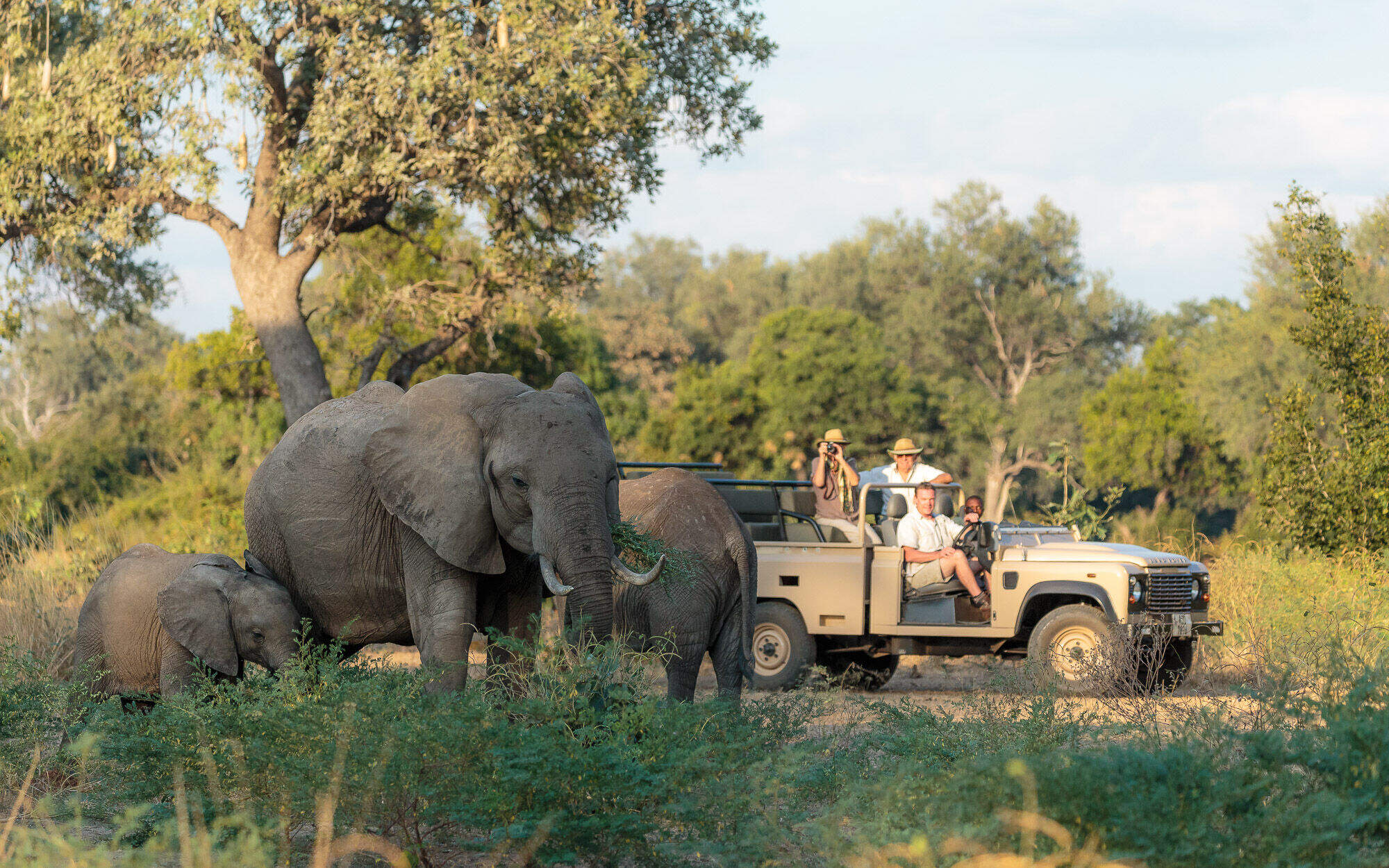
Nkonzi Camp
A simple and rustic bush camp, Nkonzi has a strong focus on walking safaris in this remote section of Zambia’s South Luangwa National Park.
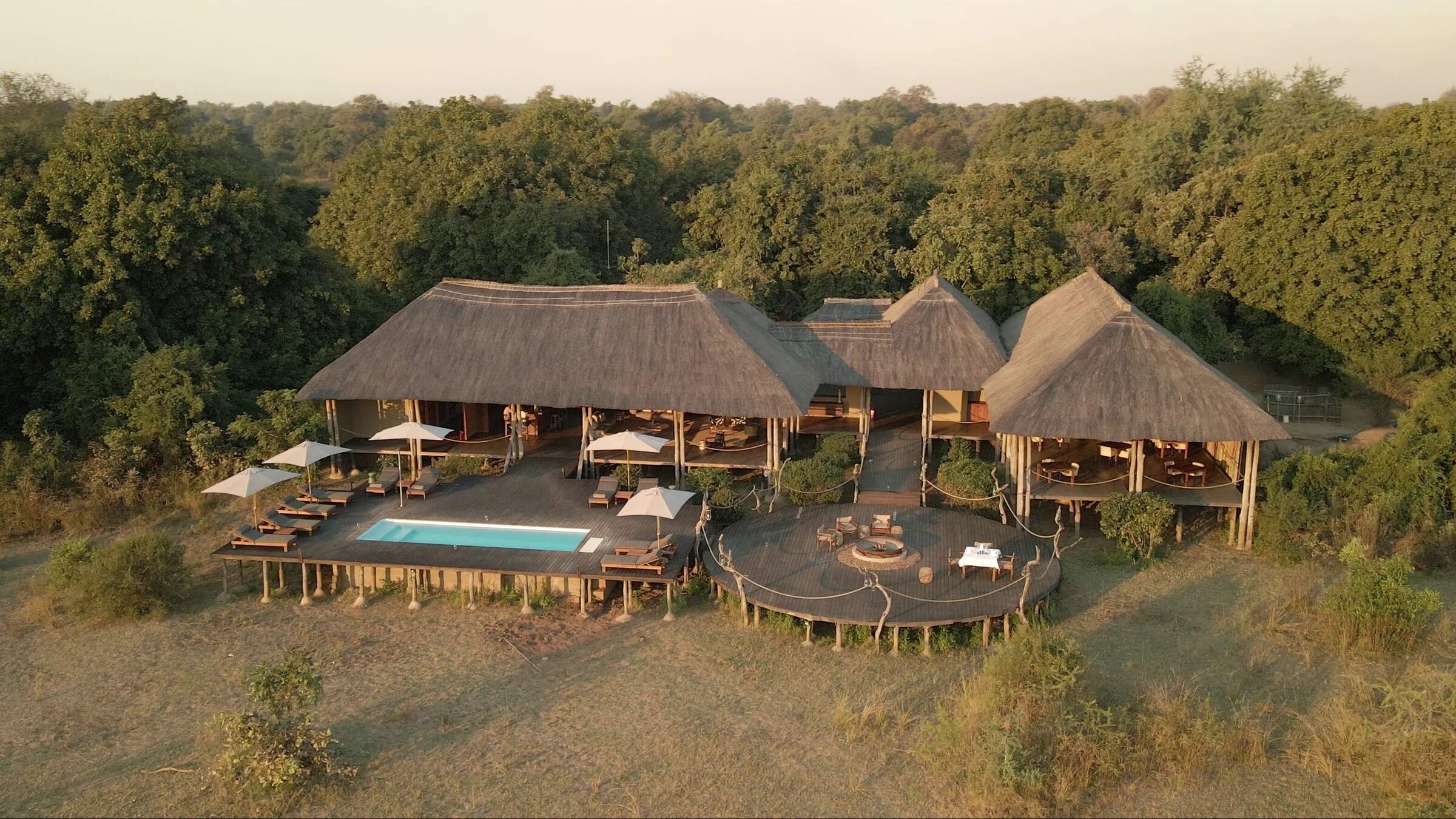
Chikunto
Chikunto Safari Lodge is a more traditional property in the South Luangwa National Park, sitting on a peninsula of land created by the meandering Luangwa River.
Our travellers’ wildlife sightings in South Luangwa
Our travellers’ sightings of key wildlife species are an intrinsic part of our understanding of the South Luangwa National Park.
For many, keeping a record of their sightings of these species – including the major predators, along with wild dog, buffalo, elephant, giraffe, hippo, spotted hyena and zebra – helps to enhance their South Luangwa safari.
For us, this information enables us to assess with increasing accuracy where you are likely to spot individual species during your safari; citizen science in action. Whether you’re seeking the South Luangwa’s giraffes, or intrigued by the possibility of watching wild dog, see our interactive map showing the best locations for individual wildlife species in Zambia.
And to find out more, click on a species or read how this survey works.

99% success

99% success

96% success

96% success

90% success

86% success

85% success

83% success

47% success

39% success

16% success

7% success

4% success

1% success

1% success
When to go to South Luangwa National Park
Perhaps the question we are most frequently asked is “when is the best time to go to South Luangwa National Park?”. And the answer, of course, depends on many factors.
The best time to see animals in the South Luangwa is from around June, increasing through to October as the dry season progresses and the Luangwa River is reduced to a series of pools. As a result, August–October is when the park is at its busiest, and accommodation in the South Luangwa is at its most expensive.
During the shoulder season, around June–July and in early November, game viewing is still very good, but visitors are fewer and lodge rates tend to fall.
Few camps in the South Luangwa remain open during the “emerald” season, typically from December when the rains have started, but those that do showcase a verdant setting with the river flowing and migrant birds returning to nest.
Jan
Feb
Mar
Apr
May
Jun
Jul
Aug
Sep
Oct
Nov
Dec
South Luangwa National Park in January
January marks the height of the wet season in South Luangwa. Expect frequent downpours, often lasting a few hours, with intermittent sunny periods. The mercury regularly climbs above 30°C, accompanied by high humidity. The park's landscape is verdant and lush, with crystal-clear air.
However, the abundance of water causes most larger animals to disperse, and the thick vegetation can hinder game viewing. Walking safaris are largely impractical during this time. Migratory birds, many in breeding plumage, boost the area's avian diversity. Most lodges close and the few that remain open offer their lowest rates. Only the central network of all-weather roads is reliably passable for 4WD safaris. Low numbers of visitors ensuring a tranquil park experience for those who do visit.
- Wet season peak, frequent showers
- Most lodges and all bush-camps are closed
- Lush vegetation, ideal for photography
- Large wildlife is scattered, can be challenging to spot
- Few tourists, budget-friendly rates
Our view
This is not a great time to visit
Weather in January
South Luangwa National Park in February
February continues the ‘green season’ trend in South Luangwa National Park, with impressive thunderstorms delivering short bursts of rain most days, punctuated by clear skies. The park remains awash with water, affecting wildlife distribution and lodge operations.
Dense vegetation limits game viewing opportunities on safari and walking safaris aren’t usually possible. However, the swollen Luangwa River allows for unique boating experiences unavailable during drier months. Despite challenging conditions, patient visitors may be rewarded with sightings of animals caring for their young. The handful of operational lodges maintain low rates, and the park sees few visitors during this period.
- Continued wet season, regular downpours
- All bush-camps and most lodges are closed
- Verdant scenery, photogenic landscapes
- Game viewing challenging due to thick foliage
- Low visitor numbers, economical pricing
Our view
This is not a great time to visit
Weather in February
South Luangwa National Park in March
March signals the tail end of South Luangwa's rainy season, with heavy showers still frequent. Water levels peak, so driving off the park’s all-weather road network remains challenging. Daytime temperatures consistently exceed 30°C, with rain-induced humidity remaining high.
Most lodges are still closed, and thick vegetation continues to impact game viewing and walking safaris. However, this period can offer exceptional sightings of animals with their offspring, and predator activity often increases. Wild dogs have historically been particularly active in the park during this time. The combination of clear air and increasingly blue skies provides excellent photographic opportunities. Birdwatching remains superb as migratory species prepare for their winter journey.
- Wet season persists, intermittent rain
- Many lodges remain closed
- Abundant greenery, picturesque settings
- Young animals plentiful, but hard to see
- Minimal crowds, cost-effective travel
Our view
This is not a great time to visit
Weather in March
South Luangwa National Park in April
April represents a transitional period in South Luangwa National Park as the rains shift from intense downpours to lighter, less frequent showers. The park's scenery remains incredibly green and vibrant, though larger wildlife can be harder to spot on safaris.
Some lodges begin to reopen while seasonal bushcamps remain closed as they prepare for the upcoming dry season. The Luangwa River reaches often its highest level in April, creating a spectacular sight. Despite the challenges, this period can offer unique experiences for those willing to brave the unpredictable conditions – and accept a greatly reduced choice of places to stay.
- Wet season waning, occasional showers
- Some lodges begin reopening
- Landscape still lush, great for photographers
- Wildlife viewing slowly improving
- Few visitors, attractive off-season rates
Our view
This is not a great time to visit
Weather in April
South Luangwa National Park in May
May is a lovely month; it typically heralds the start of the dry season in South Luangwa. While occasional showers may occur, most days are clear and sunny. As winter approaches, temperatures begin to drop, with daytime highs around 26°C.
The drying landscape improves access within the park, and most lodges reopen. Some standing water remains, but game viewing noticeably improves as the vegetation thins out. The clear air continues to benefit photographers. Late May is very popular among the Luangwa’s ‘safari regulars’ who seek to capitalise on good weather, improved wildlife sightings, newly-opened camps (including some seasonal bush-camps) and the final weeks of low-season rates at many lodges.
- Dry season onset, clearer skies
- Most lodges and some bush-camps operational
- Vegetation still green, crisp air
- Game viewing conditions improving
- Last month for lower accommodation prices
Our view
A good time to visit, with pros & cons
Weather in May
South Luangwa National Park in June
June in South Luangwa National Park is characterised by virtually rainless days and abundant sunshine. Humidity levels plummet, and winter's approach brings cooler temperatures, with nighttime lows around 10°C and daytime highs of 25°C.
The landscape remains lush, but the thinning vegetation significantly enhances visibility for game viewing, the conditions are ideal for walking safaris. All the lodges and bushcamps in the park are operational by early June. While some offer shoulder season rates, others are already running with high-season pricing. Wildlife begins to concentrate around water sources, setting the stage for excellent game viewing in the coming months.
- Consistently sunny, cooler nights
- All South Luangwa lodges open
- Wildlife sightings becoming more frequent
- Ideal conditions for walking safaris
- Viewing of the Victoria Falls at its best
Our view
A very good time to visit
Weather in June
South Luangwa National Park in July
As the dry season progresses in South Luangwa, July sees vegetation and grasses dying back, with water becoming increasingly scarce. Wildlife congregates around remaining water sources, most notably along the Luangwa River, leading to excellent game viewing opportunities.
July marks the heart of winter, with daytime temperatures in the 20s Celsius, whilst nighttime lows can drop to single digits. Early morning and late evening game drives can be particularly chilly, with lodges often providing blankets and hot water bottles. Bring your hats, coats and gloves! Visitor numbers rise significantly, and space at popular small camps can become limited. Nearly all properties now charge their highest rates.
- Warm days, chilly evenings
- Game viewing notably improved
- Excellent visibility for walking safaris
- High season prices for most camps and lodges
- Comfortable daytime temperatures
Our view
A very good time to visit
Weather in July
South Luangwa National Park in August
August in the national park offers some of the year's best game viewing opportunities. South Luangwa’s vegetation has largely died back, and wildlife clusters around remaining water sources.
Rain is extremely unlikely, with sunny days largely guaranteed, though a haze may sometimes appear on the horizon due to dust and smoke in the air. Nighttime temperatures can dip below 5°C, but daytime highs reach the 20s Celsius. Warm clothing is essential for morning and evening drives. This is one of the most popular months to visit the park for a safari, with lodges and camps charging peak rates and often booking up far in advance.
- Very dry warm days and cold nights
- Prime wildlife viewing near water sources
- Perfect weather for walking safaris
- Peak season means highest prices
- Some haze may affect photography
Our view
Fantastic: the very best time to visit
Weather in August
South Luangwa National Park in September
September is arguably the very best time to visit South Luangwa National Park. It probably hasn’t rained for many months, humidity is low, and temperatures are just beginning to climb.
Mornings are more comfortable for 4WD safaris, rising to daytime typical highs in the low 30s Celsius. Water scarcity forces the wildlife to congregate around remaining sources, particularly around the Luangwa River, where most of the camps and lodges are situated. There high game densities lead to increased chances of inter-species interactions. It’s peak season for lodges and camps charge which are often fully booked. A little haze may affect long-distance views and photography. The Luangwa River's water levels continue to drop, concentrating hippos and crocodiles life in the remaining stretches.
- Dry and hot, clear skies
- Exceptional month for wildlife observation
- Landscape sometimes hazy due to dust and smoke
- Peak season, lodges often fully booked
- Higher prices for accommodation
Our view
Fantastic: the very best time to visit
Weather in September
South Luangwa National Park in October
October sees the dry season peak in South Luangwa at its most intense, with the landscape increasing parched. Occasional showers may occur as the promise of rain approaches. Temperatures can soar above 40°C during the day, rarely dropping below 20°C at night.
This heat can be draining, so walking safaris will set off early in the morning to beat the heat and sitting in an open 4WD on safaris can feel like facing a large hair-drier. Heat-haze and smoke may obscure the horizon as the Luangwa River becomes a series of pools, crowded with hippos and crocodiles. Other wildlife cautiously approaches these water sources, leading to thrilling predator-prey interactions. Game viewing is at its absolute best with the best chance of witnessing hunts.
- Optimal wildlife viewing conditions
- Very hot days and nights
- Dusty, hazy atmosphere is challenging for photos
- Some lodges start lowering their rates
- Less crowded than previous months
Our view
A very good time to visit
Weather in October
South Luangwa National Park in November
November typically witnesses the end of the dry season in South Luangwa. While the onset of rains is unpredictable, temperatures remain consistently high and humidity builds as the wet season approaches.
Early November may still be dry, but spectacular thunderstorms usually arrive, often later in the month, triggering rapid green growth when they do come – and an explosion of life from insects and smaller animals. Everything seems to come to life! When pools of water becomes more readily available away from the Luangwa River the wildlife quickly disperses. Some camps and all the seasonal bush-camps camps close; those that remain open reduce their rates. The rains quickly clear the air of dust and smoke, improving visibility and photographic conditions.
- Unpredictable month: depends on the rains
- Hot and humid – then the set season begins
- Wildlife dispersing as vegetation thickens
- Lower accommodation rates, fewer tourists
- Improved conditions for landscape photography
Our view
A good time to visit, with pros & cons
Weather in November
South Luangwa National Park in December
December usually marks the first full month of South Luangwa's wet season. Heavy thunderstorms become frequent, interspersed with sunny intervals. Daytime temperatures often exceed 30°C, accompanied by high humidity.
The rainfall transforms the landscape, encouraging lush vegetation growth. It’s a time renewal when insects, birds and smaller wildlife abound. While the larger species of wildlife remains in the park, wildlife viewing becomes more challenging due to the thick greenery and dispersed animal populations. Many lodges and all seasonal bush-camps are now closed as access to the park’s outlying areas becomes difficult. The few lodges that remain open offer lower rates and see few visitors. The rains clear the air, restoring vibrant blue skies and crystal-clear air which delights photographers.
- Rainy season in full swing
- Most lodges closed or offering low rates
- Wildlife harder to spot in thick vegetation
- Few visitors, budget-friendly period
- Lush green scenery, very photogenic landscapes
Our view
This is not a great time to visit
Weather in December
South Luangwa National Park: In detail
Wildlife and environment of South Luangwa
South Luangwa National Park lies in a wide alluvial plain and riverine area, the most fertile part of the Luangwa Valley. It incorporates a variety of habitats that in turn support a very rich flora and fauna.
Key to this variety are the valley's rich volcanic soils, augmented by fine deposits from the river. This, combined with plenty of rainfall and a position about 12–14° from the Equator, where there is plenty of light, creates the ideal base for a lush and diverse plant growth.
This rich vegetation in turn supports a wide variety of animals. Each species has its own niche in the food chain, and each herbivore has its favourite food plants – or favourite part of those plants. It’s an efficient use of vegetation, leading to the high densities of game that the valley supports.
Trees & vegetation of the South Luangwa
Spreading out from the river, a patchwork of different vegetation zones includes the ever-present miombo forests, interspersed with open, herby “dambos”, or shallow lakes, and mopane forests – both the stunted variety, and the beautiful mature “cathedral” mopane.
Although there are a few large open plains, these aren't common. Most notable is the plain at the heart of the Nsefu Sector, east of the Luangwa River, whose natural salt springs attract crowned cranes in their thousands.
Predators in the South Luangwa
South Luangwa has a top reputation as a first-class park for spotting leopards. This is largely because leopard hunt nocturnally, and the South Luangwa is one of Africa's few national parks to allow spotlit night drives.
Wild dogs are uncommon, but sightings have been becoming much more numerous in recent years. They're now regularly seen, especially around February to May, and it seems likely that their numbers are growing. Cheetah, however, have not been seen in the South Luangwa for several decades.
Antelope & other herbivores in the South Luangwa
Amongst South Luangwa National Park's many herbivores, three stand out as being endemic to the region – that is, those that occur nowhere else.
The beautiful Thornicroft's giraffe has a different (and more striking) coloration than the giraffes in the rest of southern Africa.
Cookson's wildebeest differ in having slightly reddish bands and often “cleaner” colours – and they are also a little smaller and more compact than their blue cousins.
And then there is Crawshay's zebra, an endemic subspecies of the more common plains zebra, completely lacking its cousin’s brown shadow-stripes between the black stripes.
Birds of South Luangwa National Park
The best time for birdwatching in the South Luangwa is around December to March: the wet or “emerald season”. Then summer migrants are here, lured by plentiful food. Once-dry plains have thick vegetation and water is everywhere, encouraging wading flocks of herons, egrets and storks and several species of geese and ducks.
Of special note during the rains is the huge breeding colony of yellow-billed storks that nest in a stand of tall trees surrounded by shallow water in the Nsefu Sector, in the north of the park.
Another birding highlight of the South Luangwa starts in the dry season. Around August–September, colonies of migrant carmine bee-eaters arrive to nest in holes in sandy riverbanks. Peak nesting activity is typically around September to October, with the birds leaving early in the new year.
Map of South Luangwa National Park
Take a look at our South Luangwa National Park maps and it’s immediately clear that most of the park’s lodges line the Luangwa River.
For a clear idea of how the tributaries of the Luangwa are threaded through the park, and the location of the Nsefu Sector, start with our reference map. Then switch to the Google map in satellite mode, and the valley falls into sharp relief, fringed to the west by the Muchinga Escarpment, with Lake Malawi running almost parallel to the east.
Zoom in for more detail of the whole park, or click on the camp icons for information on each of them. Zoom out and you can see the valley's proximity to the Zambian capital, Lusaka (a flight of around 1hr 10mins), and to the Lower Zambezi (1½-2 hours). For the Victoria Falls; a direct flight from Mfuwe Airport will take around 2-2½ hours, or 3–5 hours via Lusaka.
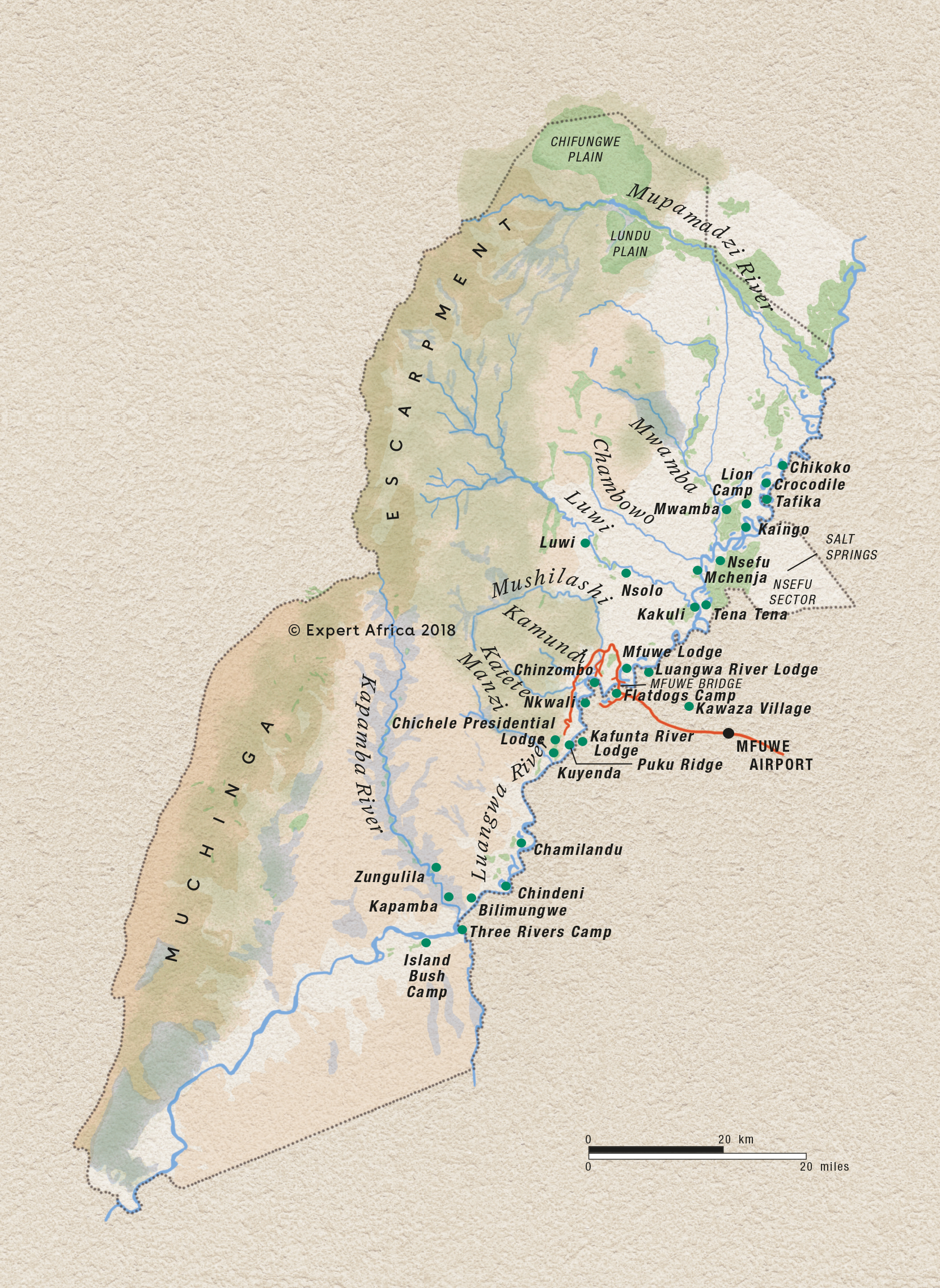
South Luangwa National Park: Safaris
Spread the net more widely, and the options for the best South Luangwa safari holiday broaden even further. If you have only a week for a Zambian safari, you could spend it all in the South Luangwa, but consider, too, combining it with a visit to the Lower Zambezi National Park, or perhaps the lesser-known Kasanka National Park.
With more time, how about contrasting time in the South Luangwa with Liuwa Plain, truly Zambia’s most remote park – and one that until recently was accessible only on a serious expedition? You could even make this a three-centre trip, taking in both Victoria Falls and the beaches of Lake Malawi.
Whatever your focus, give us a call, and let us tailor-make the right trip for you.

Scrub Hare Safari
7 days • 3 locations
LUSAKA AIRPORT TO LUSAKA AIRPORT
Camps run by welcoming owners with a passion for their environment are rare, and Tafika is one of the best. Combine this with walking safaris at equally excellent bushcamps for the best of the South Luangwa.
US$6,290 - US$7,630 per person

Perekani Walking Trail
10 days • 5 locations
LUSAKA AIRPORT TO LUSAKA AIRPORT
Five smart but rustic bushcamps are the comfortable staging posts for this walking safari in South Luangwa. The route offers outstanding seclusion and rich wildlife with top-quality guiding throughout.
US$9,590 - US$12,210 per person

Boehm's Zebra Safari
7 days • 2 locations
LUSAKA AIRPORT TO LUSAKA AIRPORT
This safari combines two high-quality owner-run camps in a very productive region of the South Luangwa. The guiding is excellent and with its hides this safari is perfect for serious photographers.
US$7,490 - US$9,410 per person
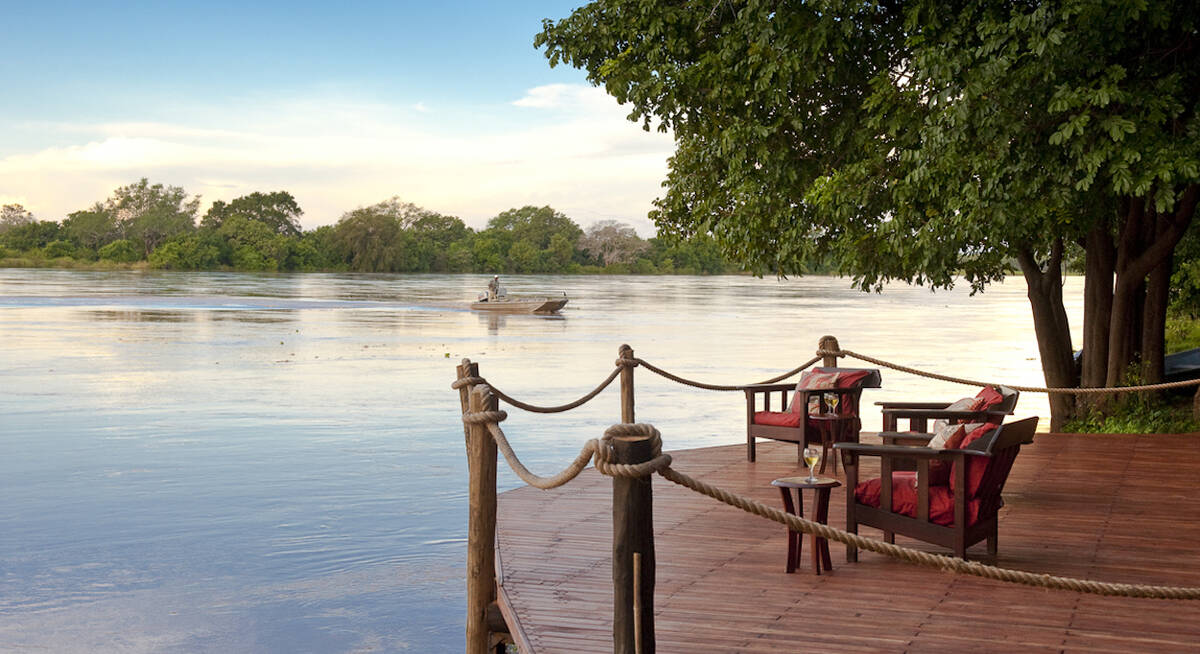
Hyena Safari
11 days • 4 locations
VICTORIA FALLS AIRPORT TO LILONGWE AIRPORT
Mix relaxation and adventure on a safari combining the South Luangwa with Victoria Falls and the beaches of Lake Malawi. These three locations are among the most iconic in southern Africa.
US$9,490 - US$11,910 per person

Hippo Safari
10 days • 4 locations
LUSAKA AIRPORT TO LIVINGSTONE AIRPORT
Combining excellent game with aspects of remoter safari in South Luangwa, as well as the cultural delights of Livingstone, this trip also makes use of long-stay discounts, making it an excellent-value and well-rounded adventure.
US$7,360 - US$8,780 per person
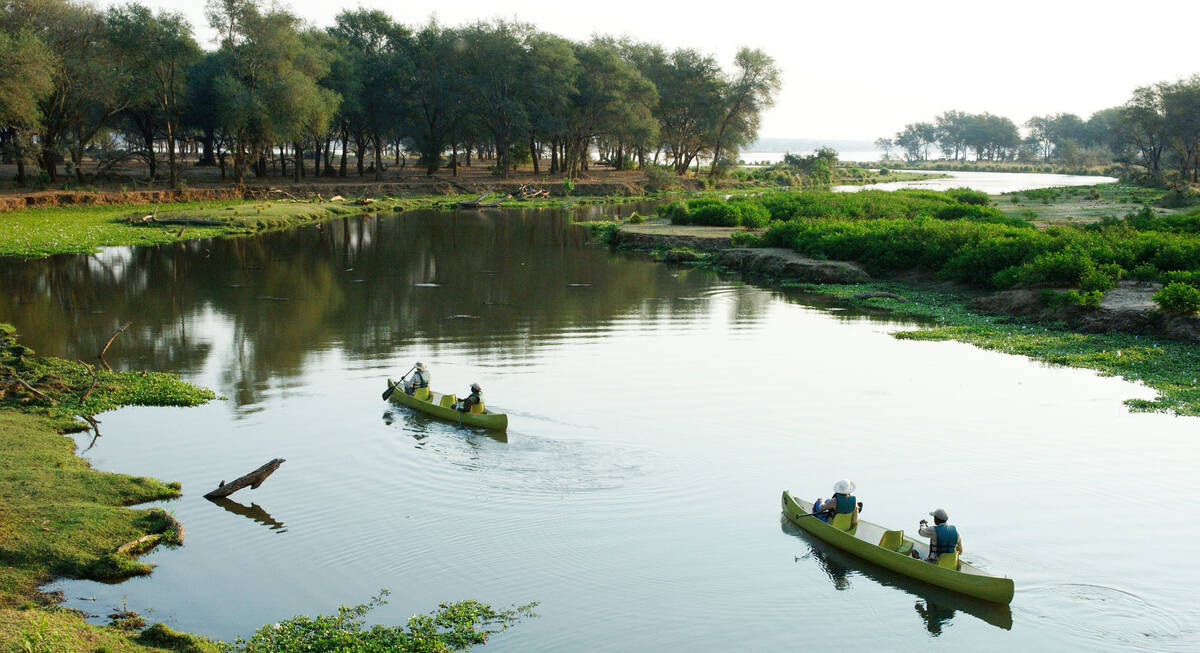
Crawshay's Zebra Safari
10 days • 4 locations
LUSAKA AIRPORT TO LUSAKA AIRPORT
This superb safari combines two of Zambia’s best national parks, the South Luangwa and the Lower Zambezi. The camps are small and high quality with excellent safari guides.
US$10,460 - US$13,820 per person

Robin Pope Walking Safari
7 days • 3 locations
LUSAKA AIRPORT TO LUSAKA AIRPORT
The definitive, original mobile walking safari; explore the remote north of the South Luangwa on foot while staying in a simple mobile camp that moves with the group.
US$7,370 - US$8,500 per person
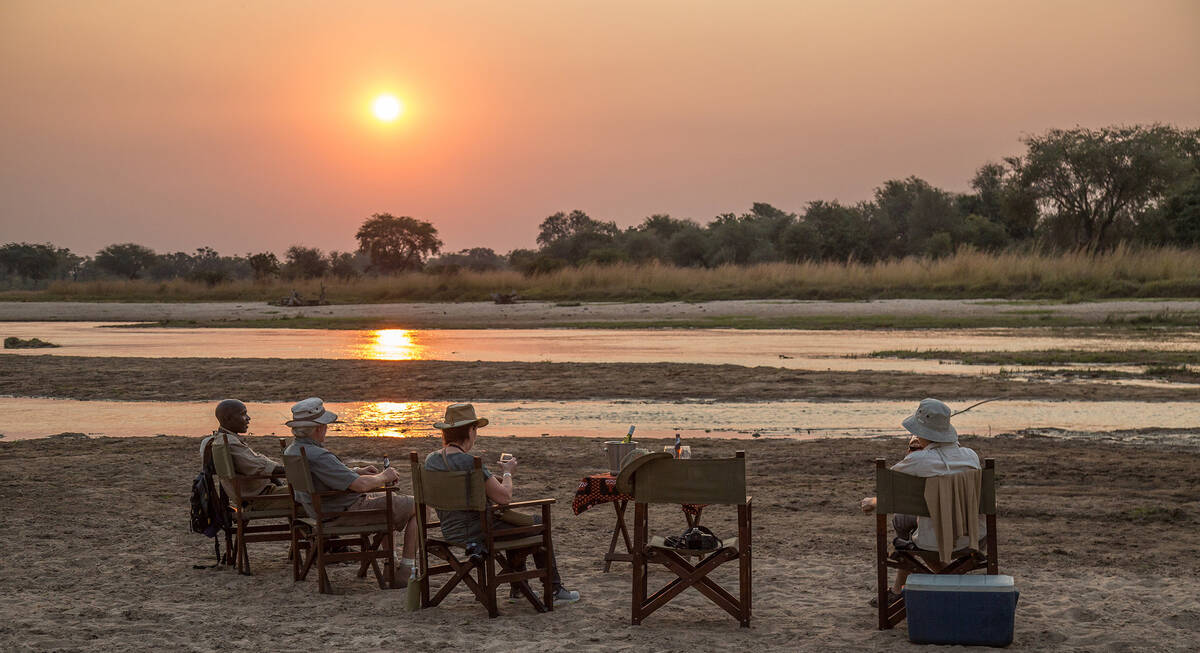
Giraffe Safari
9 days • 3 locations
LUSAKA AIRPORT TO LUSAKA AIRPORT
A safari to the remotest parts of Zambia’s Luangwa Valley. Perfect for experienced safari goers and first-time Africa adventurers. Explore with expert guides whilst staying at small bushcamps.
US$8,700 - US$10,430 per person

Duiker Safari
10 days • 3 locations
LUSAKA AIRPORT TO LUSAKA AIRPORT
Three luxurious bushcamps in stunning riverside locations, split between the South Luangwa and Lower Zambezi national parks, offer a wide variety of expert-guided safari activities in stunning game-rich environments.
US$10,960 - US$14,470 per person
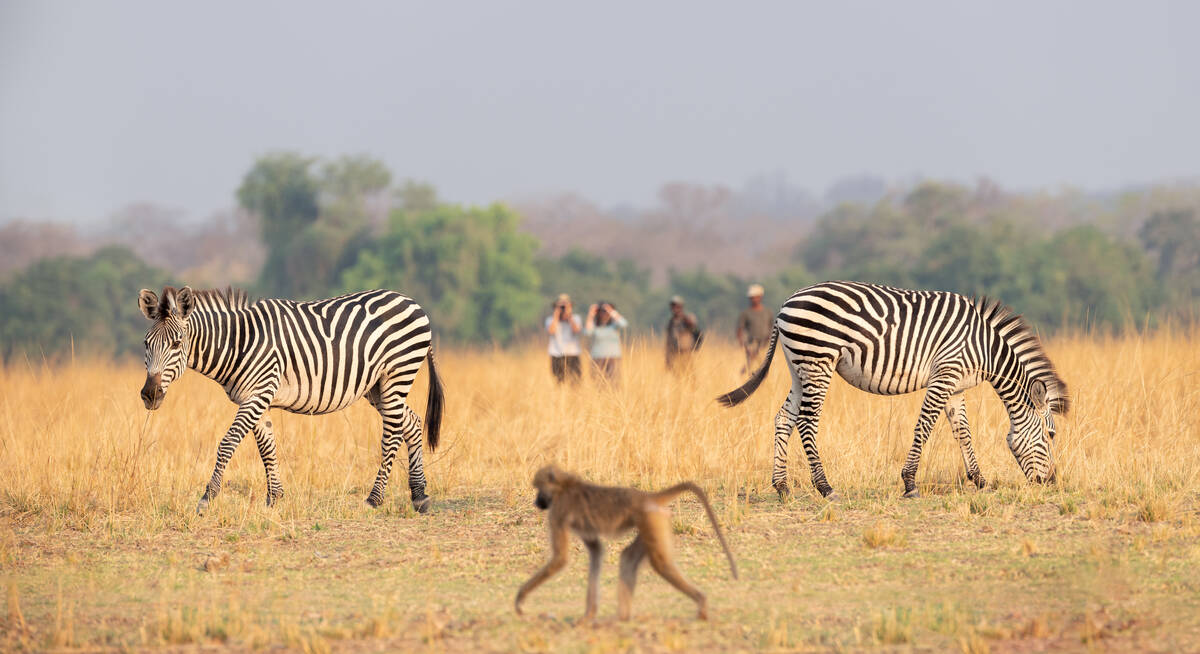
Vervet Monkey Safari
7 days • 2 locations
LUSAKA AIRPORT TO LUSAKA AIRPORT
Explore the world-class wildlife of Zambia’s South Luangwa and Lower Zambezi national parks in considerable luxury, guided by experts from two sister camps renowned for their excellent level of care.
US$8,780 - US$10,990 per person
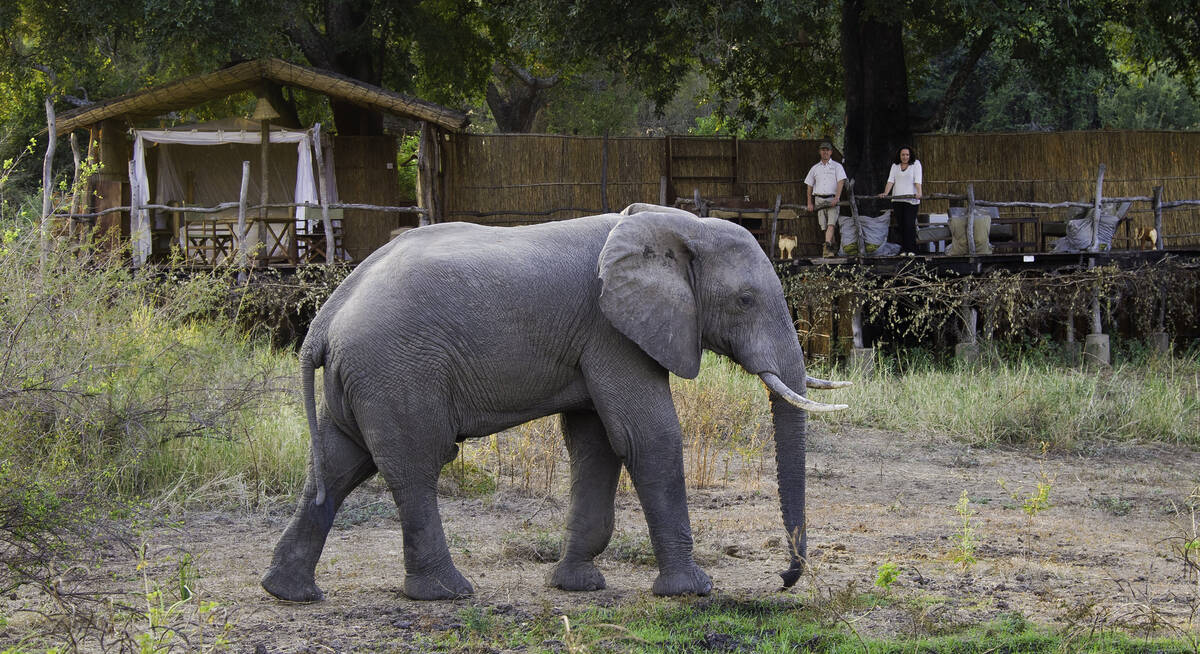
Fruit Bat Safari
6 days • 2 locations
LUSAKA AIRPORT TO LUSAKA AIRPORT
Offering a highly specialised experience, this safari uses two simple bases for access to South Luangwa and Kasanka National Parks. Visit between October and December when you will witness the world’s largest mammalian migration of millions of fruit bats.
US$5,750 - US$6,080 per person
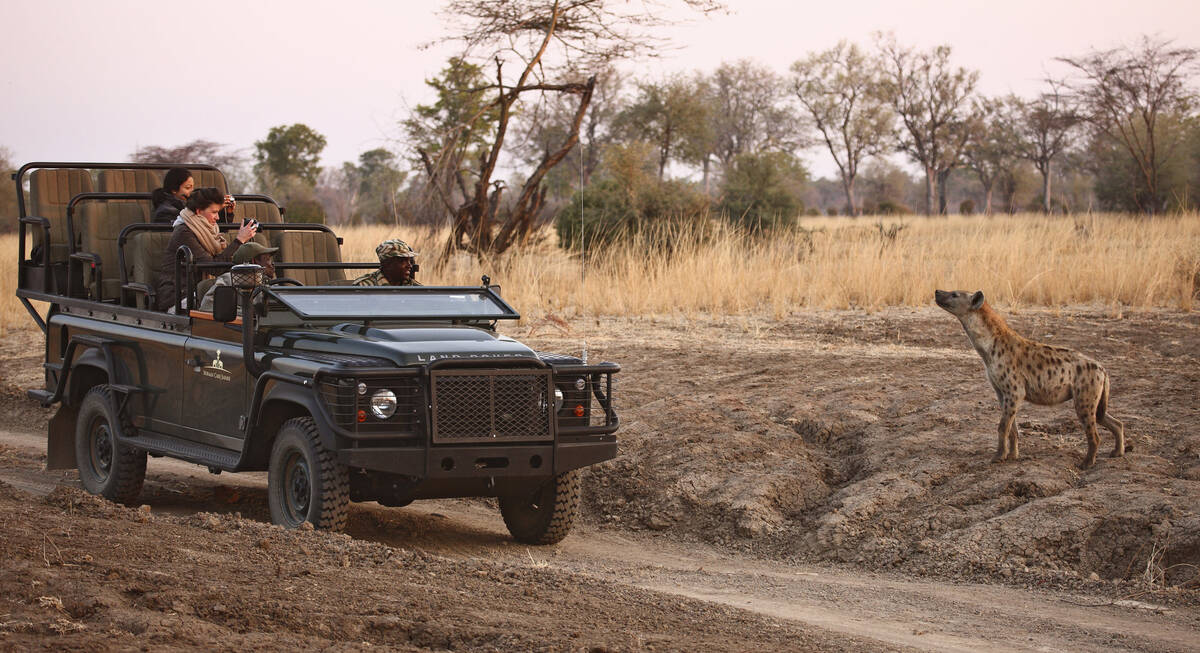
Puku Safari
11 days • 3 locations
LUSAKA AIRPORT TO LIVINGSTONE AIRPORT
Discover South Luangwa’s prolific wildlife before exploring the wildly remote pans of Liuwa Plain National Park and relaxing in one of the Livingstone area’s most romantic and exclusive hideaways. A safari of luxury, style and impressive diversity.
US$16,630 - US$19,920 per person
Our 39 top lodges & safari camps in South Luangwa National Park
Most places to stay in South Luangwa National Park aim at upmarket visitors from overseas. Given the park’s remote location, and the seasonal variations, this is not surprising. Most camps can operate for only for five or six months of the year, after which they pack up, returning to rebuild their camps after every rainy season.
Our suggestions for safari camps in the South Luangwa are based on personal experience. All camps listed here range from the substantial comfort of Chichele Presidential Lodge to the much more simple style of Island Bush Camp, and spread from north to south. Yet even the most rustic of camps is smart and comfortable with en-suite facilities; you certainly won’t be roughing it!
Ask us for more details of what’s where, and what’s likely to suit you best.

Tafika
One of the best camps in Zambia, Tafika is naturally built, combining excellent service and food with top guiding skills for a superb wildlife experience.

Nkwali
On the banks of the Luangwa River, with its own access to the national park, the intimate Nkwali is open year round.

Kaingo Camp
Small and owner-run, the riverside Kaingo occupies a a quiet but excellent game area, with a series of wildlife hides and a focus on photography.

Nsefu
One of the Luangwa's oldest camps, Nsefu is a great safari camp in a remote, beautiful and game-rich location with top-rate guiding.

Mwamba Bushcamp
Small, remote and owner-run, Mwamba offers first-class walking, 4WD safari drives and superb hides, with excellent guides and a real bush feel.

Tena Tena
One of the Luangwa's best camps, in a beautiful, remote bush location, Tena Tena is very small, exceedingly well-run and has top-rate guiding.

Chikoko Tree Camp
Chikoko Tree Camp is an excellent small, rustic bushcamp that concentrates on walking safaris, and is run by a top-quality operation.

Big Lagoon Camp
Big Lagoon Camp is a great little rustic bushcamp built to high standards that focuses on excellent walking safaris, with the emphasis on top wildlife guides.

Luangwa River Camp
Luangwa River Lodge is a small and consciously stylish lodge in the Mfuwe area, overlooking the Luangwa River and the South Luangwa National Park beyond – an area renowned for great game.

Flatdogs Camp
A relatively big safari camp, Flatdogs offers value for money with great guiding and good food in a comfortable, relaxed setting.

Kapani Lodge
Kapani Lodge is now the main office base for Norman Carr Safaris, one of the Luangwa's oldest safari operations.

Mchenja Bushcamp
Set in a shady ebony grove on the banks of the Luangwa, Mchenja is a smart tented bushcamp. It combines well with Kakuli and Nsolo – its sister camps with a focus on walking safaris.
Excursions in South Luangwa National Park
Optional, extra day-trips and excursions that are possible while you’re staying in South Luangwa National Park. Talk to us: these excursions are usually best arranged before you go.
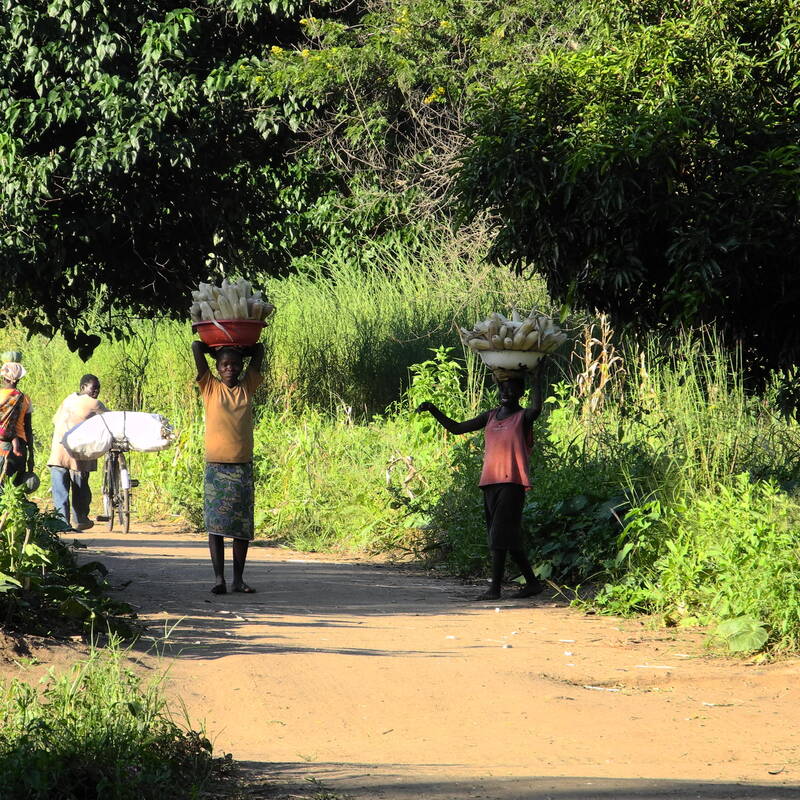
Kawaza Village Visit
Two to three hours
Just outside Zambia's South Luangwa National Park lies a normal, working rural African village which is open and welcoming to visitors to the Luangwa valley. There is nothing artificial or contrived about Kawaza Village, and it offers a rare opportunity to experience and appreciate Kunda culture, and meet local Zambians.
More about Kawaza Village Visit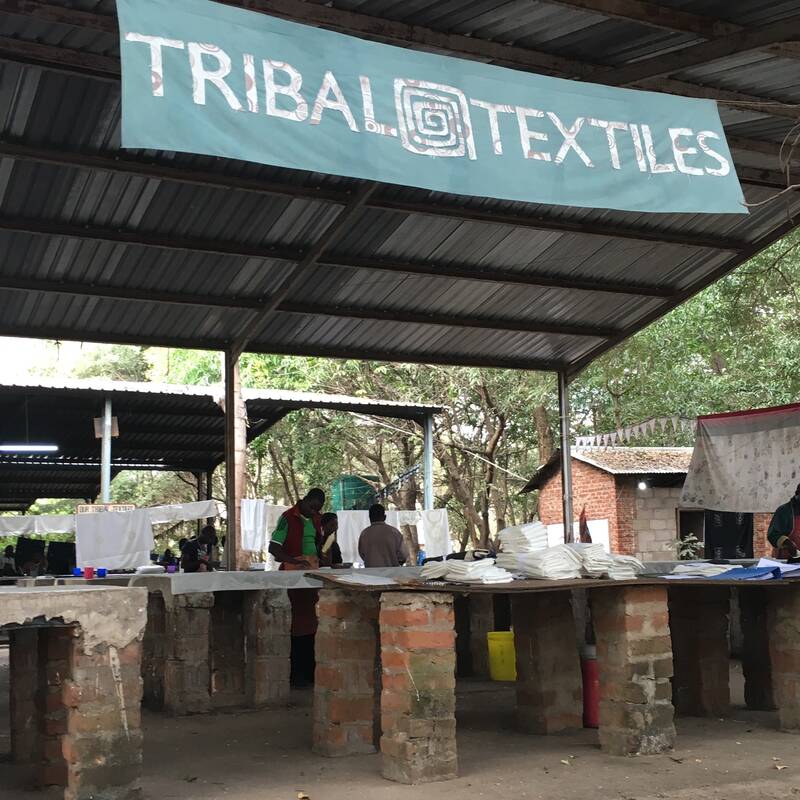
Tribal Textiles Tour
One - two hours
Visit the Tribal Textiles workshop, where hand-painted textiles are produced by more than a hundred local people. The workshop is close to Mfuwe Airport, so is ideally placed for a stop en route to/from the South Luangwa. With products ranging from cushion covers to bags and T-shirts, it's a great place for souvenir shopping while at the same time supporting the local community.
More about Tribal Textiles Tour
Looking for inspiration on where to travel next?
Visit our trip chooser to explore your options and find inspiration for your perfect African adventure
Inspire meFrequently Asked Questions
South Luangwa FAQs
So where exactly is South Luangwa National Park? And how do I get there? These and many more seemingly trivial questions – such as what you need for a walking safari – are often asked by our travellers, and they’re important.
We have tried to answer some of these questions here, but you may well have others. If so, please don’t hesitate to contact us. The Expert Africa team’s knowledge of the South Luangwa is based on years of personal experience and we would be happy to help.
Where is South Luangwa National Park?
As the crow flies, the South Luangwa is some 455km (283 miles) north-east of Lusaka, the Zambian capital, or 530km (354 miles) by road. Livingstone and the Victoria Falls, also to the south-west, are almost as far again in the same direction.
How do you get to and around the South Luangwa?
The easiest of these options is to fly in, both because it is the most relaxing and because your time is relatively limited. This is how almost all the trips arranged by Expert Africa are set up.
From Lusaka we usually organise a short 70-minute flight with Proflight, which takes you to Mfuwe Airport. On arrival, you will be met by someone from your safari camp, and transferred to the camp. There you will be welcomed by the team with some time to settle in, before heading out on an activity such as a safari walk or drive.
Is the South Luangwa good for a family safari?
Now to the plus points! Many lodges, including Flatdogs Camp and Tafika, welcome older children, with family-friendly accommodation, children's menus and a flexible approach to activities. Further afield, the more adventurous can even choose to spend a night or two camping.
More relaxed, especially with younger children aged around 7+, is one of the South Luangwa's safari houses: Robin's House and the larger Luangwa Safari House. Both offer exclusivity of activities, their own kitchen and chef, and space for children to run around without upsetting other guests.
Just ask us about the many options; we know all these camps from first-hand experience!
What is there to do on a South Luangwa safari?
Game drives usually take place in open-topped 4WD vehicles, and an afternoon drive may continue after dark in search of the park’s nocturnal creatures. On a walking safari, you can expect a leisurely pace, with fascinating input from an expert guide, accompanied by an armed ranger.
One or two of the South Luangwa camps, such as Kaingo, where there are several hides well suited to keen photographers, offer a third daily activity. And in the so-called “emerald season”, a handful of camps operate safaris that include river trips.
Do I need to be fit to go on a walking safari – and what should I take?
That said, the terrain is predominantly flat, and the pace leisurely – with plenty of time allowed for less-mobile guests. Walks normally take place in the early morning or late afternoon, when temperatures are relatively cool.
Loose, comfortable clothes are ideal, in muted tones of creams, greens or browns. Long trousers and long-sleeved shirts help to protect against insects, a hat is important, and comfortable shoes are essential.
Do bring a bottle of water, perhaps in a small backpack, together with a pair of binoculars and your camera – though a walking safari isn’t suited to heavy camera kit. Your safari guide will usually provide drinks and snacks.
Other areas in Zambia
A safari in South Luangwa National Park can be ideal as a standalone holiday, but it also combines well with Zambia's equally renowned Lower Zambezi National Park.
Unrivalled in terms of scale is the vast and less well-known Kafue National Park, defined by the Kafue River that is an irresistible draw for wildlife. In contrast, there's the magic of the North Luangwa, where a handful of tiny camps specialise in exploring on foot, while for sheer remoteness, don't miss Liuwa Plain.
Rather more estoteric is to witness the bat migration in Kasanka National Park at the end of the year. Hike in total privacy at Mutinondo Wilderness. Or come face to face with an English stately home in the bush at Shiwa Ng'andu. Then round it all off with the majesty of the Victoria Falls, considered to be one of the seven natural wonders of the world.
